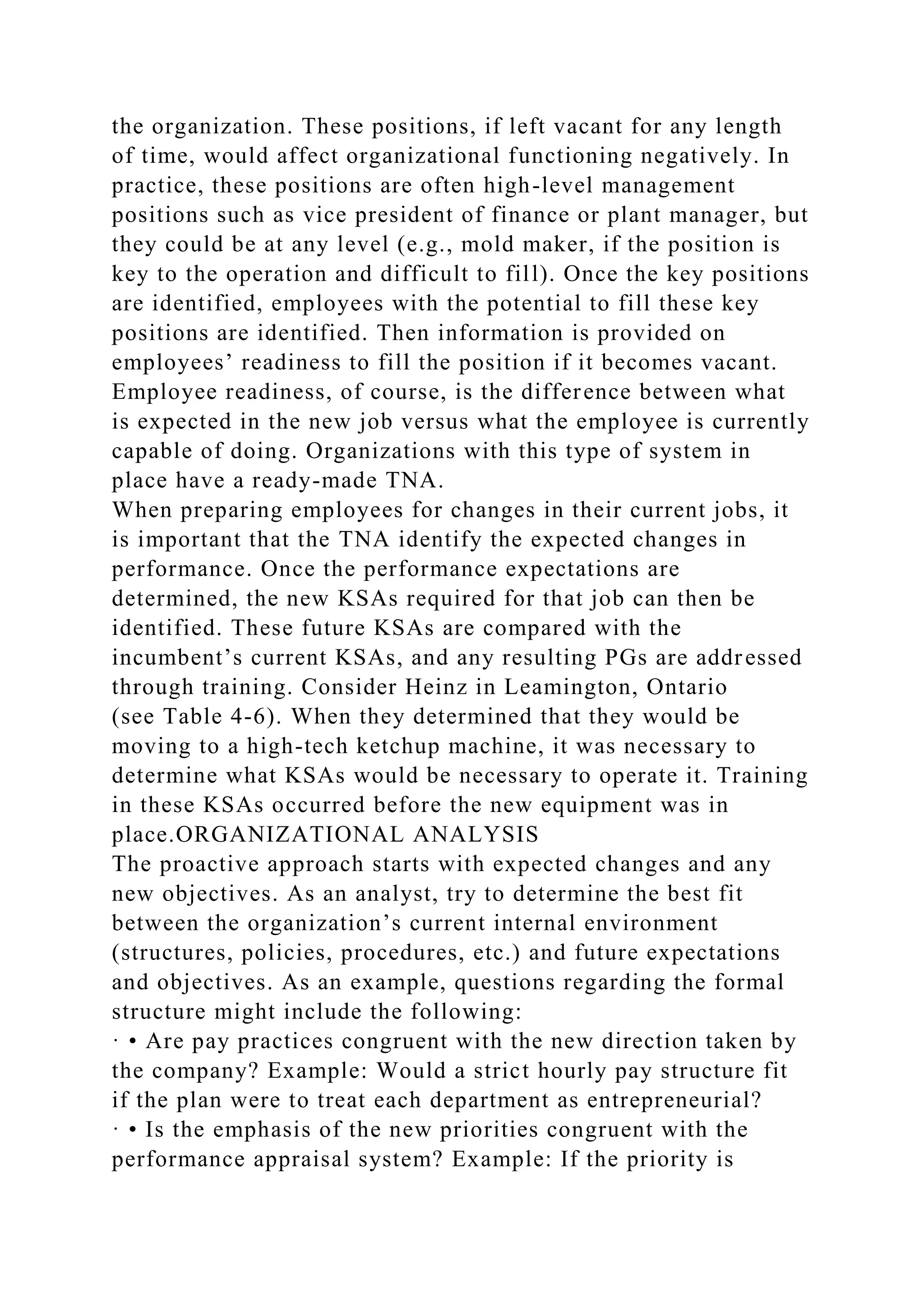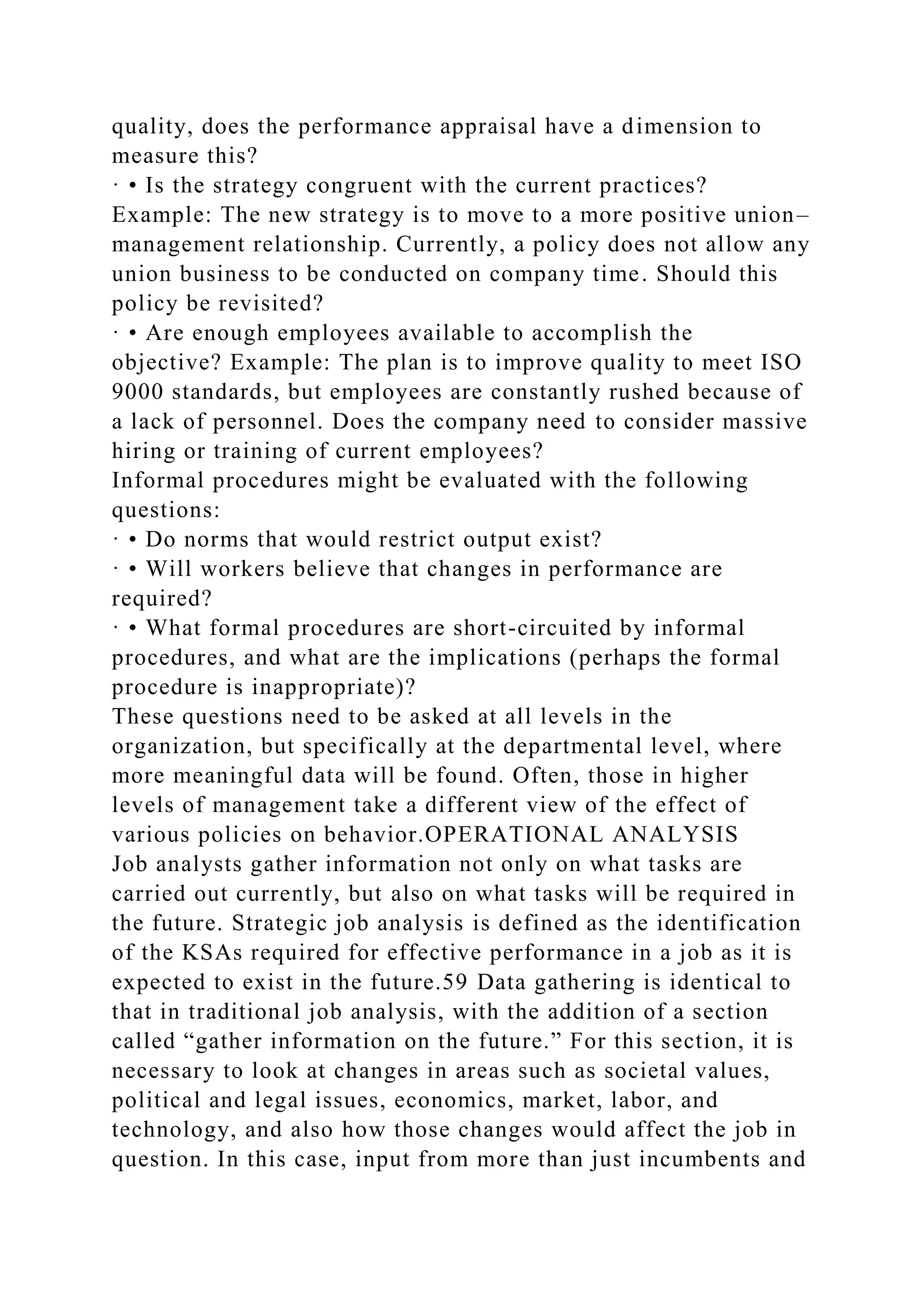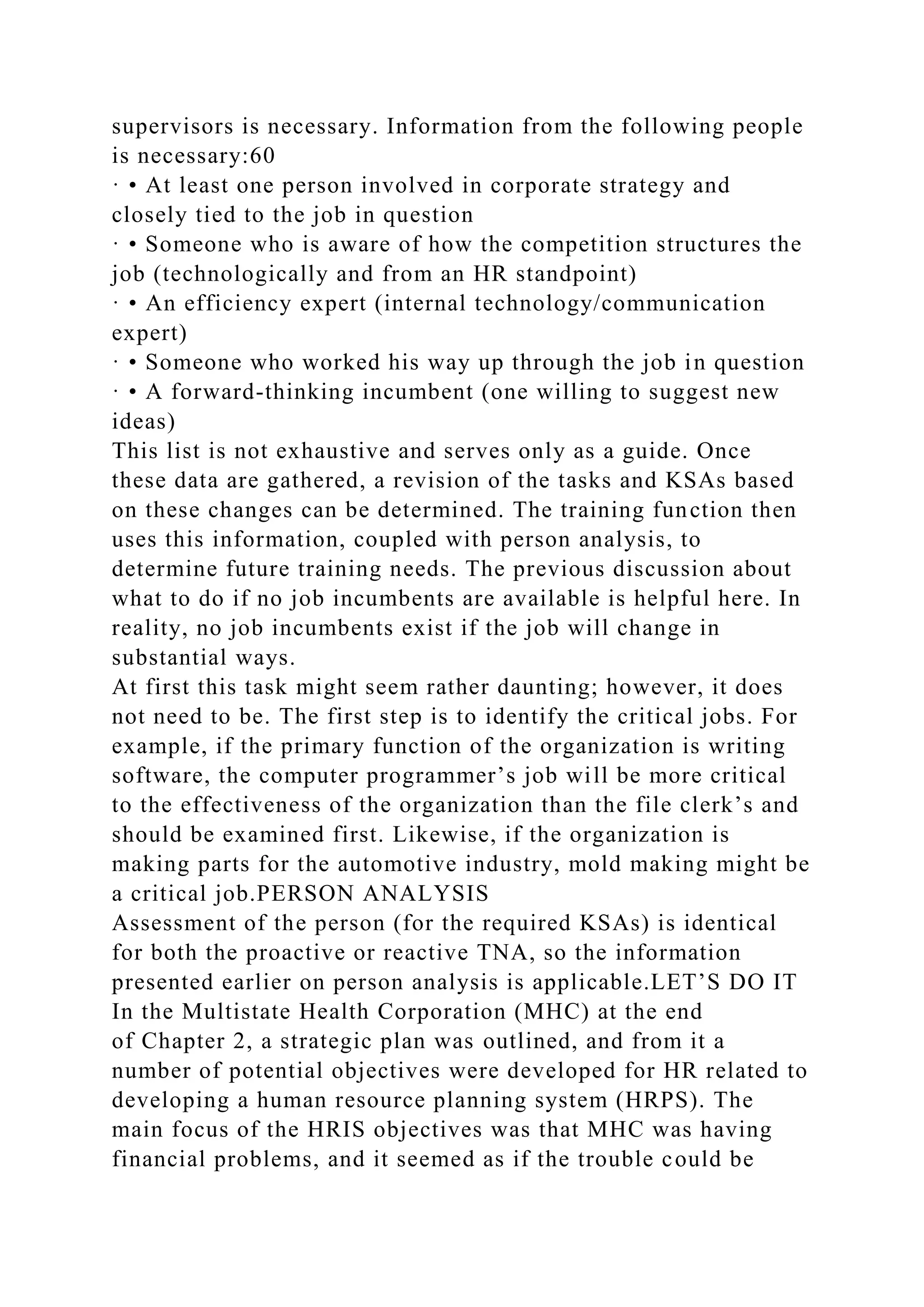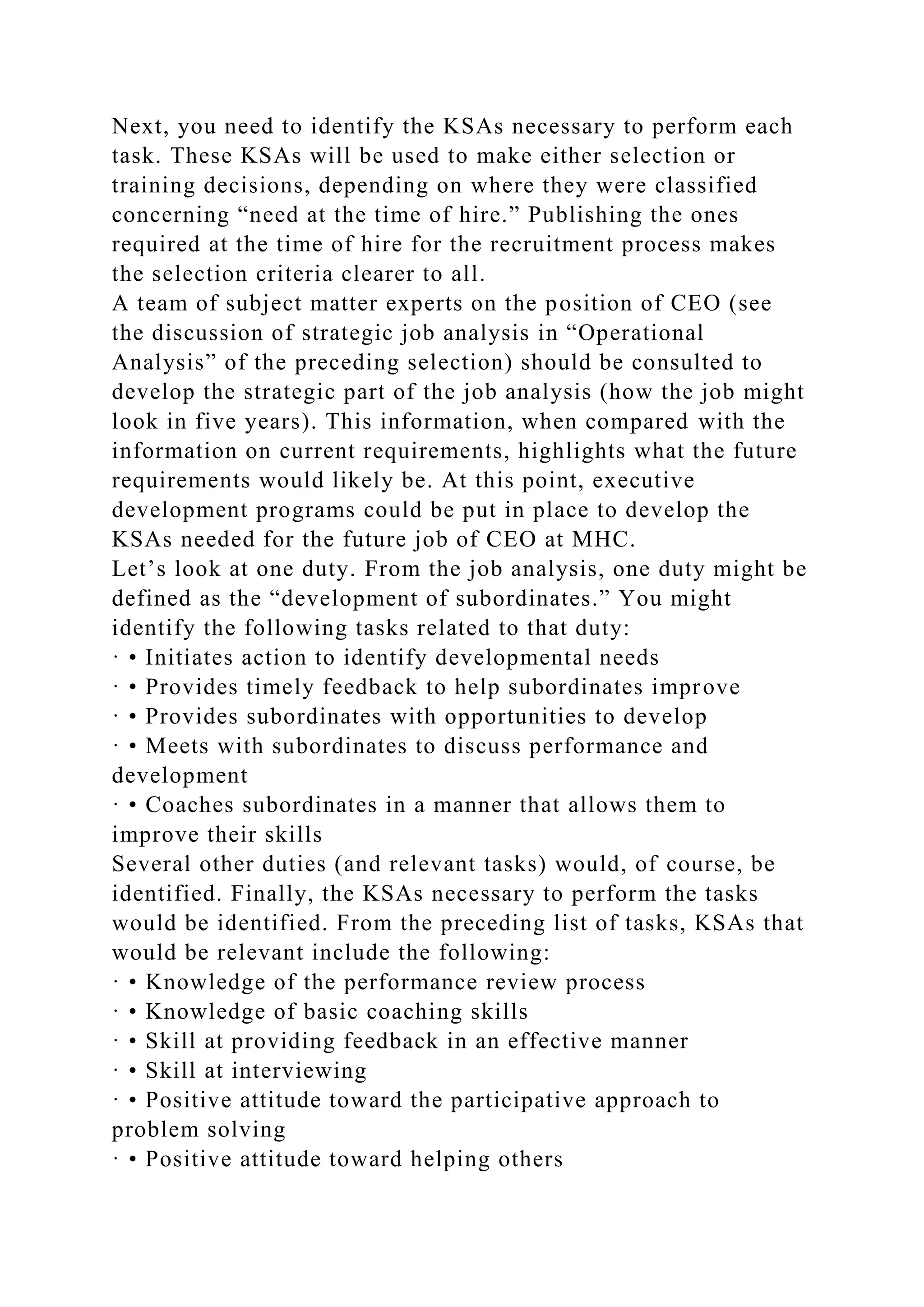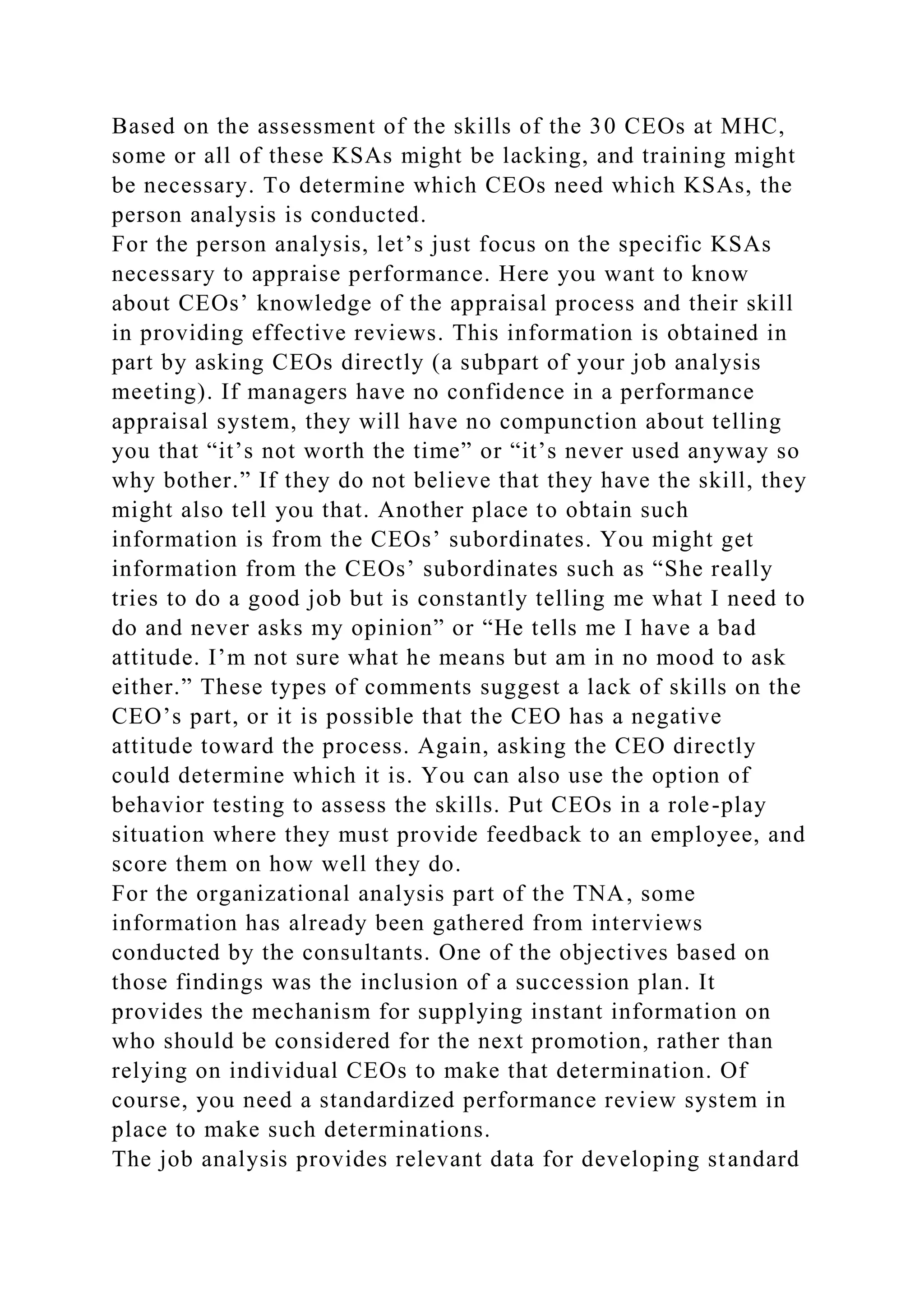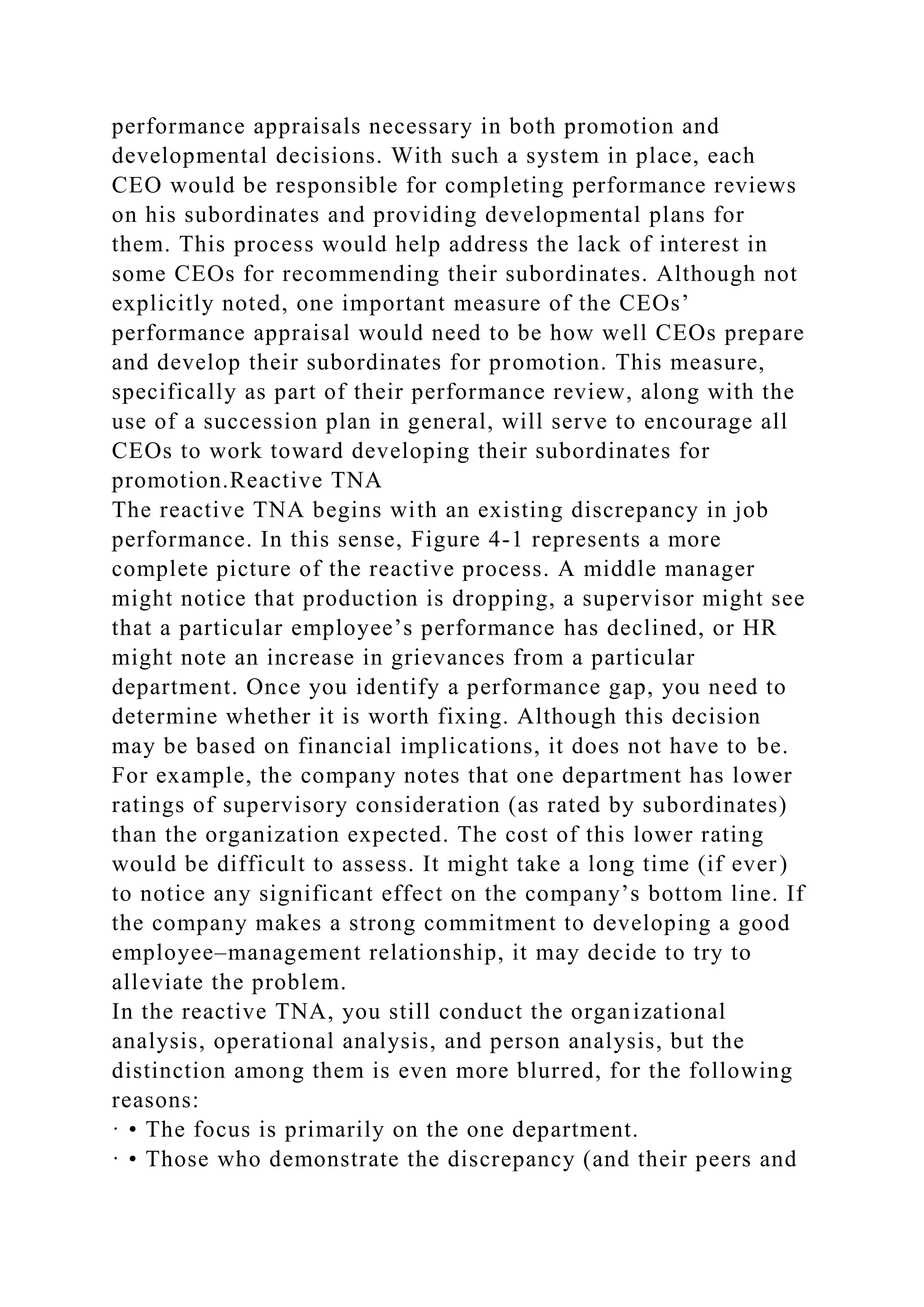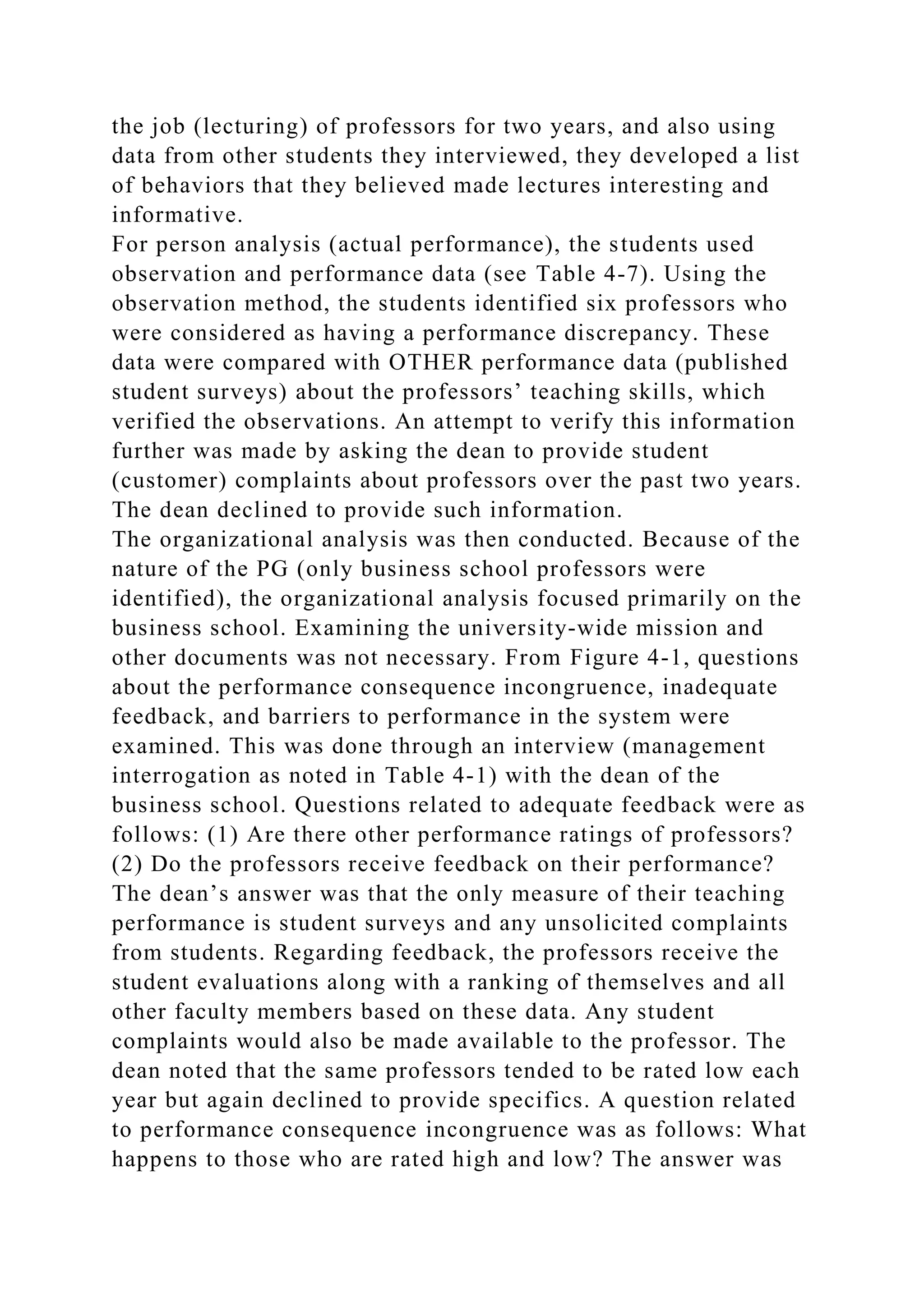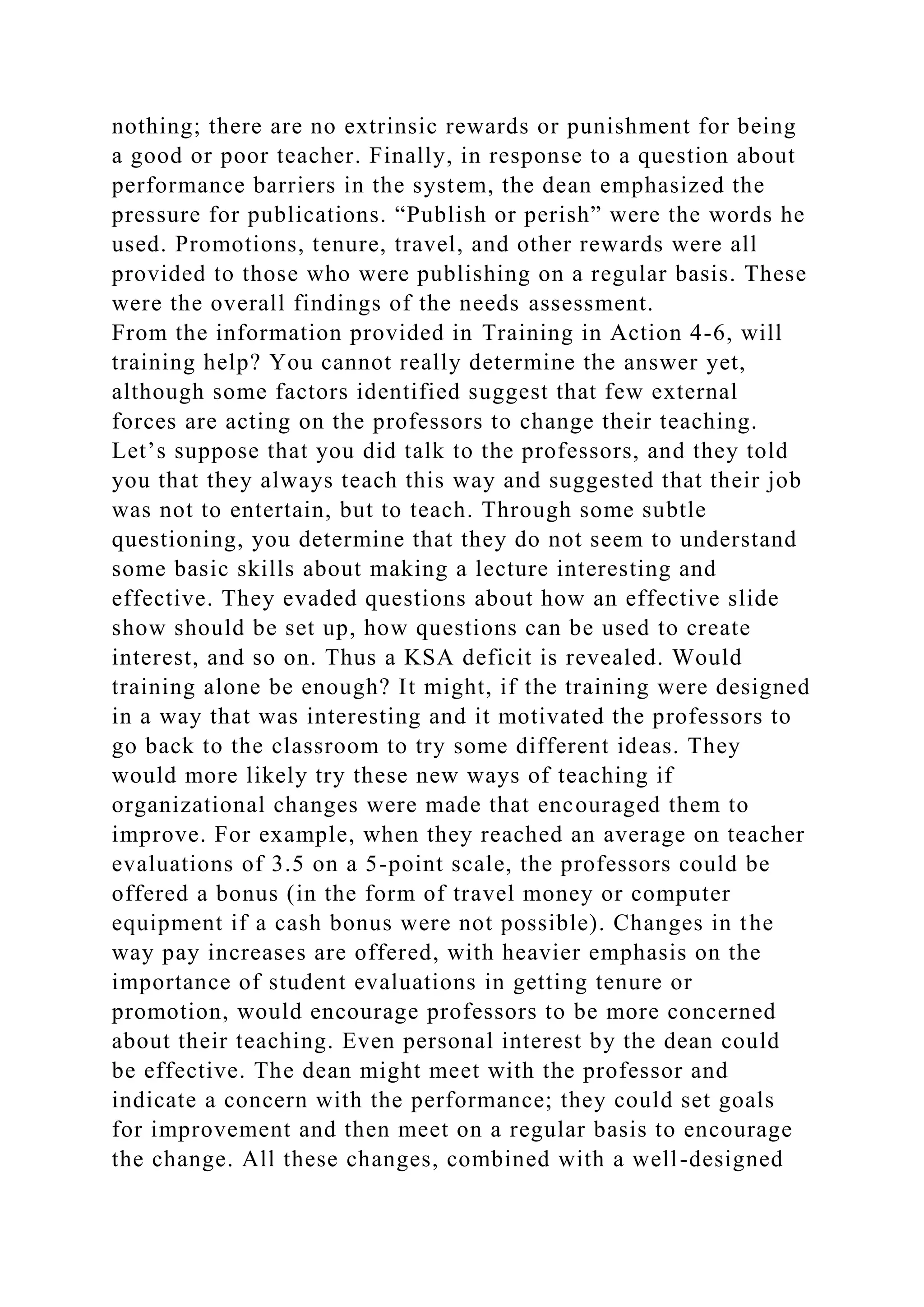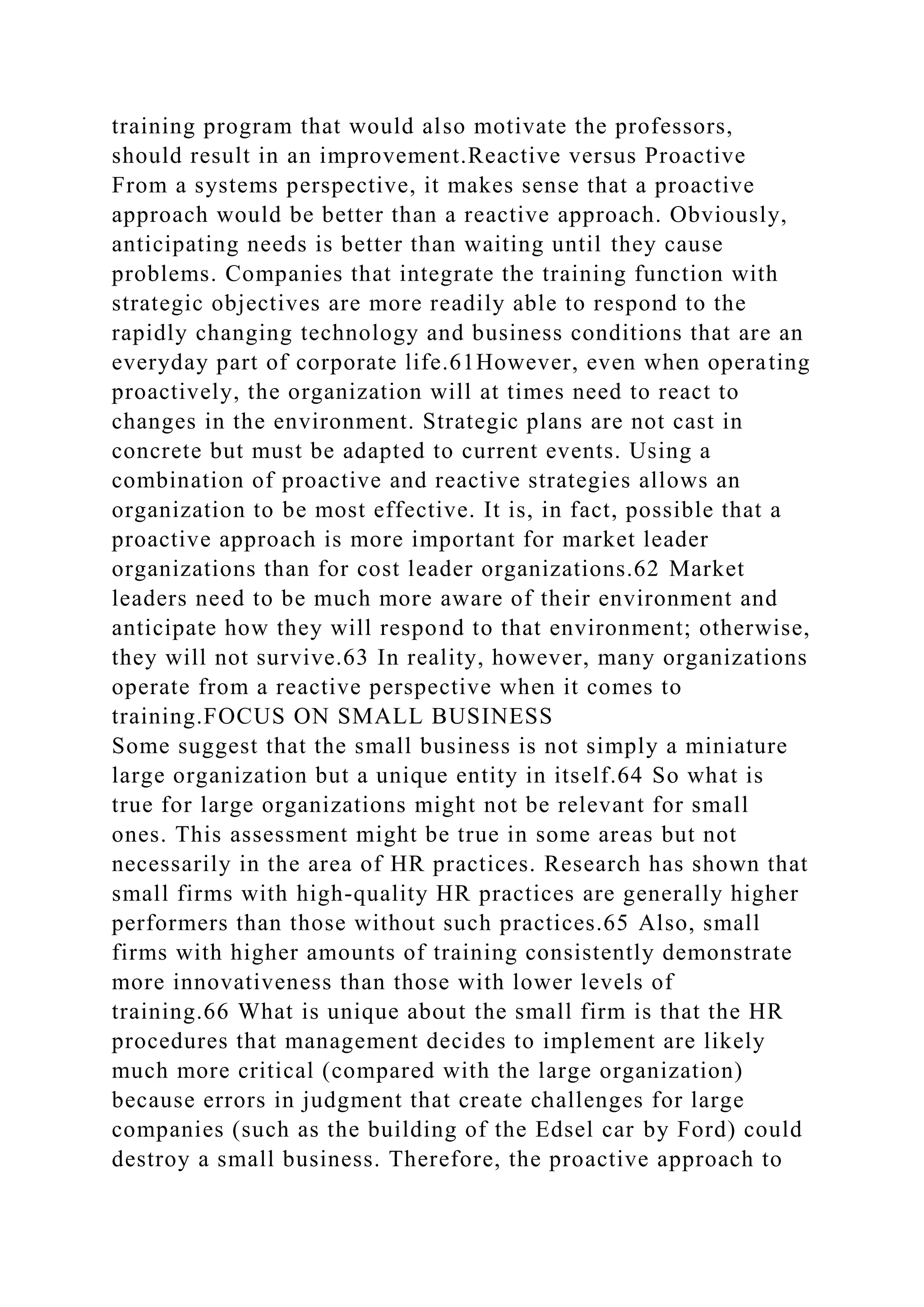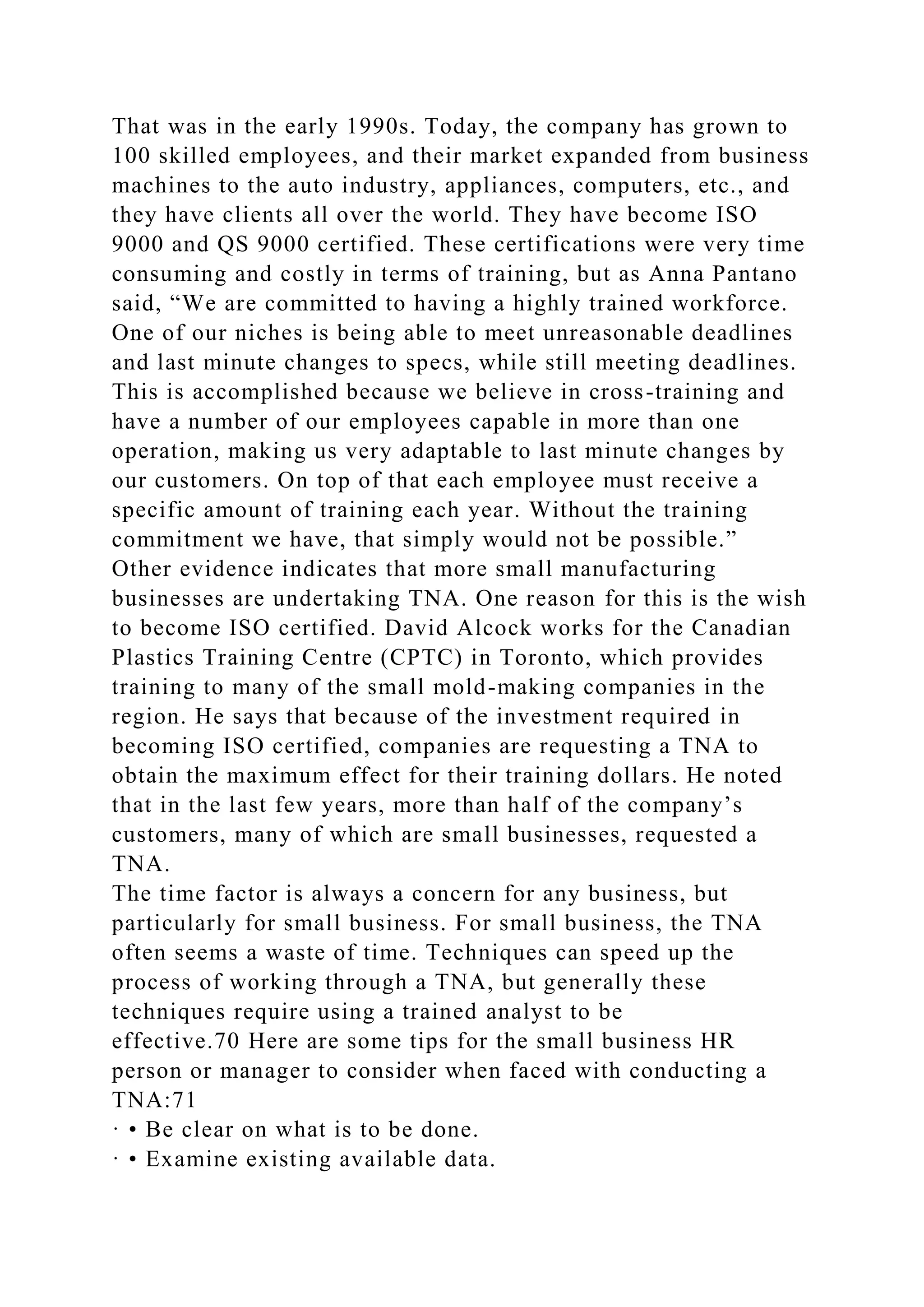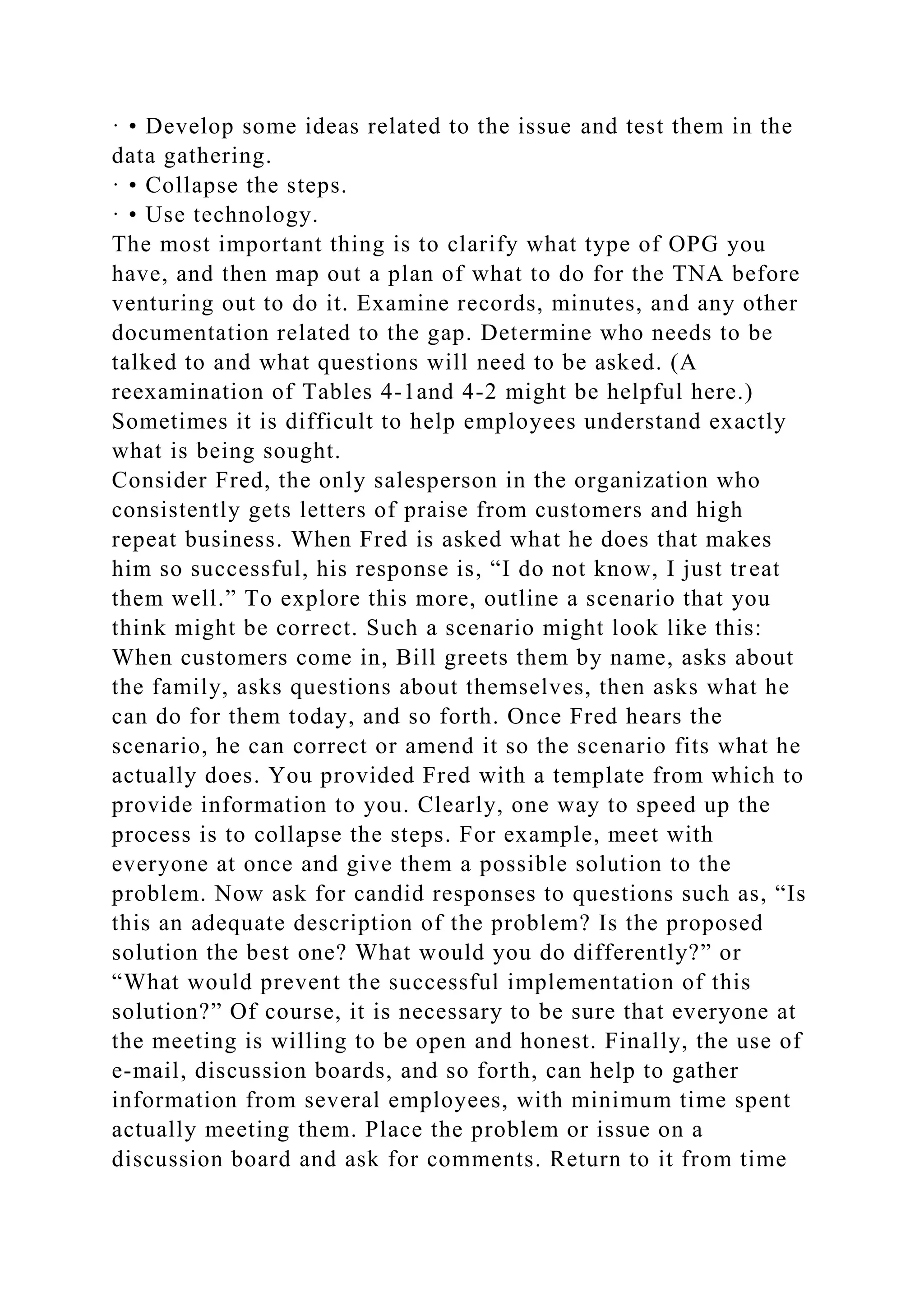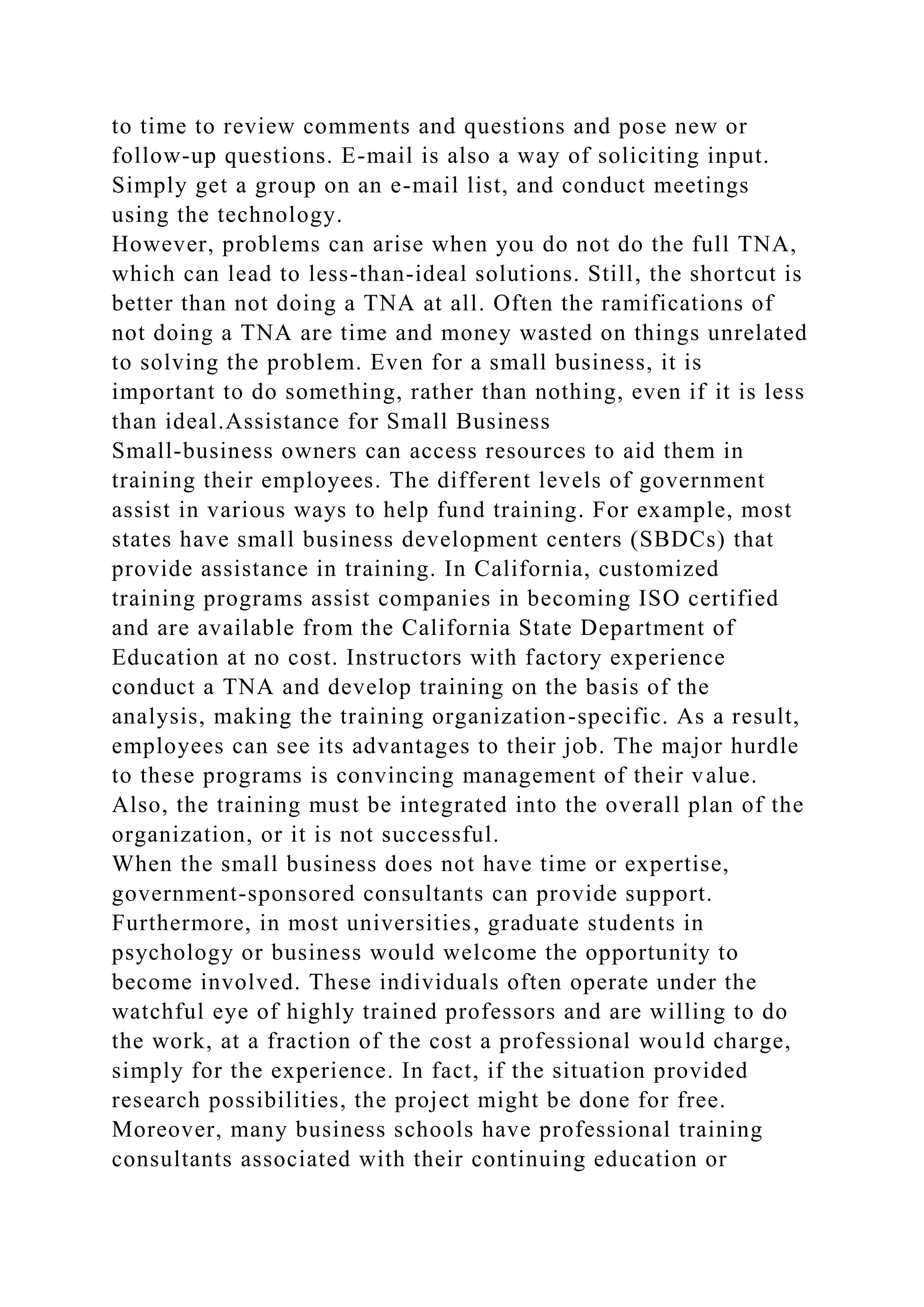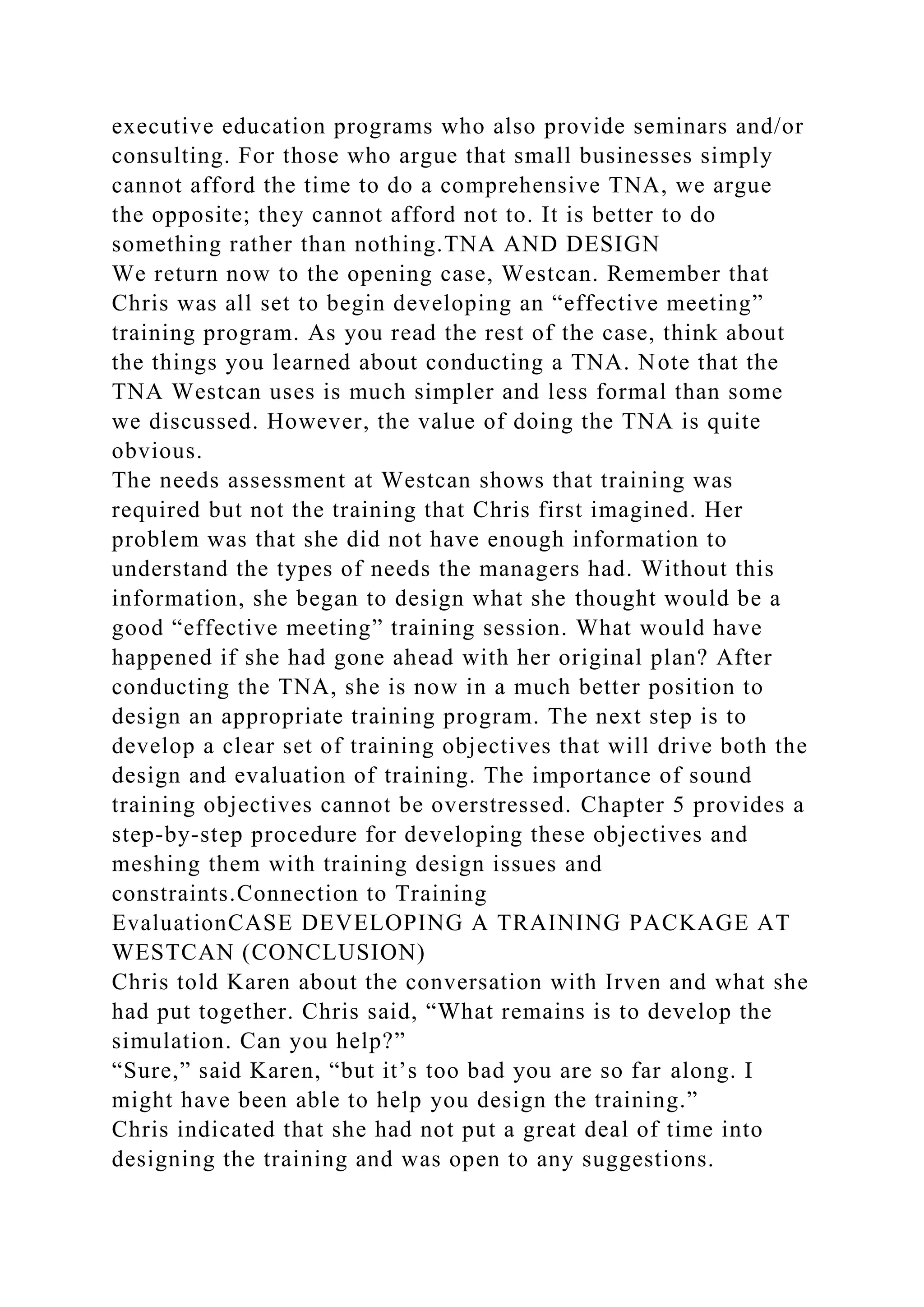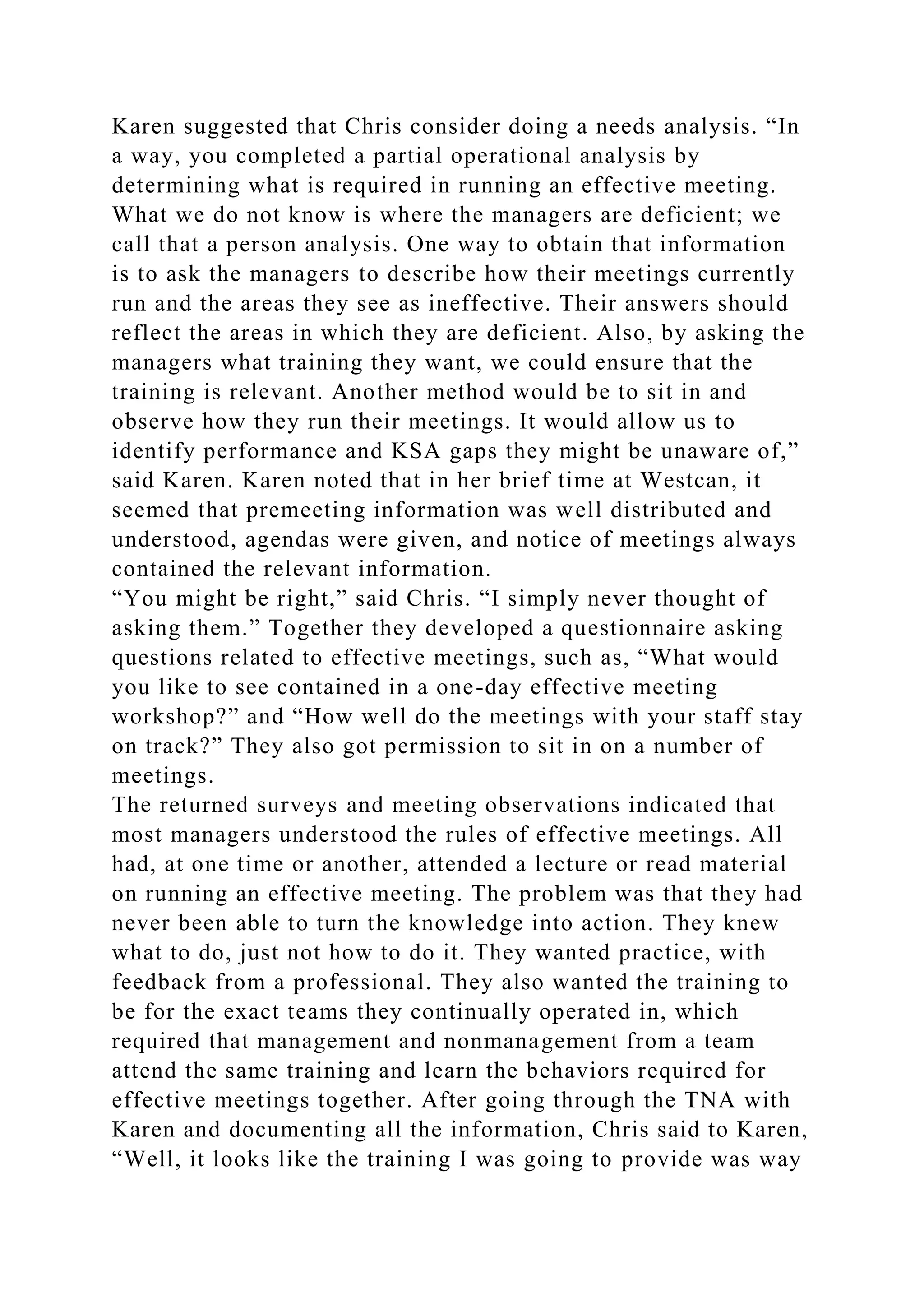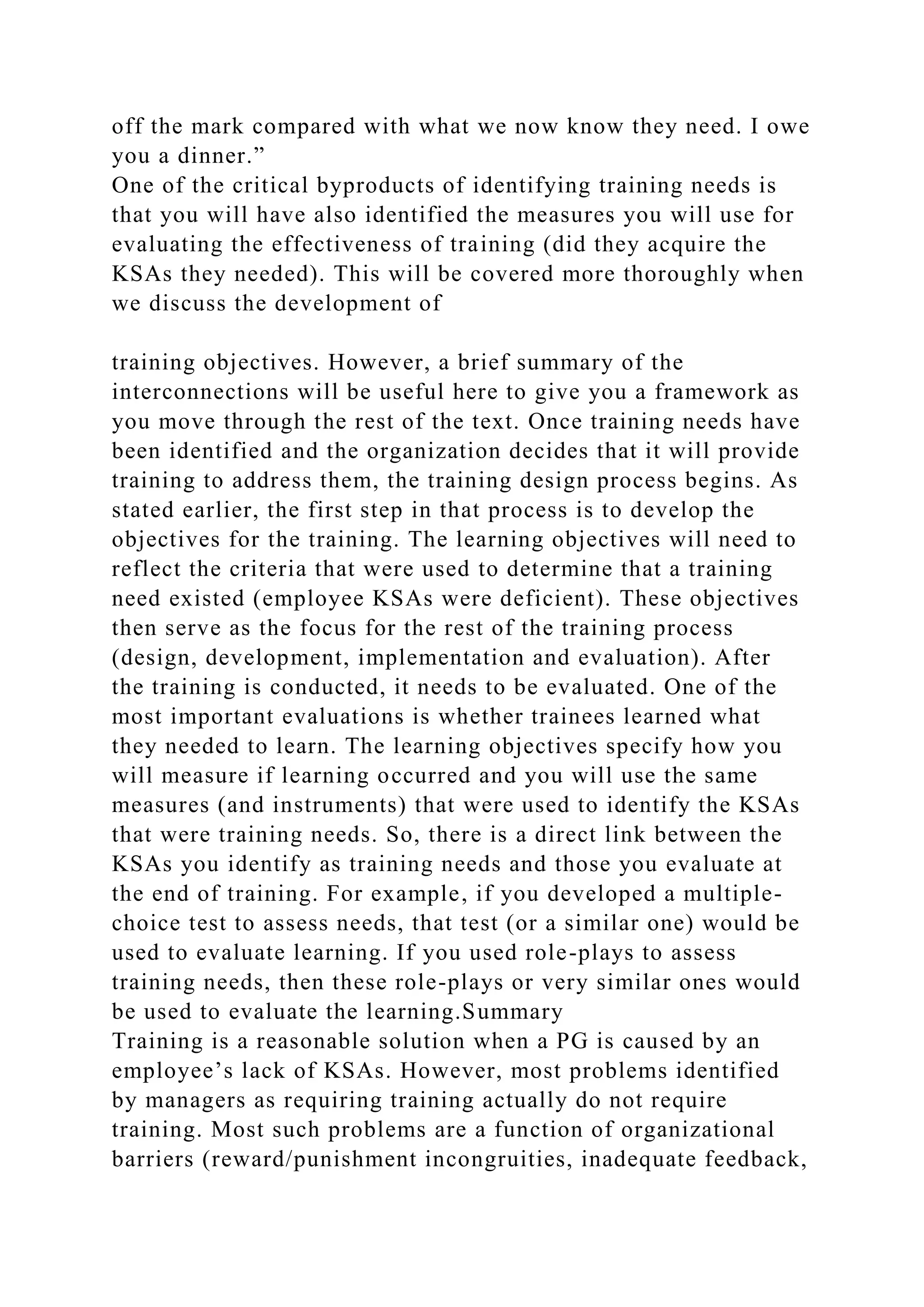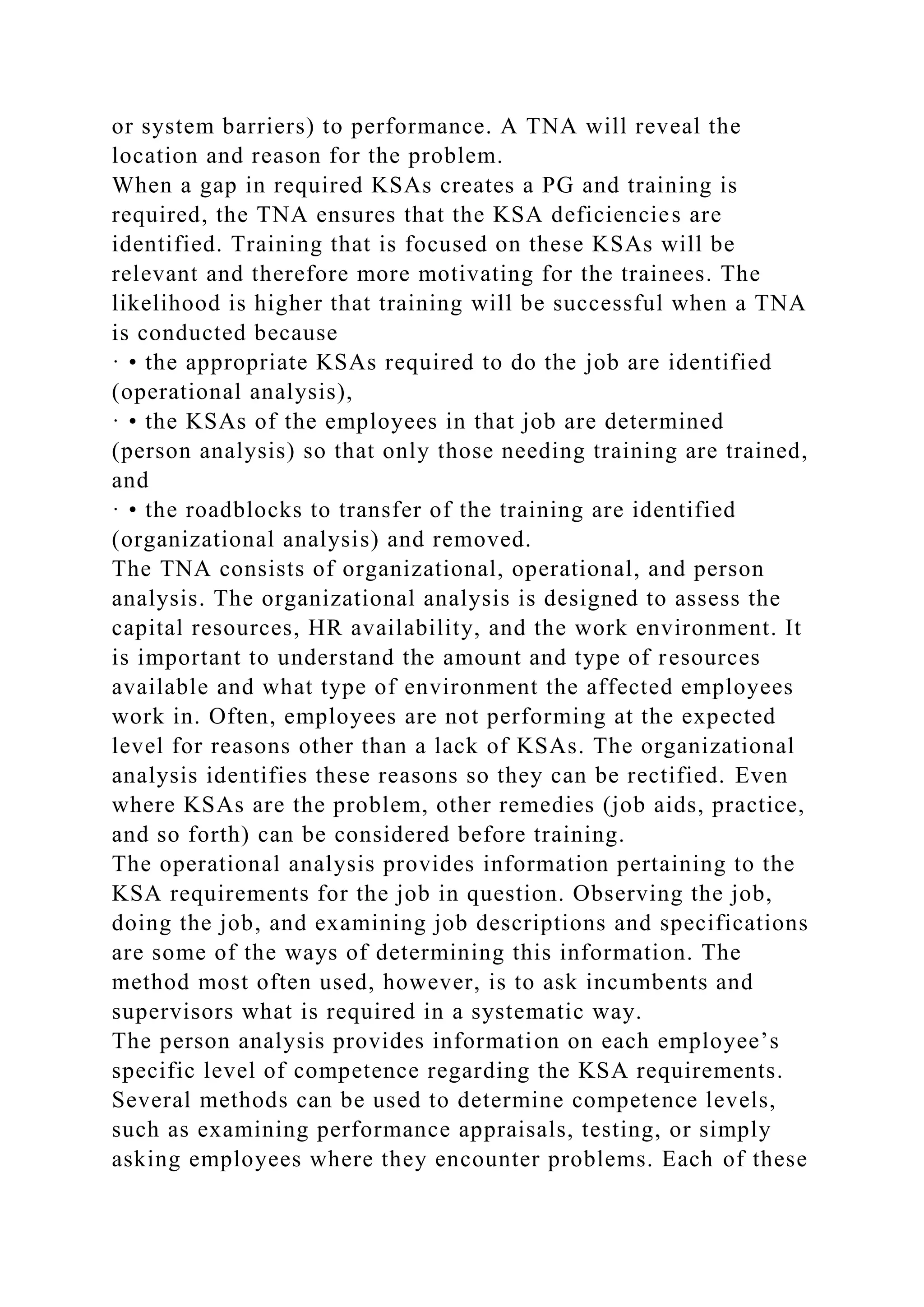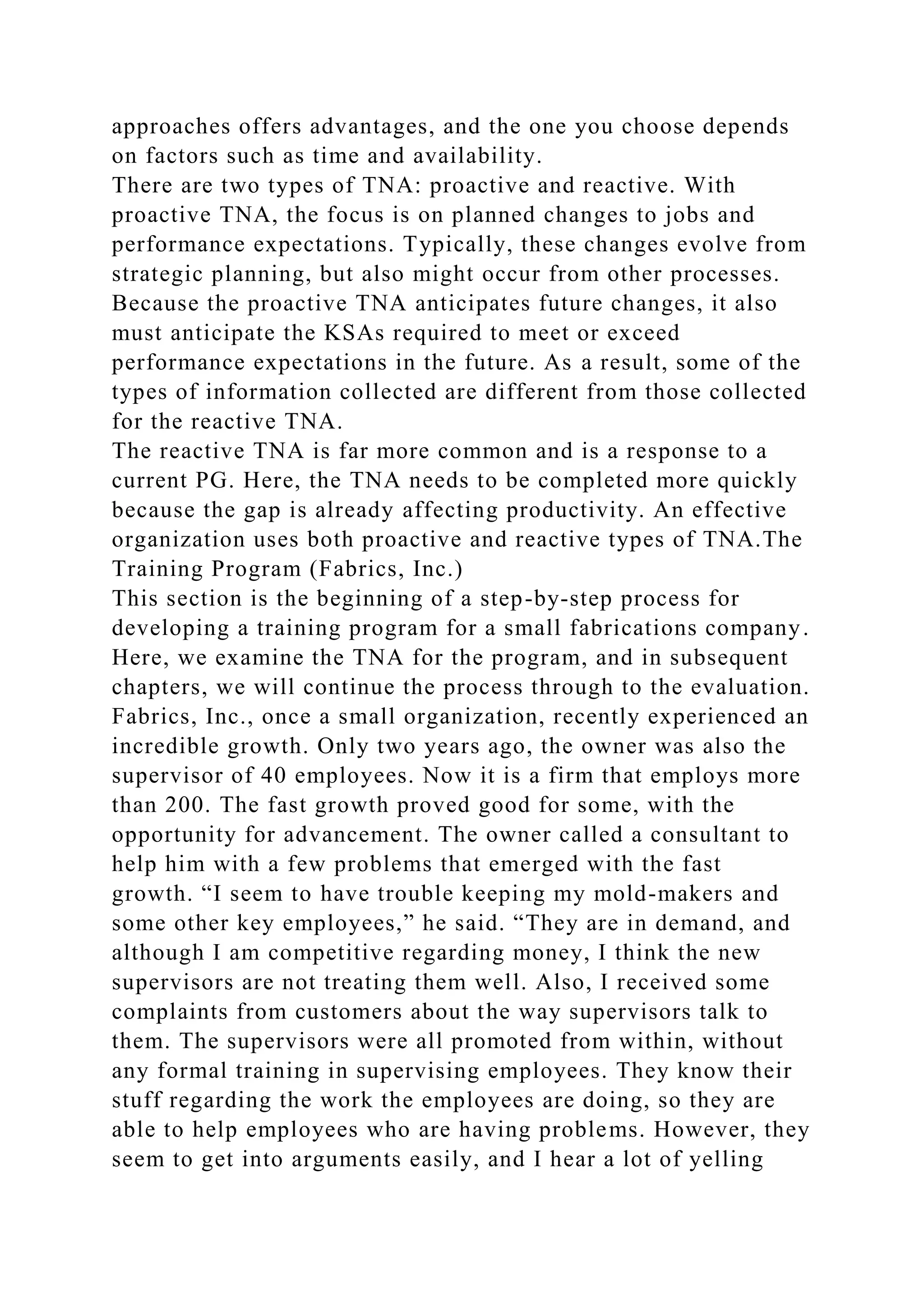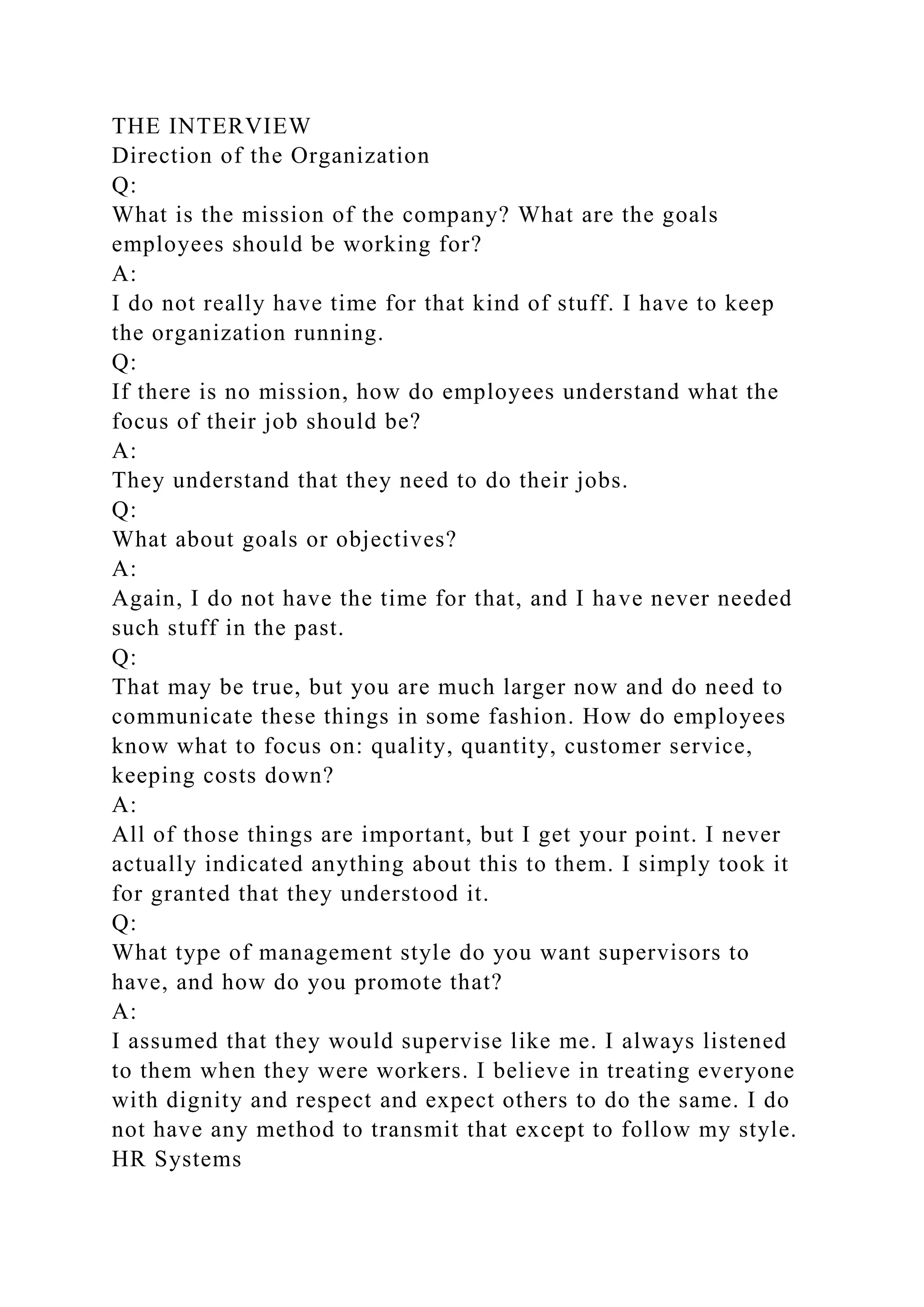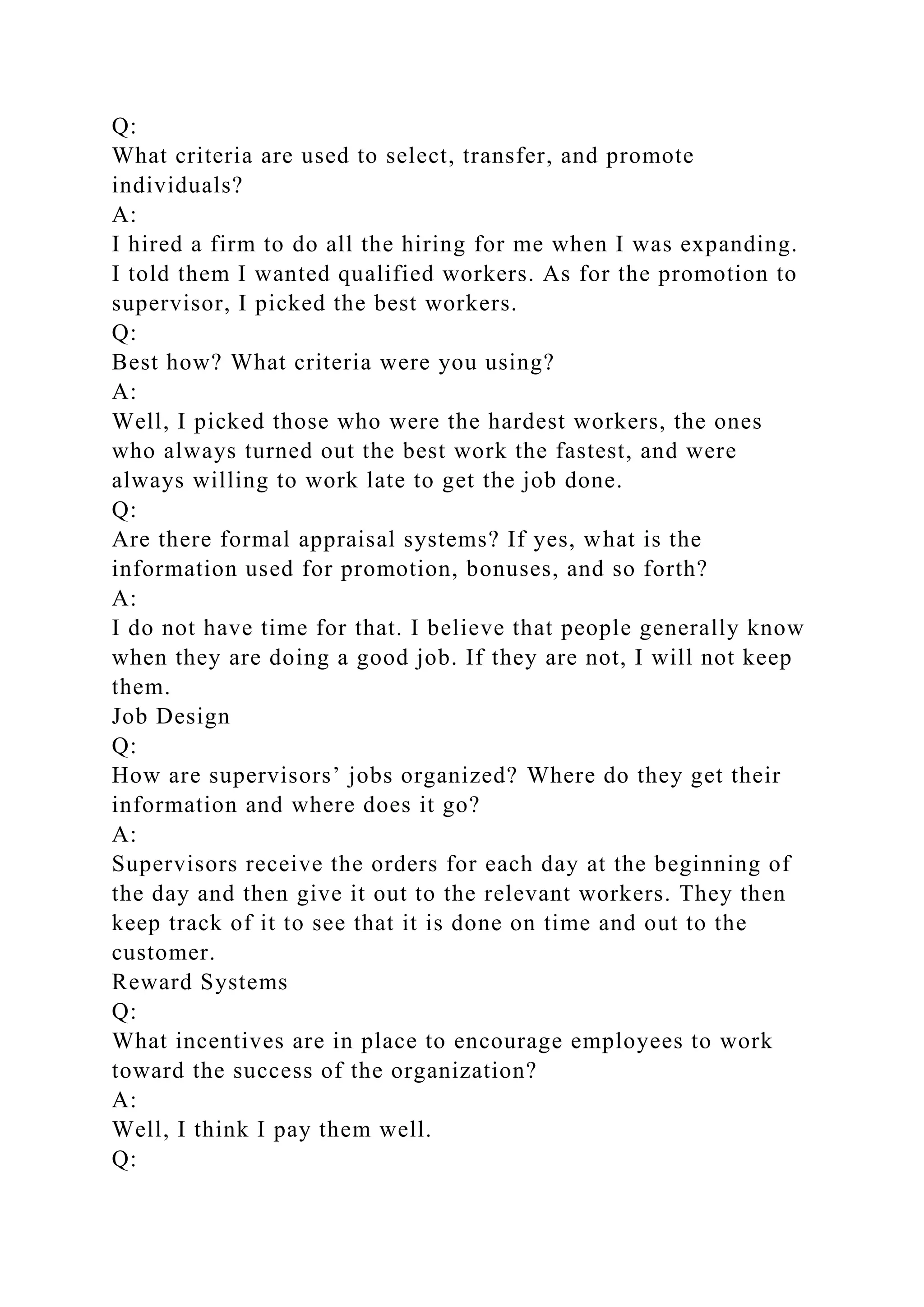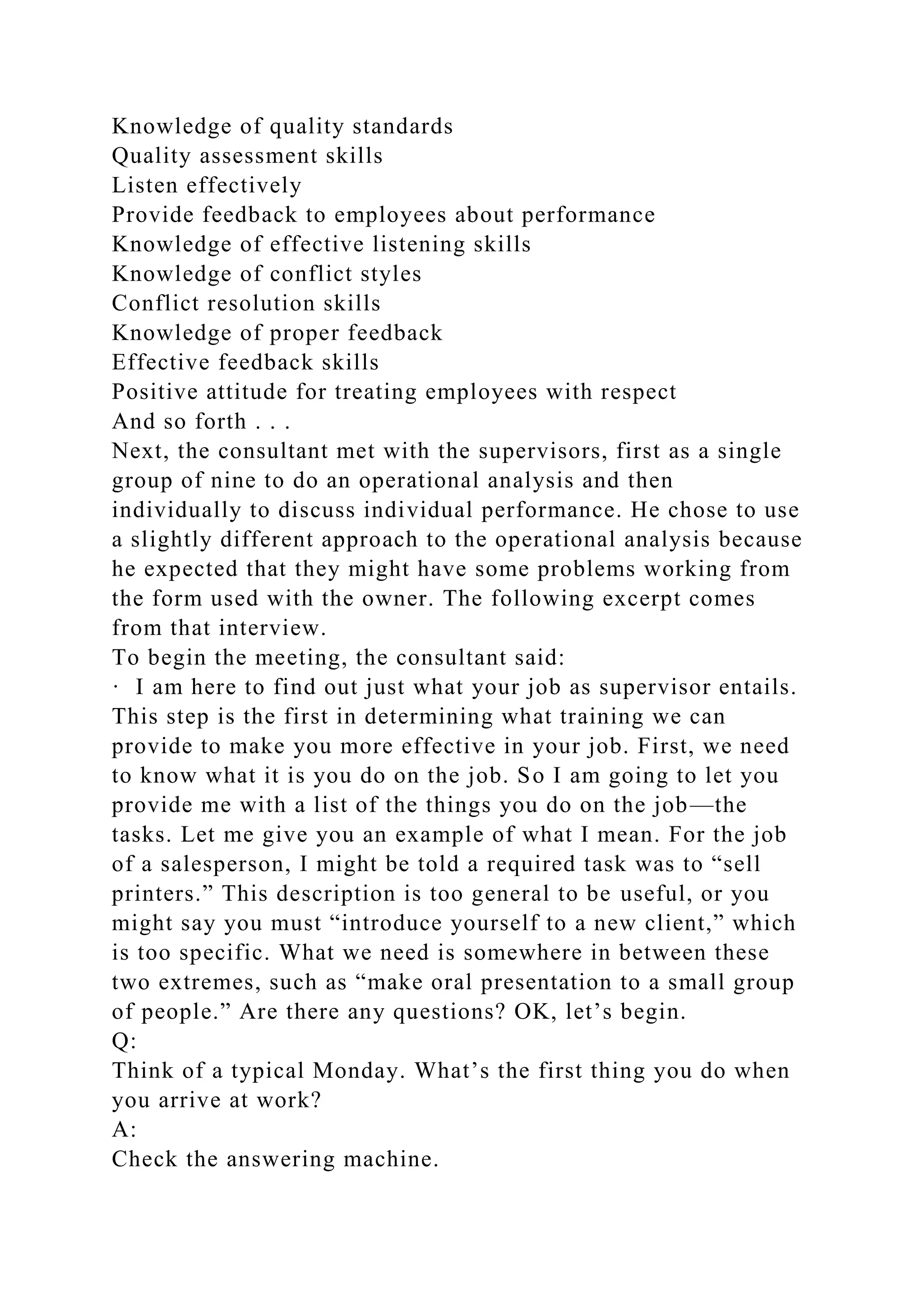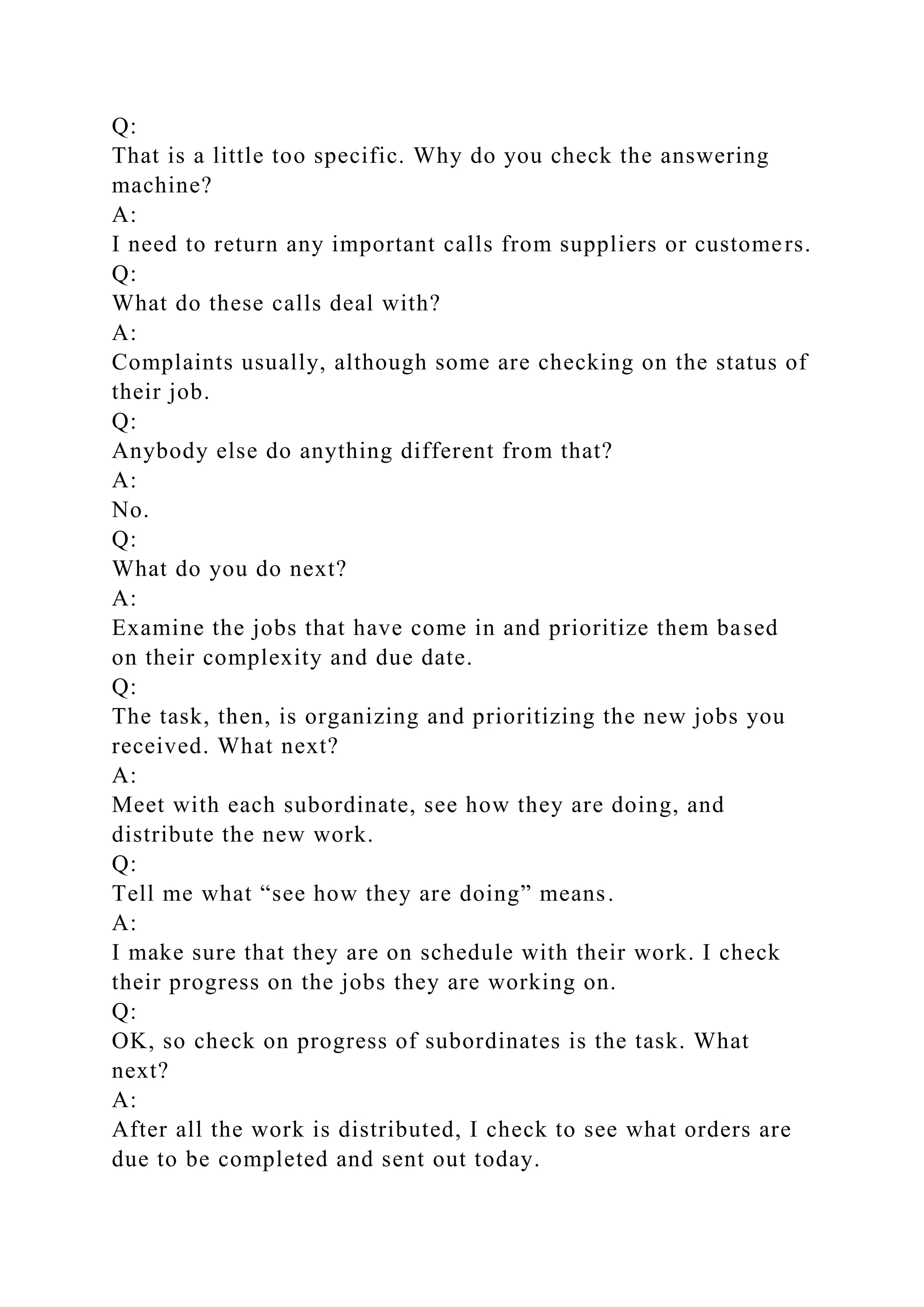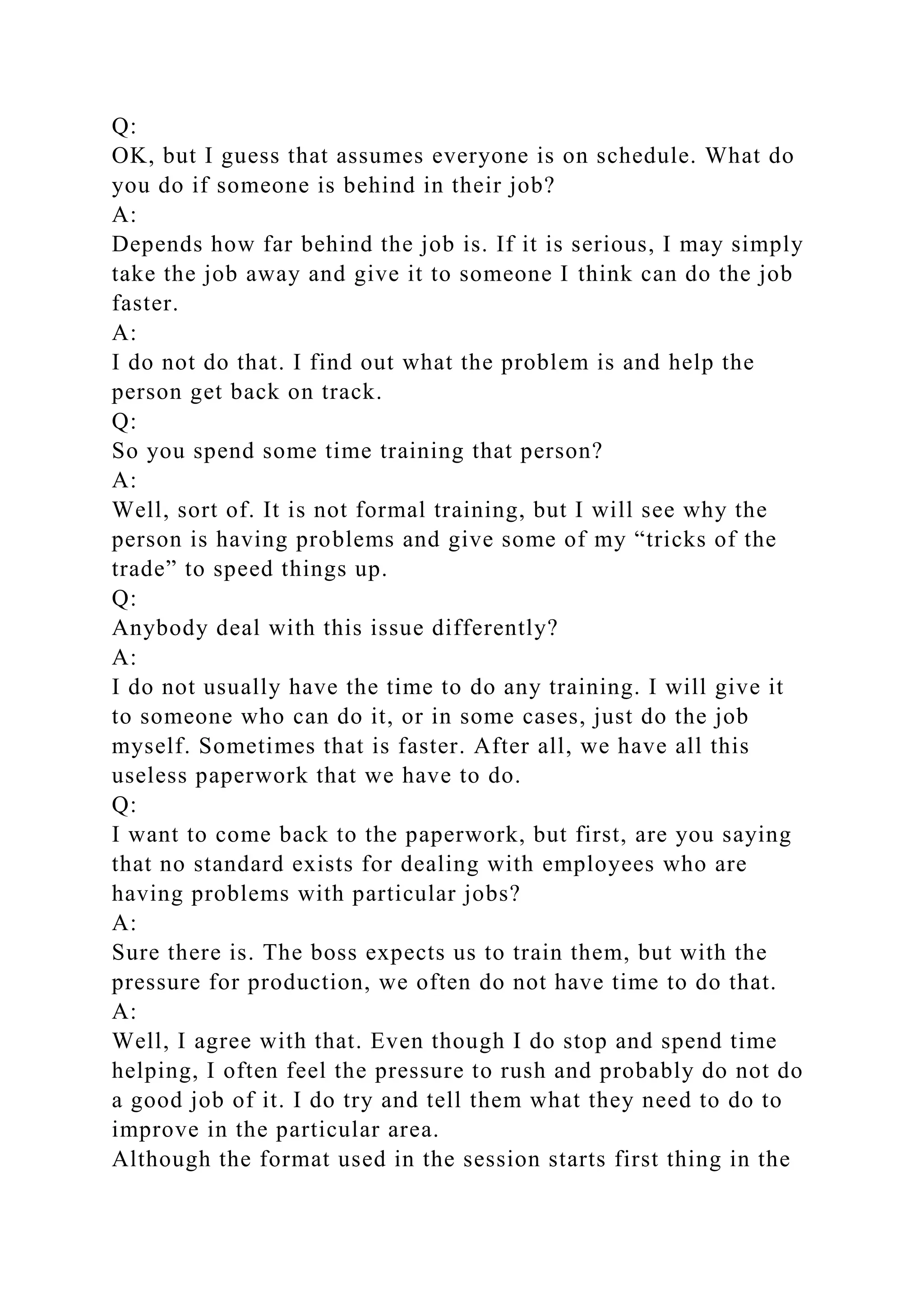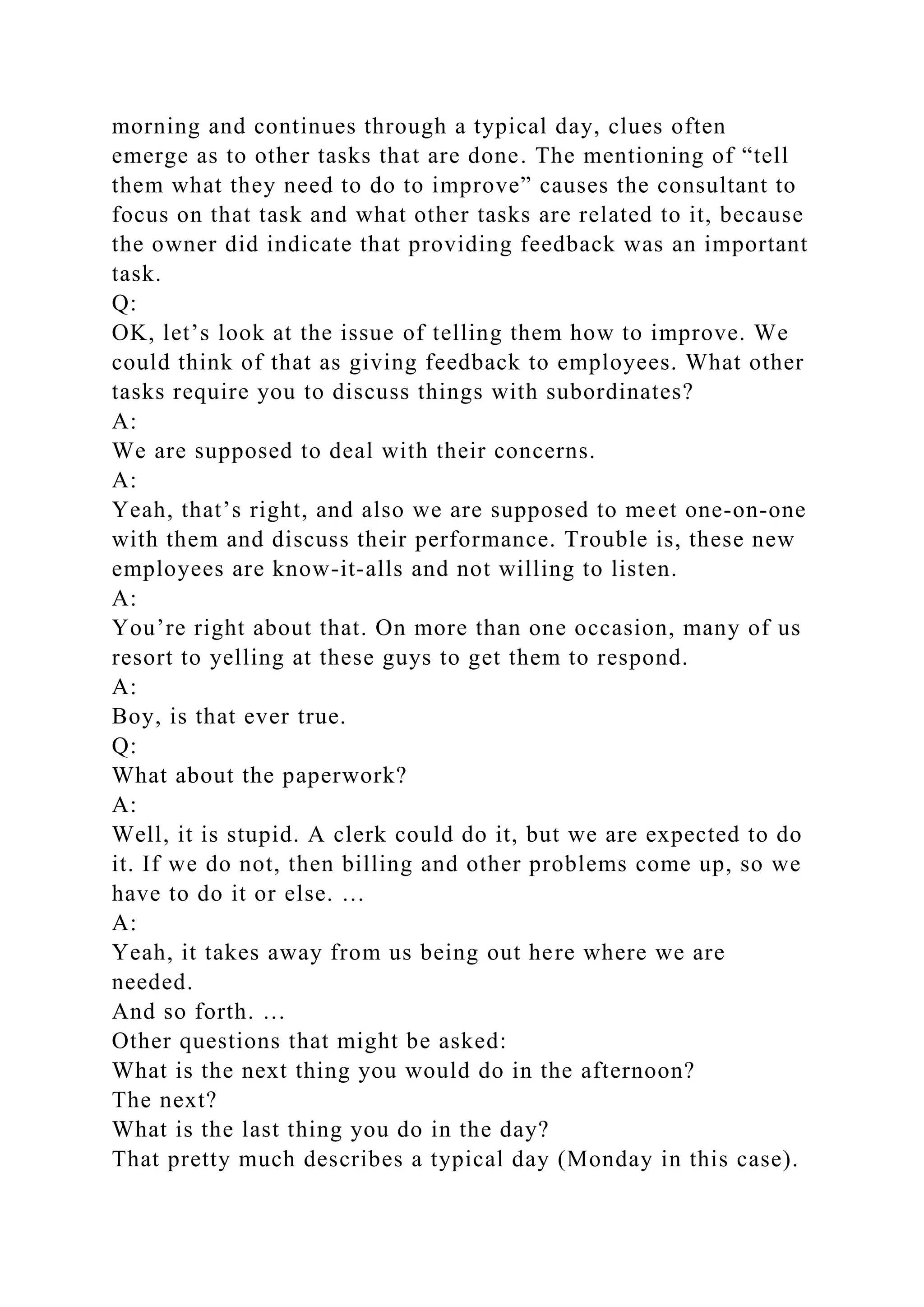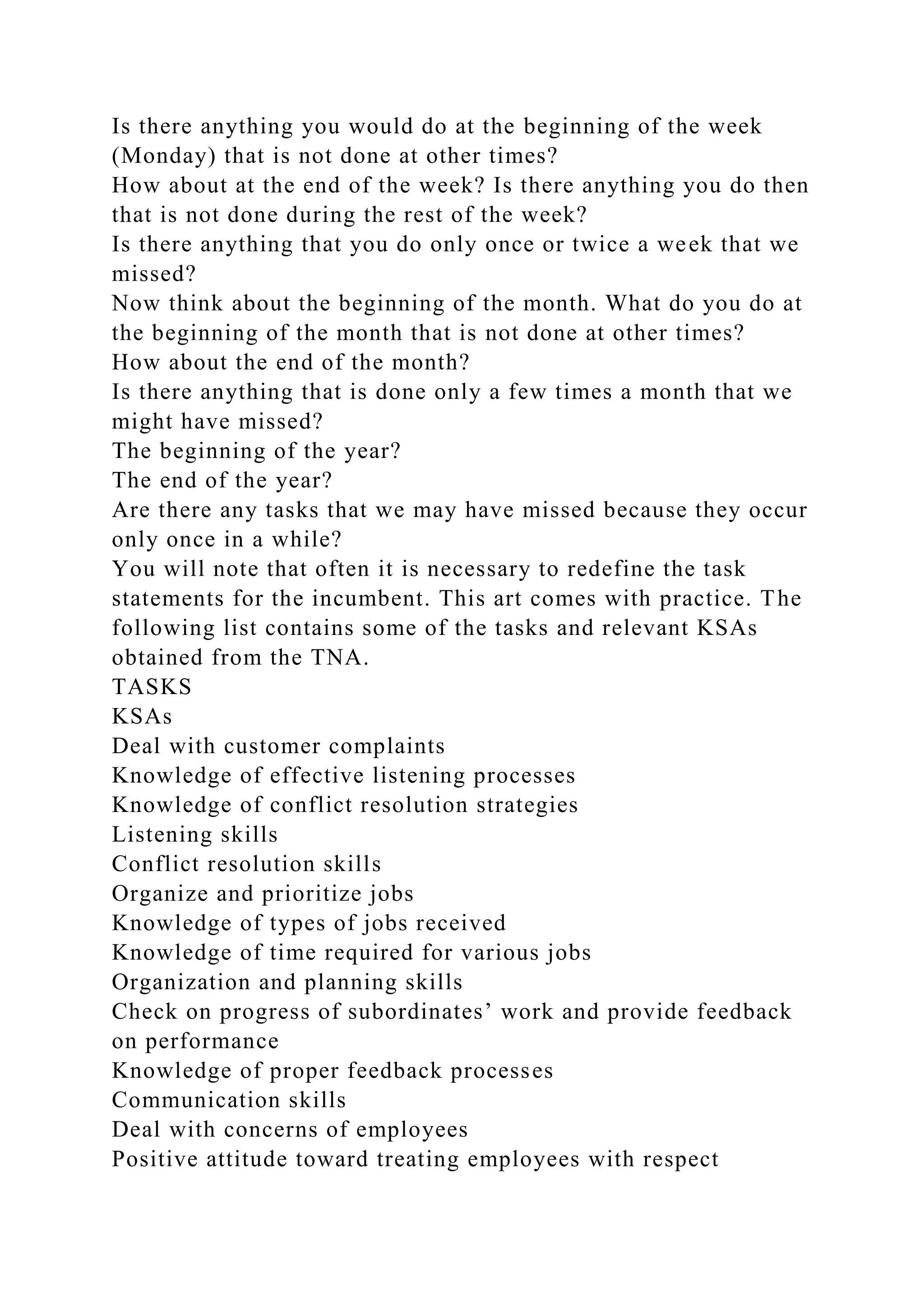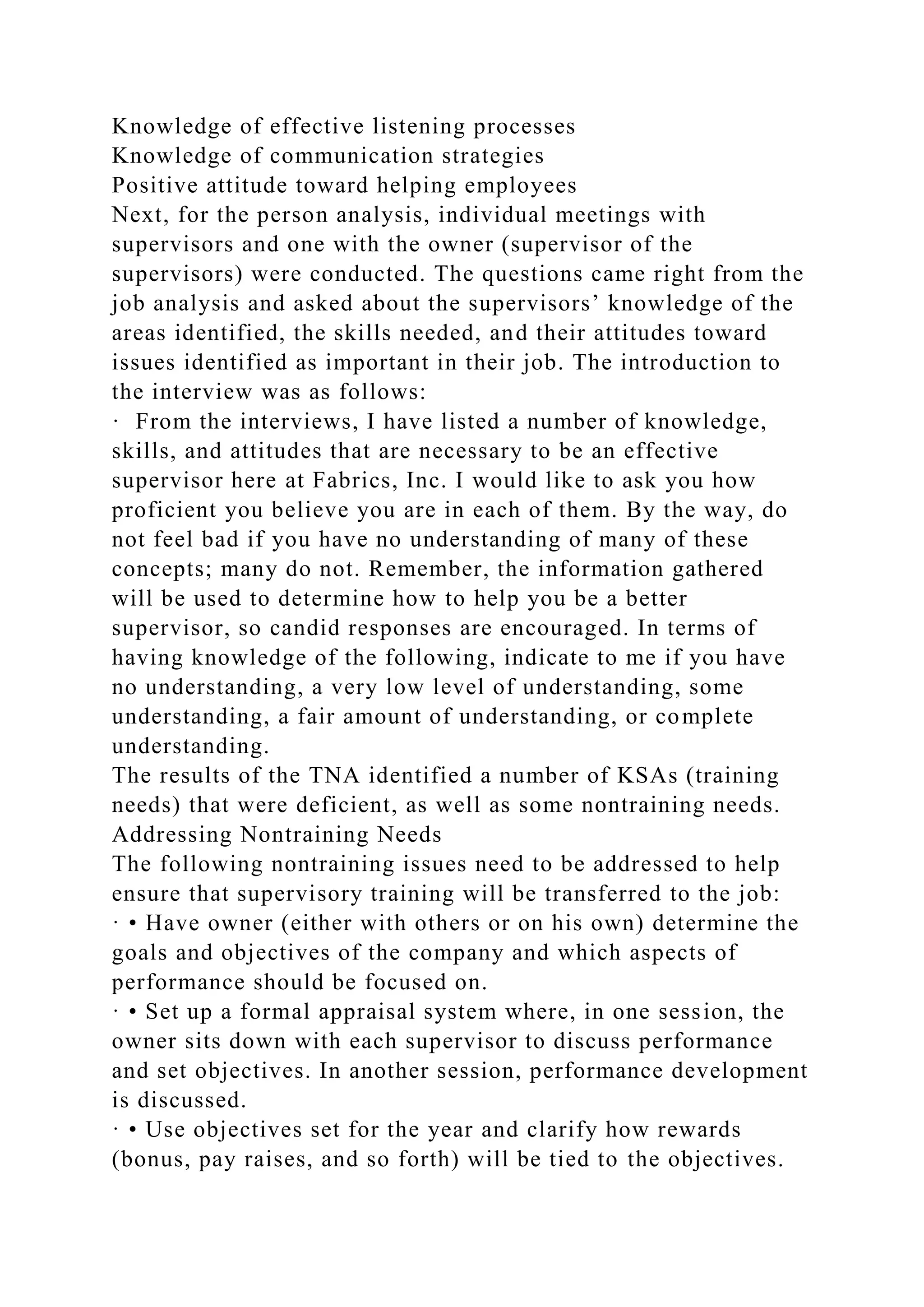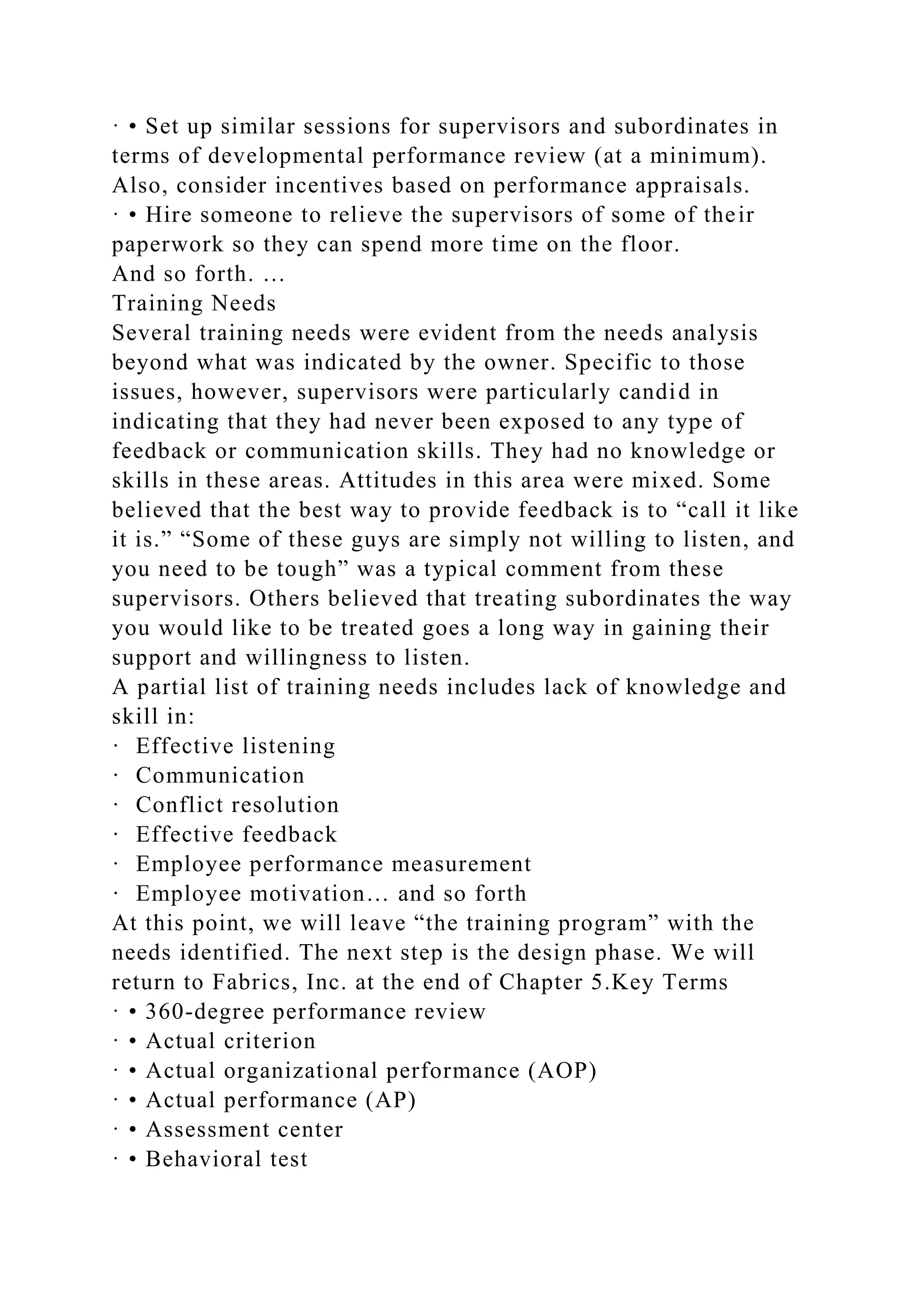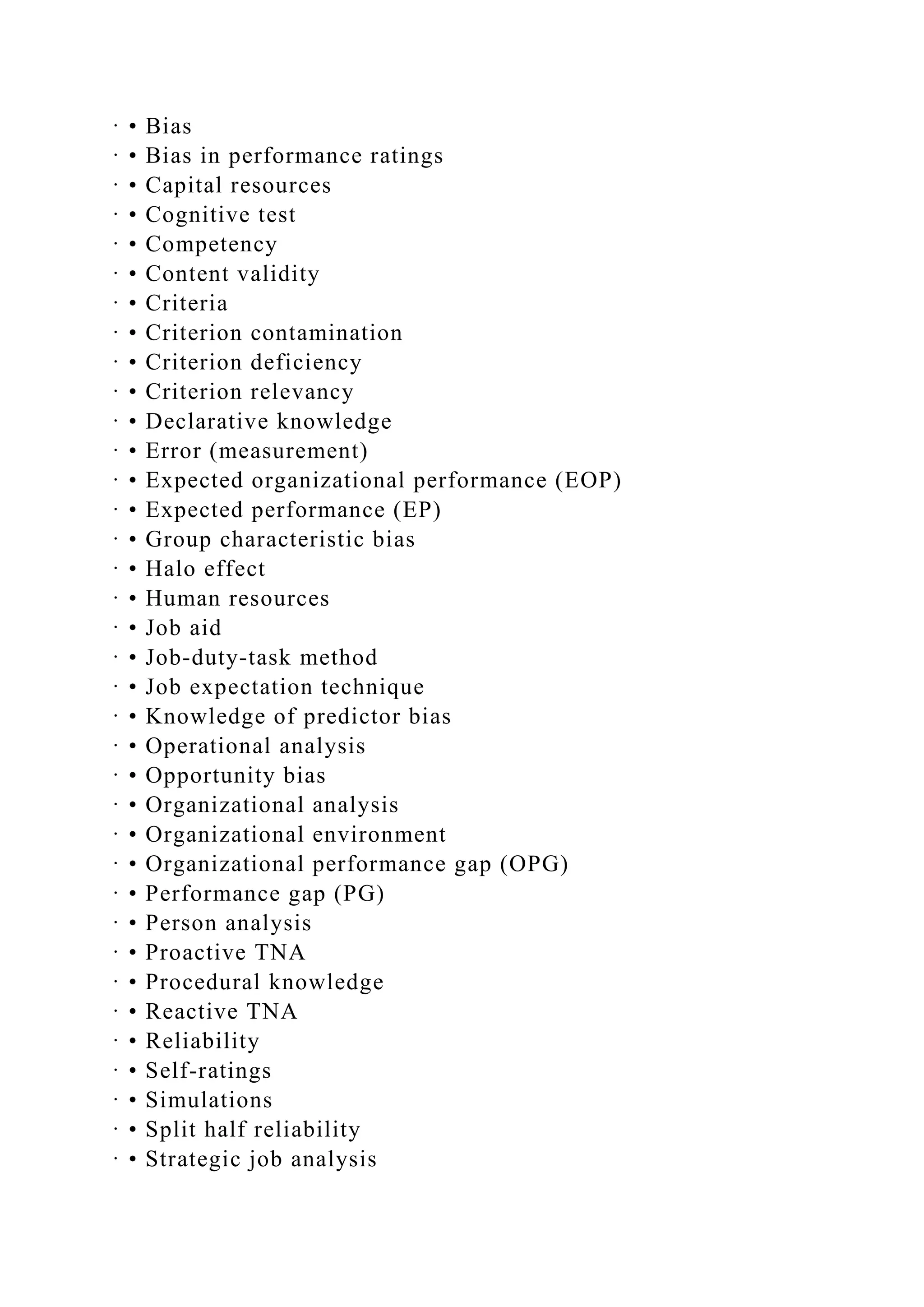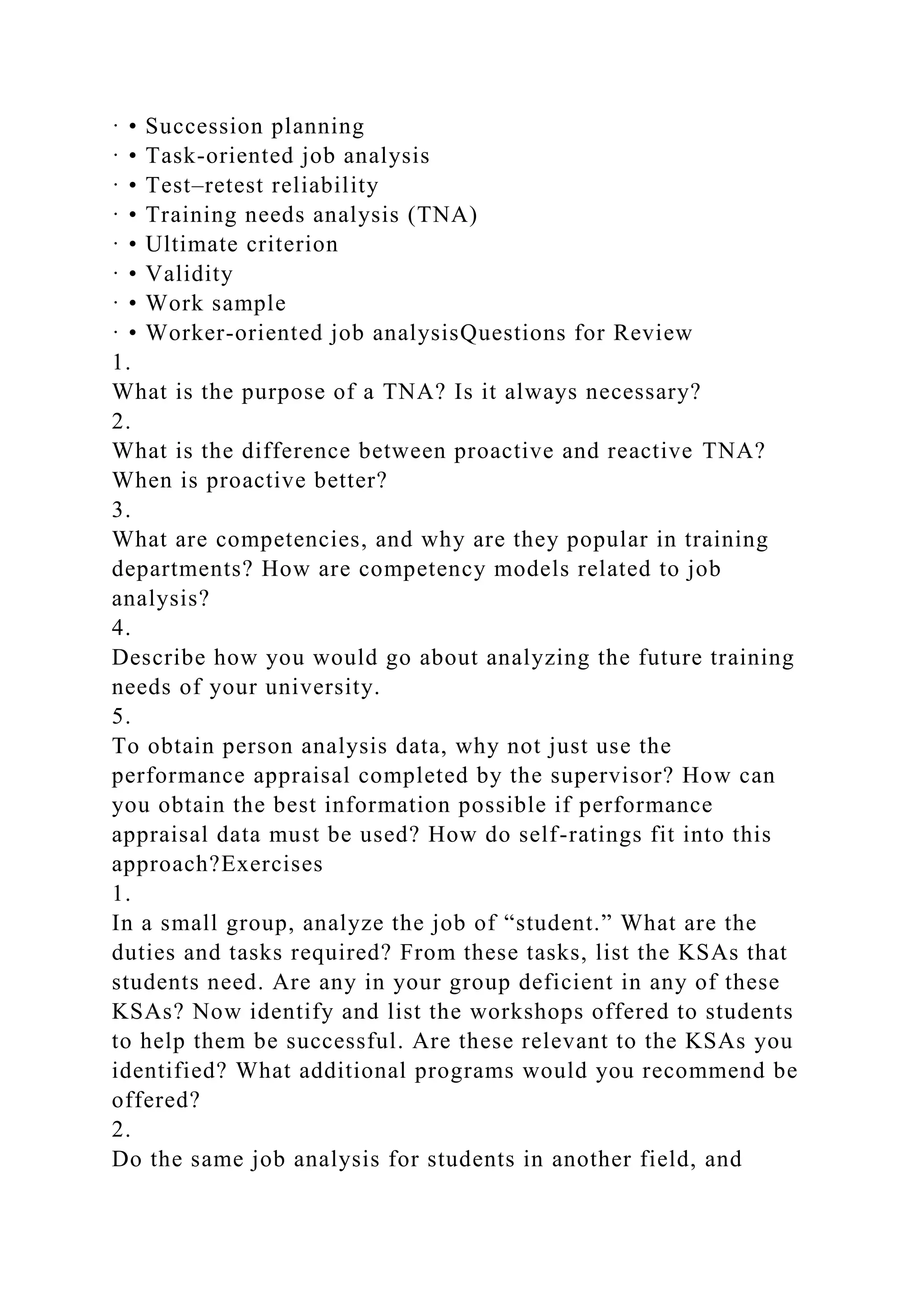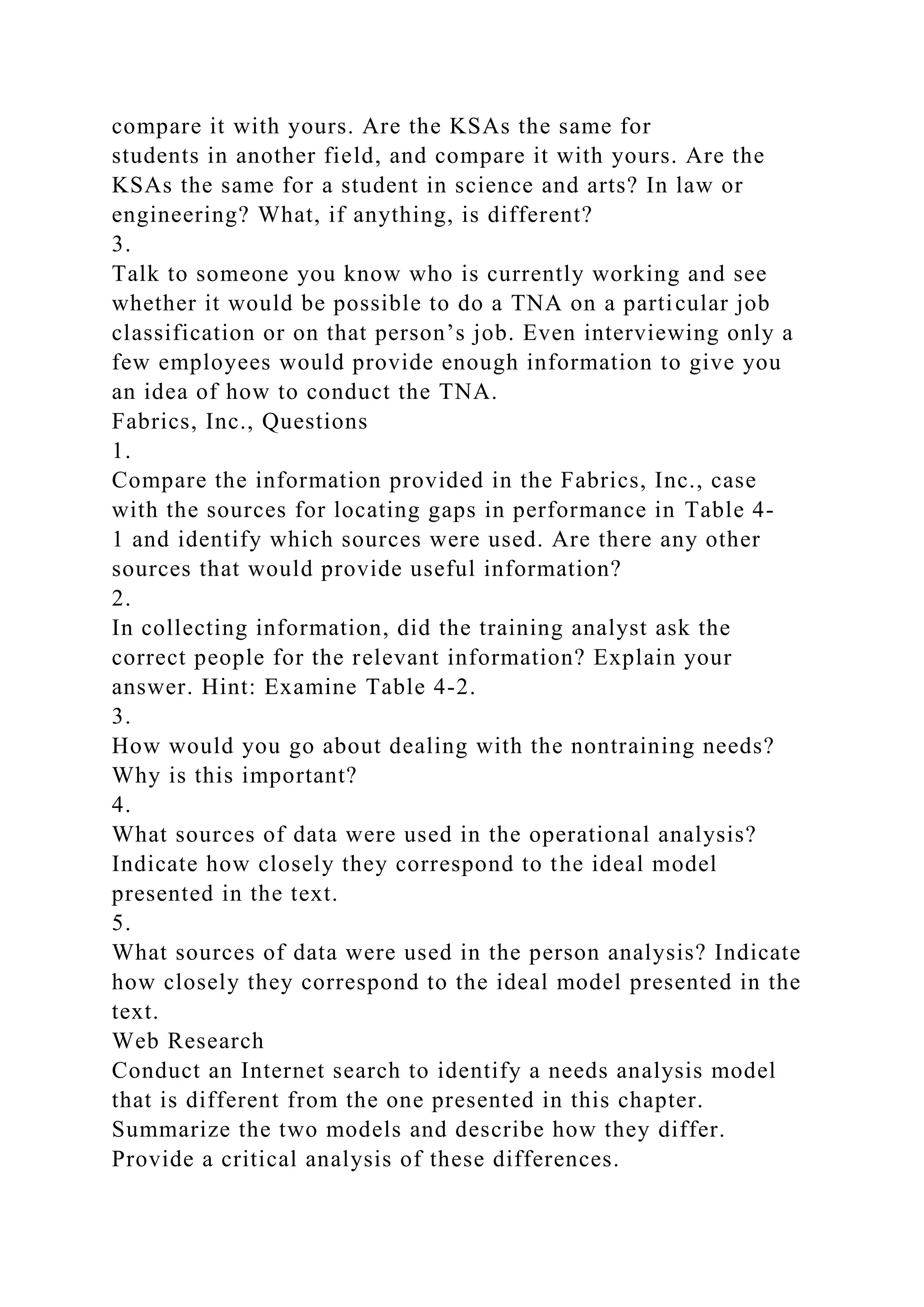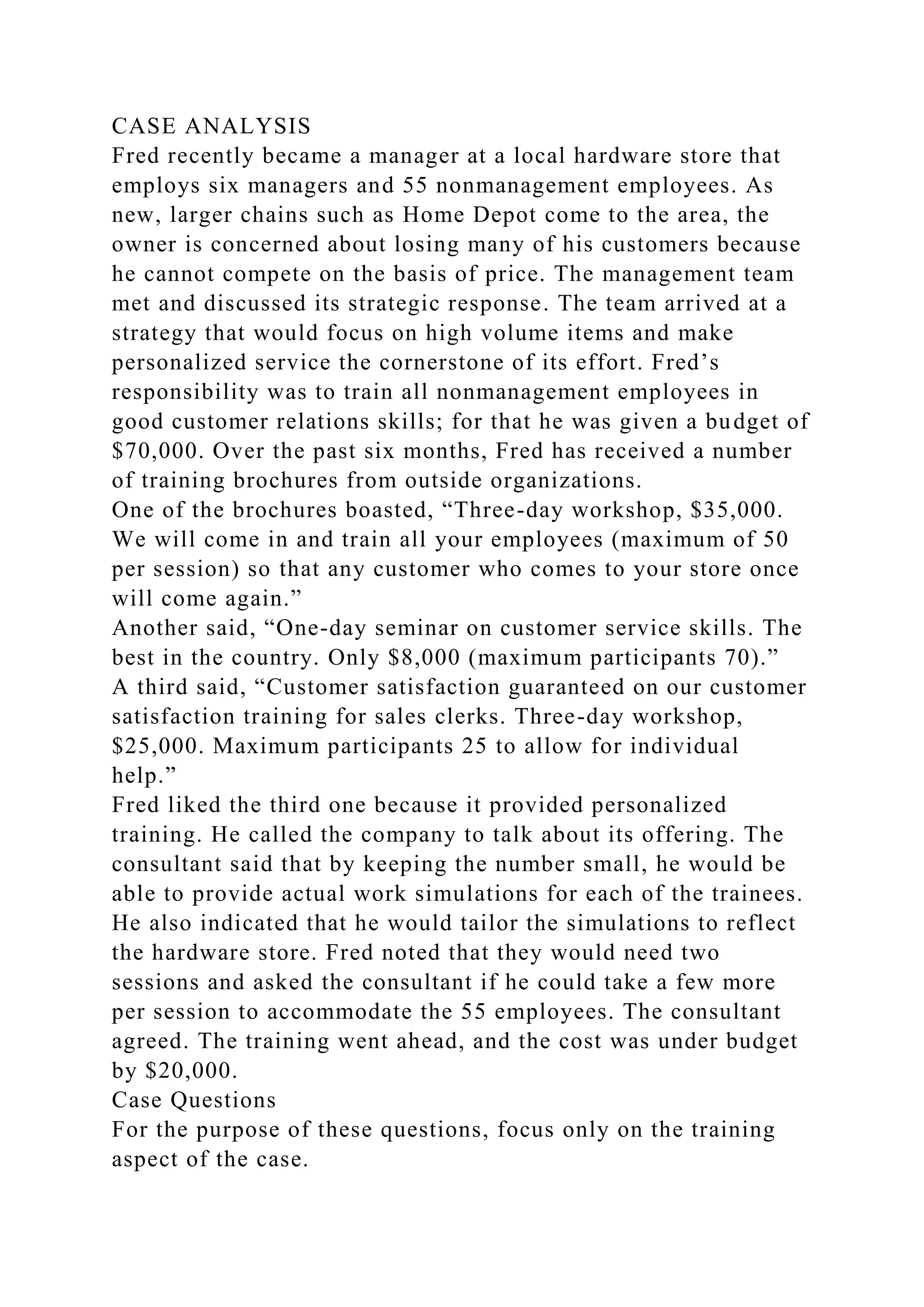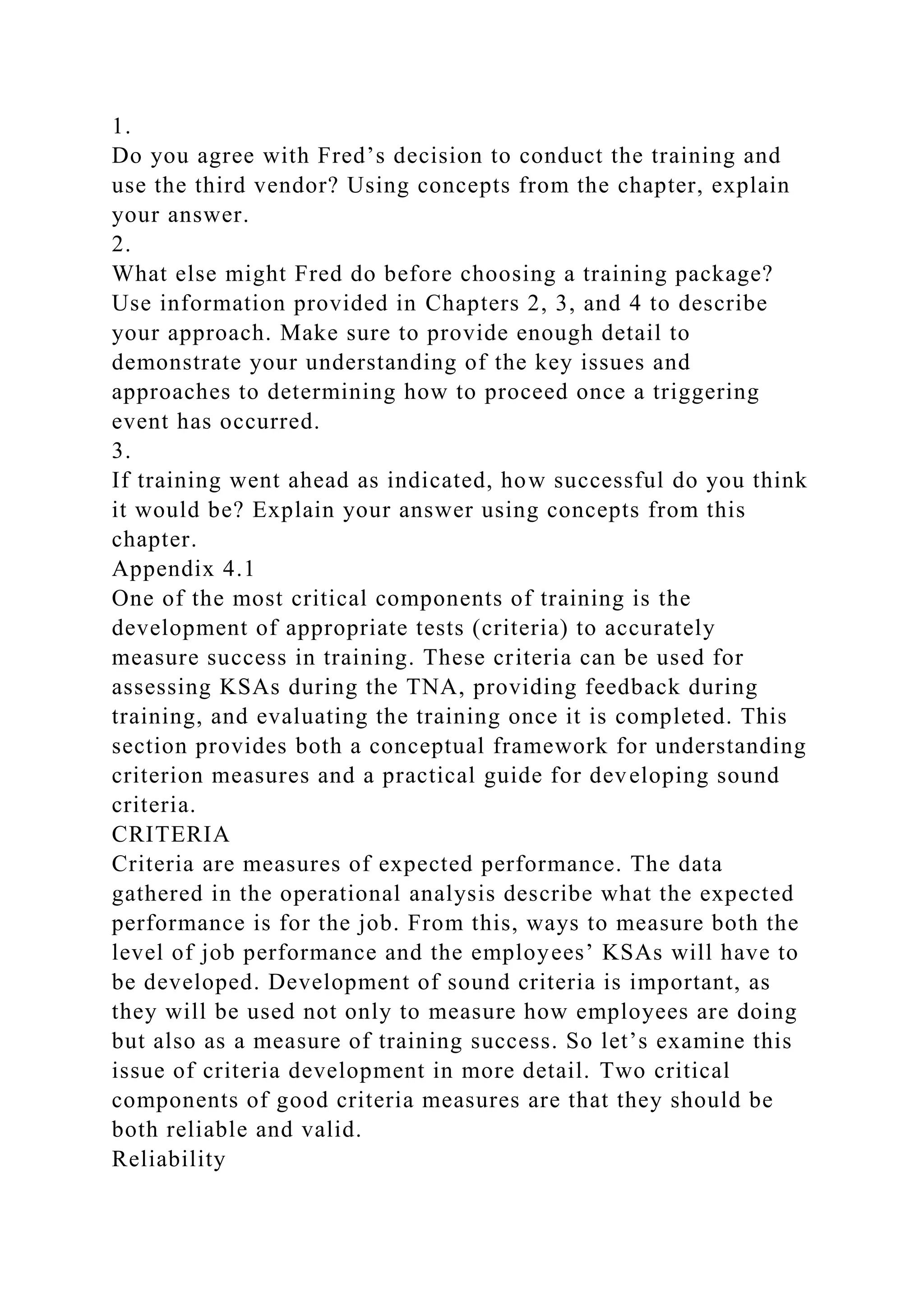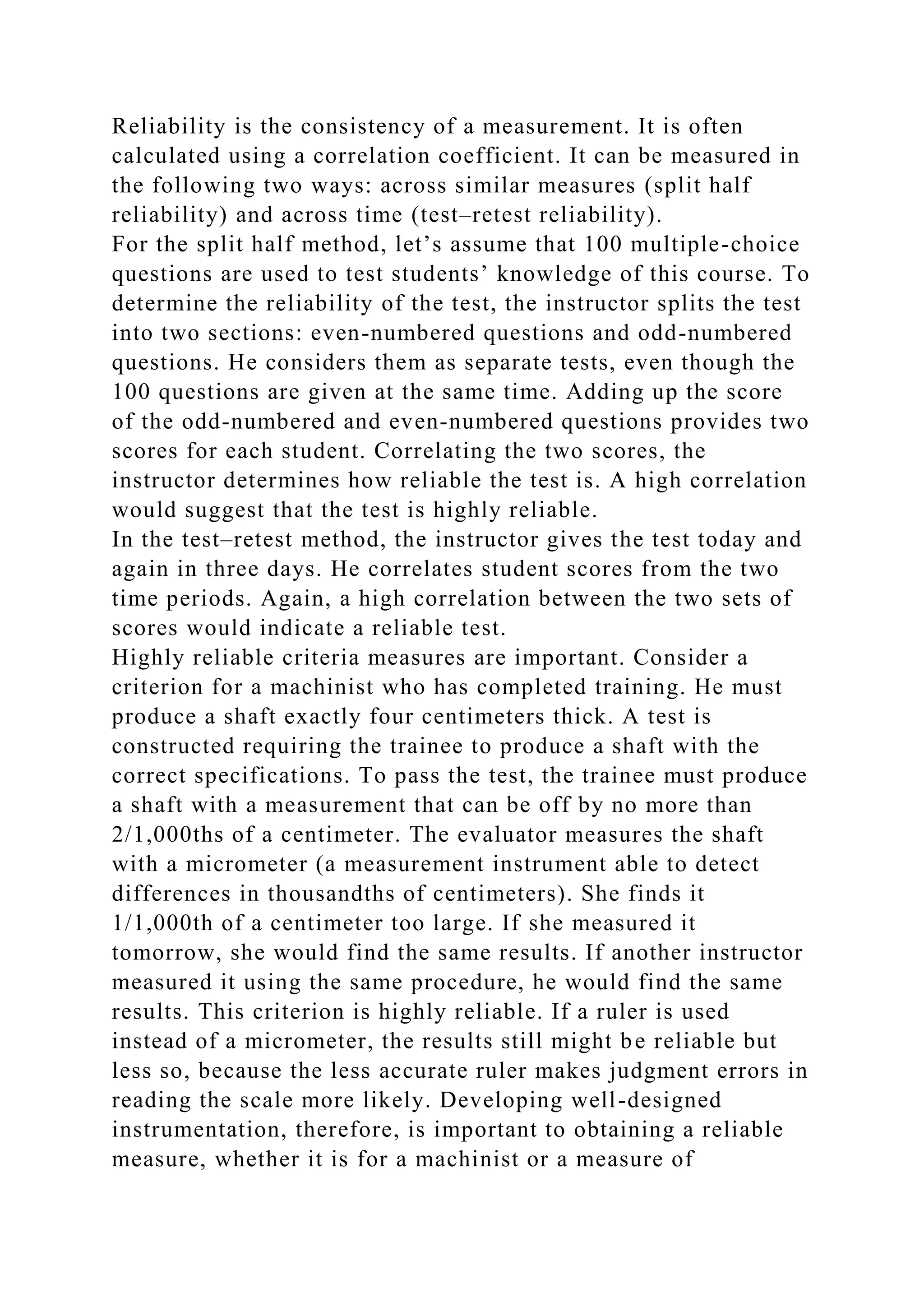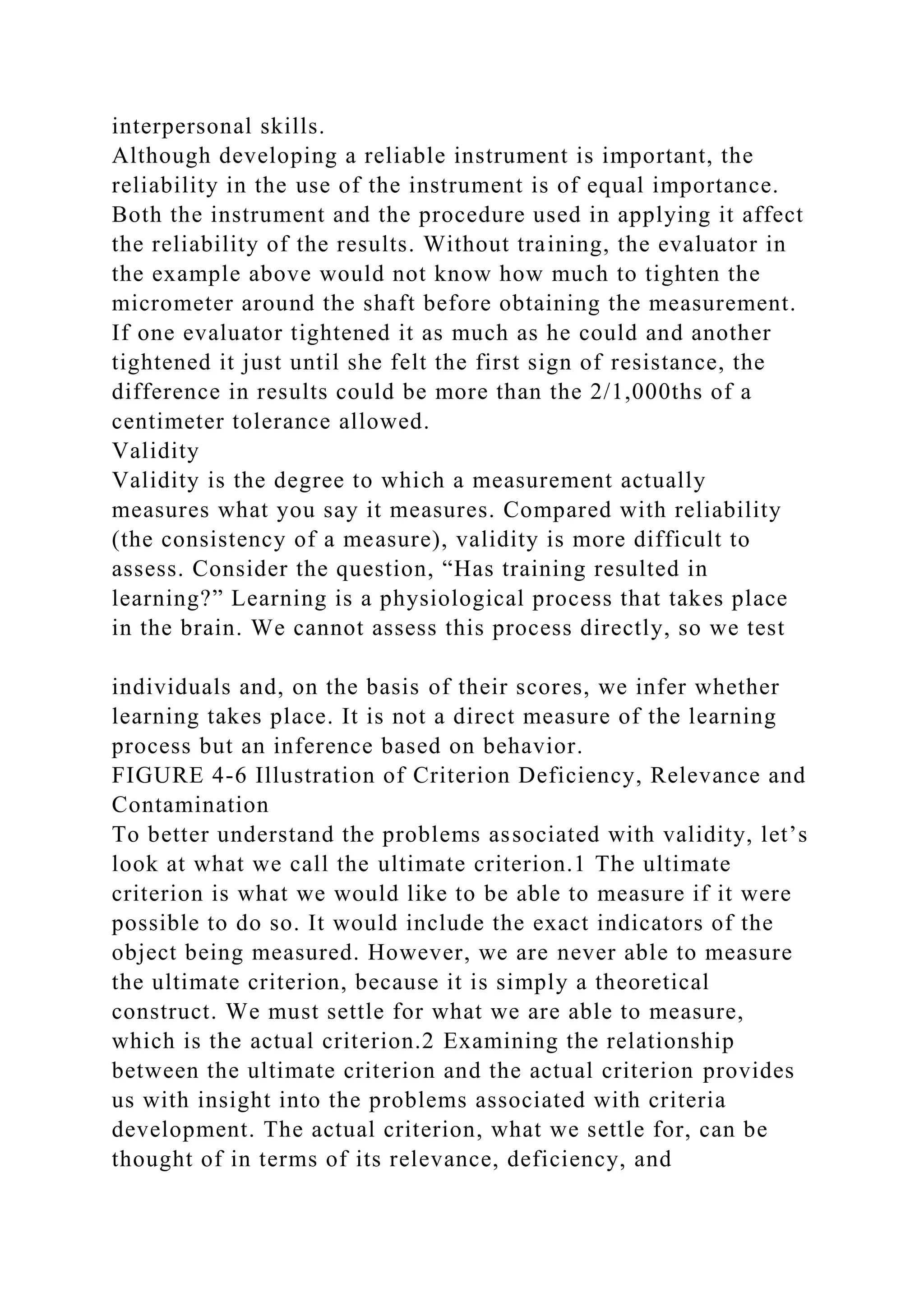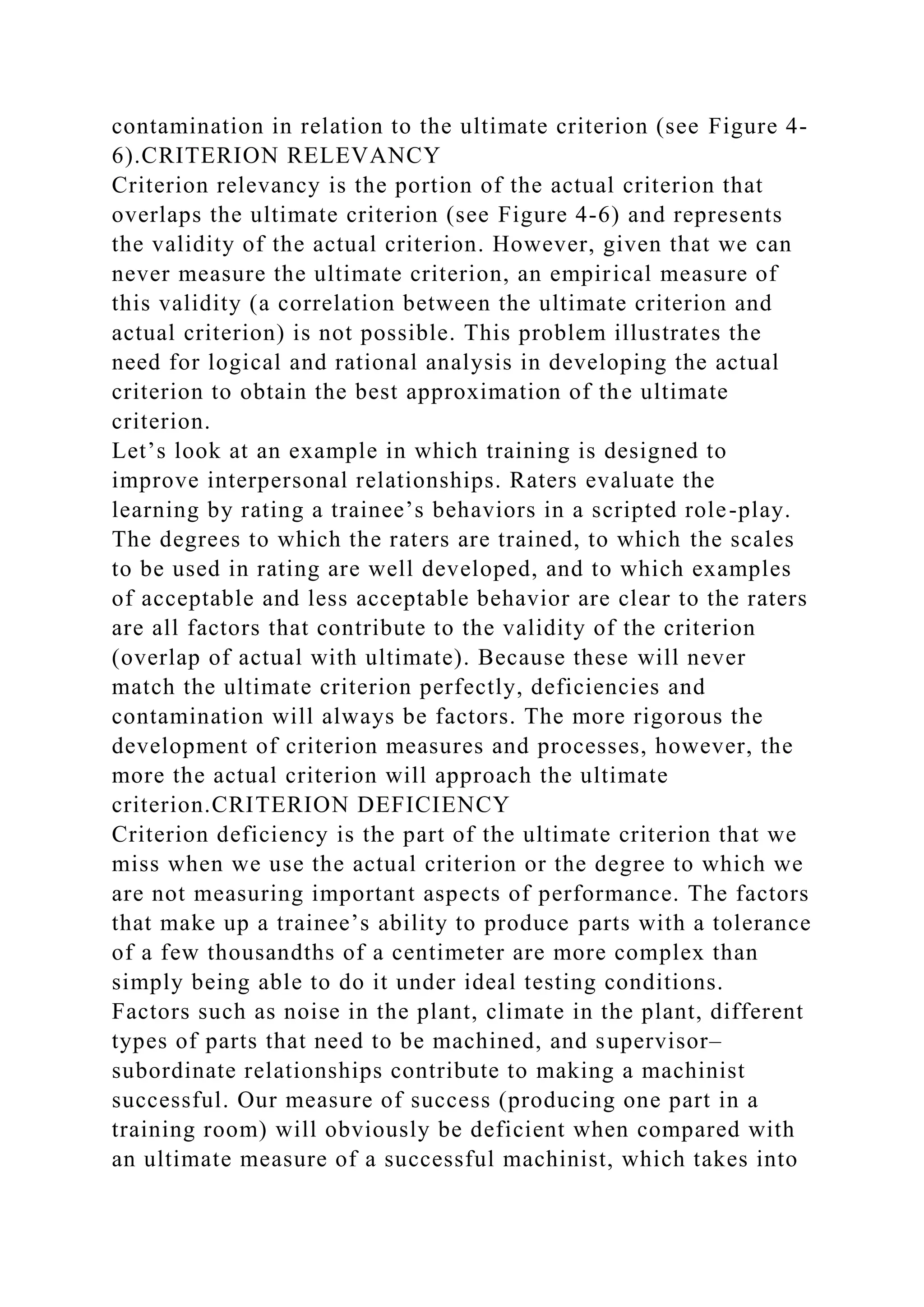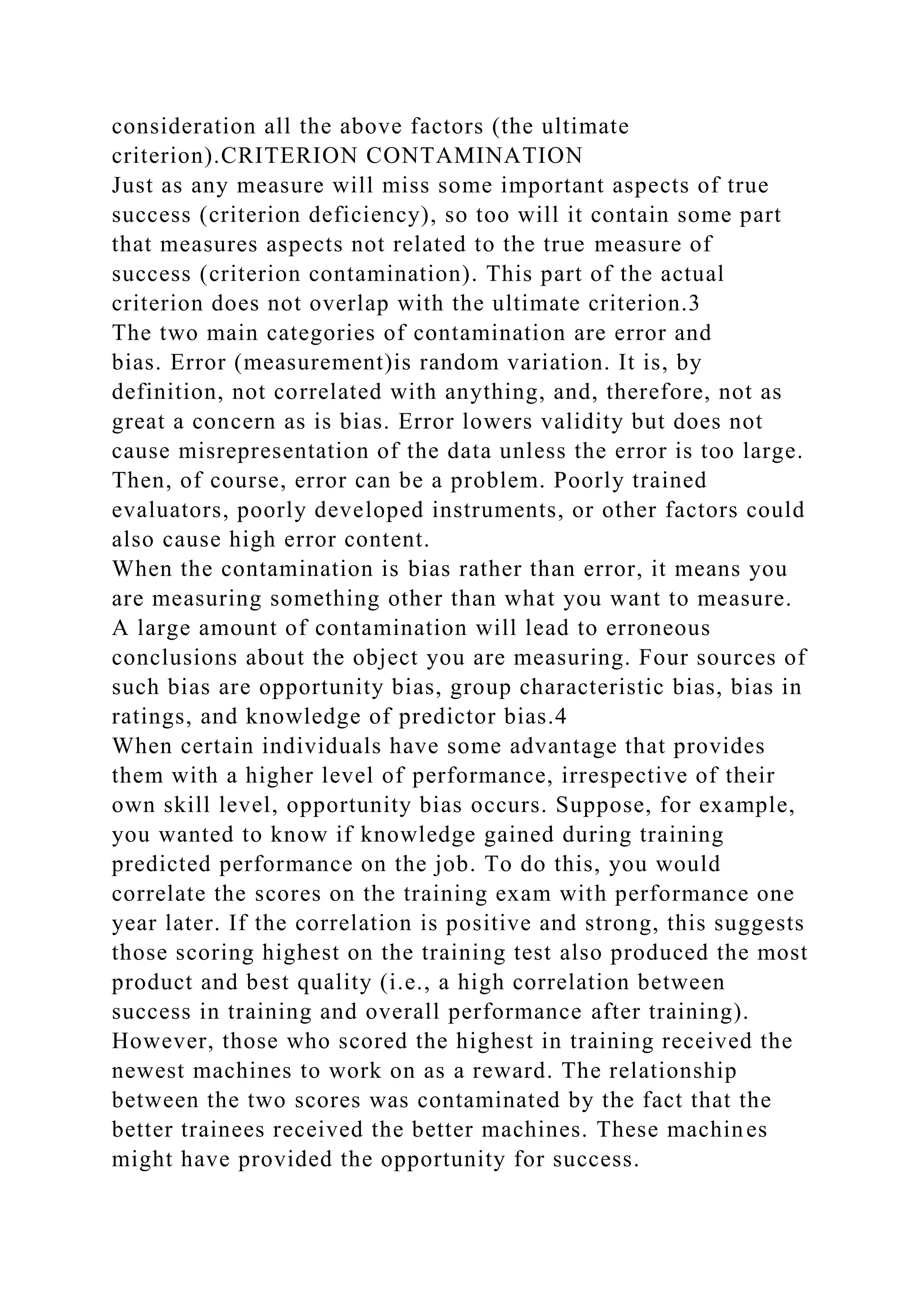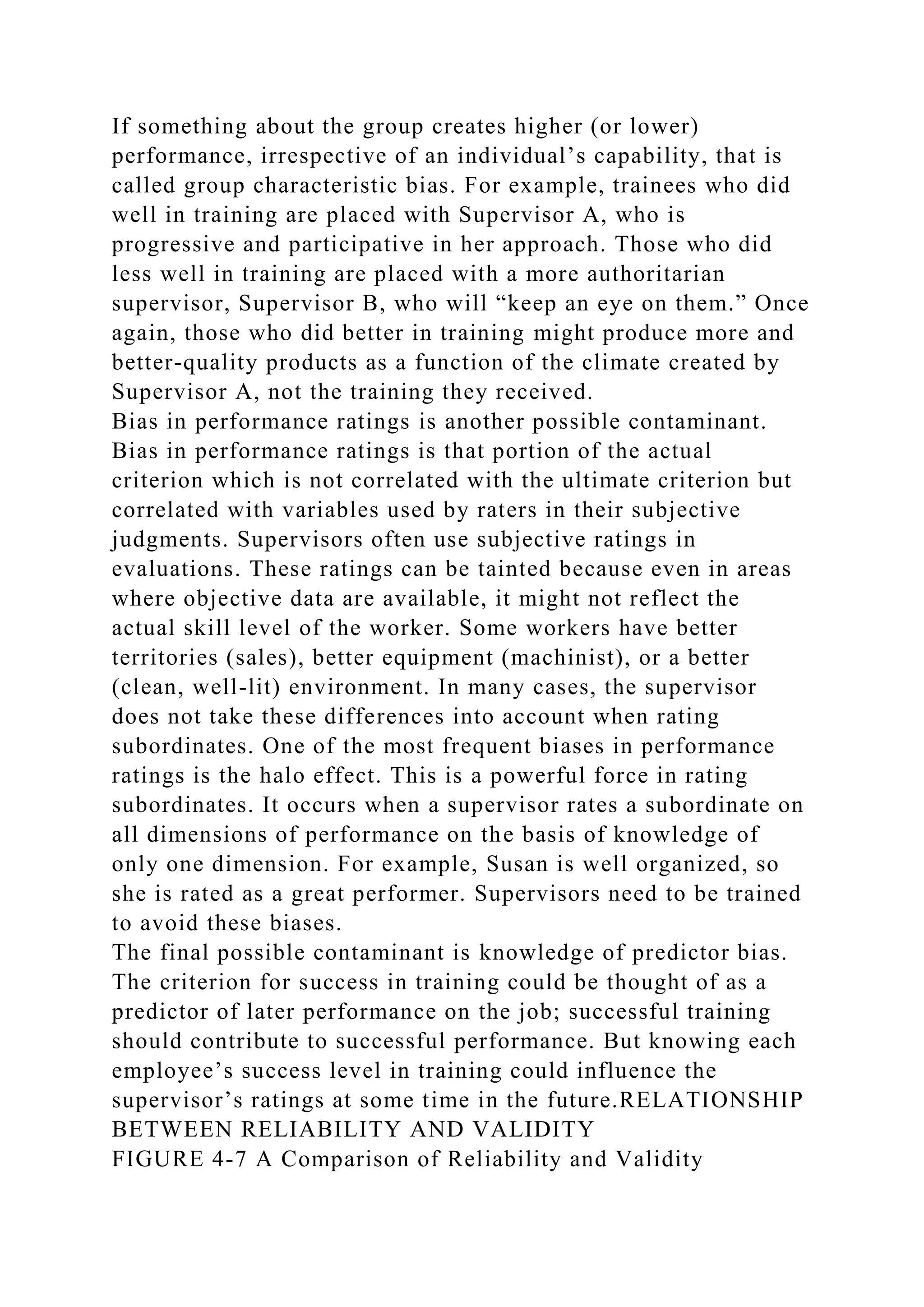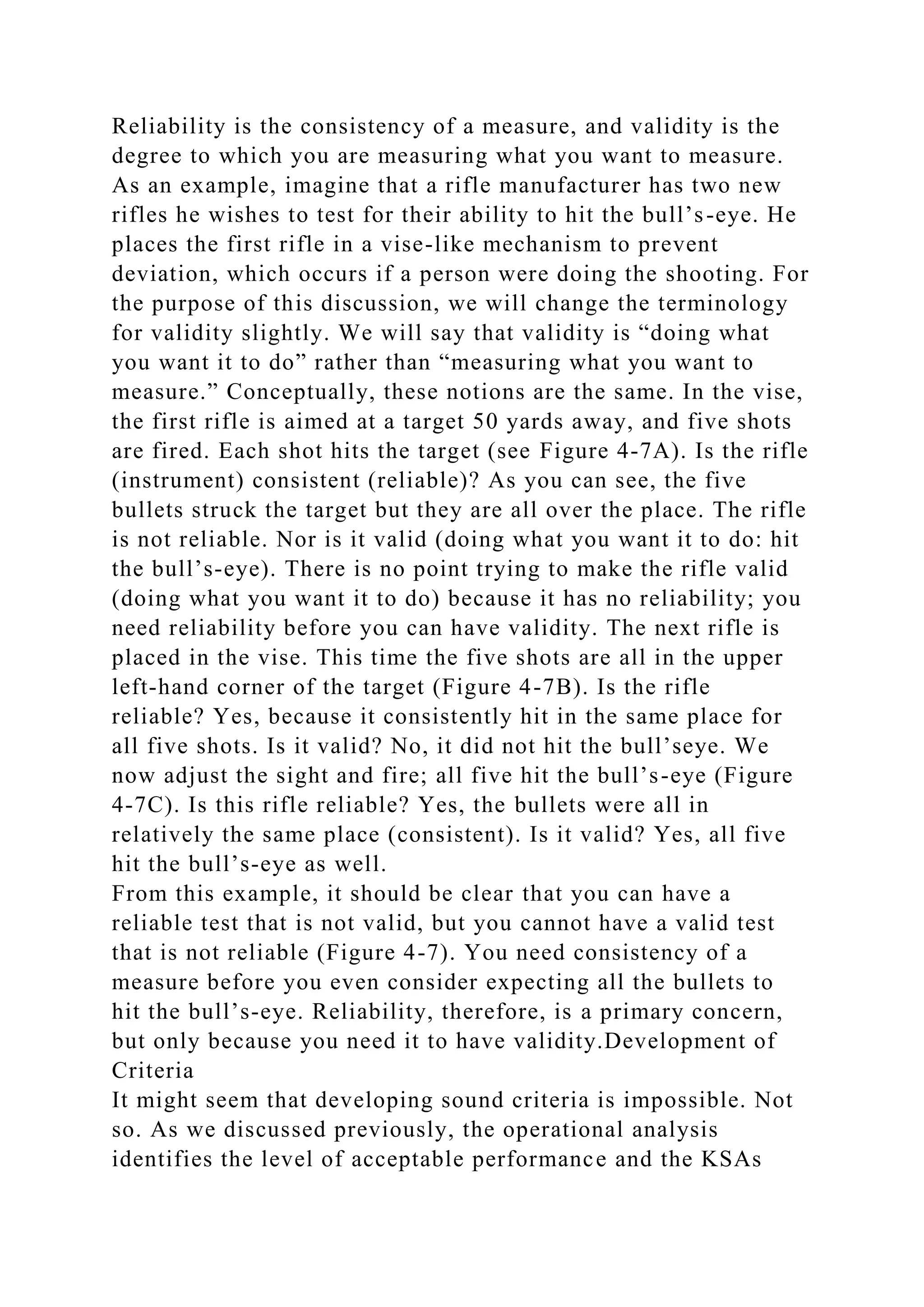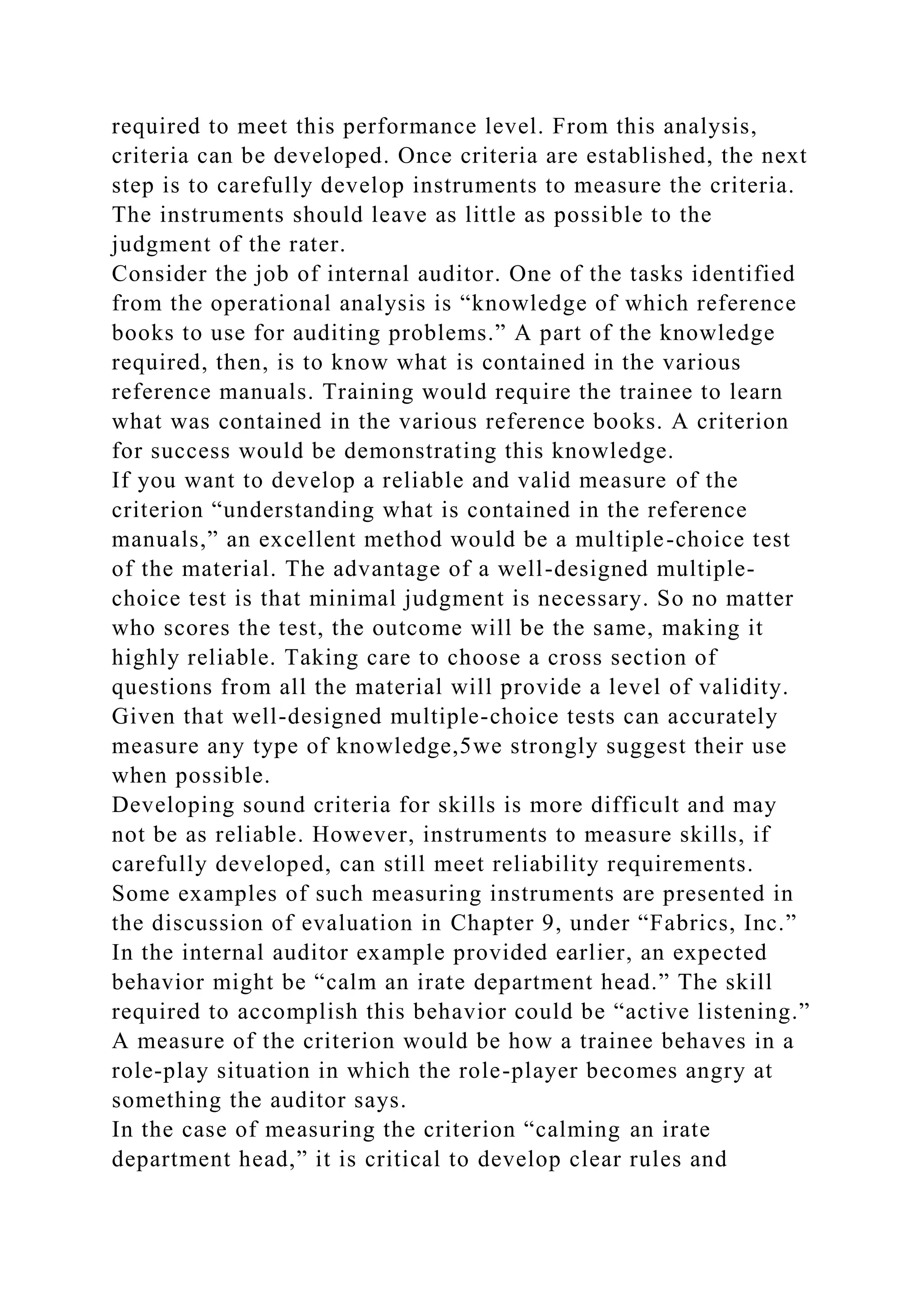The document provides instructions for completing a case study in a business course, emphasizing the importance of a systematic training needs analysis (TNA) in designing effective training programs. It discusses a scenario at Westcan Hydraulics, where the HR manager, Chris, is tasked with developing a training package without conducting a TNA, highlighting the potential pitfalls of this oversight. The text outlines the TNA model and its relevance in identifying performance gaps and aligning training with organizational needs.
![BUSI 444Case Study Instructions
The answers to each Case Study must be 3–5 pages and
completed in current APA formatting. Your response must be
written in essay form, including an introduction, body, and
conclusion. Your Case Study response must be supported by at
least 2 scholarly, peer-reviewed articles. These sources must
have been published within the last 5 years. The Noe textbook
must also be incorporated but no other textbooks may be used.
Prompts:
Case Study 3: Module/Week 7: Career Development at
Electronic Applications
Complete "Career Development at Electronic Applications" case
in the Nkomo, Fottler, and McAfee text (#51, p. 157). Answer
the 6 questions (1–6) on p. 158. You may find it useful to use
the topic of the questions (The problem at EA, Relevant
information to be examined, etc.) as section headers in your
paper.
Textbooks for reading:
Human Resource Management Applications: Cases, Exercises,
Incidents, and Skill Builders - 7TH 11
by: Nkomo, Stella M.
https://mbsdirect.vitalsource.com/#/books/9781305990814/cfi/6/
2[;vnd.vst.idref=M1]!](https://image.slidesharecdn.com/busi444casestudyinstructionstheanswerstoeachcasestudymu-221031163259-4f26738a/75/BUSI-444Case-Study-InstructionsThe-answers-to-each-Case-Study-mu-docx-1-2048.jpg)
![Employee Training and Development - 7TH 17
by: Noe
https://mbsdirect.vitalsource.com/#/books/9780077774547/cfi/6/
26!/4/2/6/[email protected]:75.4
Learning Objectives
After reading this chapter, you should be able to:
· ■ Describe the purpose of a needs analysis.
· ■ List and describe the steps in conducting a needs analysis.
· ■ Explain what a competency is and why it is useful.
· ■ Differentiate between proactive and reactive needs analysis
approaches, and describe the situations favoring the use of one
over the other.
· ■ Outline the rationale for using performance appraisal
information for a needs analysis, and identify what type of
performance appraisal method is appropriate.
· ■ Describe the relationship between needs analysis and the
design and evaluation of training.
· ■ List four contaminations of a criterion.
CASE DEVELOPING A TRAINING PACKAGE AT WESTCAN
Chris is a human resources (HR) manager at Westcan
Hydraulics, and Irven, the VP of HR, is her boss. One morning
Irven called Chris into his office. “I just saw an old training
film called Meetings Bloody Meetings starring John Cleese,” he
said. “It deals with effective ways of running meetings.” Irven,
a competent and well-liked engineer, had been promoted to VP
of HR three months earlier. Although he had no HR expertise,
he had been an effective production manager, and the president
of the company had hoped that Irven would provide a measure
of credibility to the HR department. In the past, employees saw
the HR department as one that forced its silly ideas on the rest
of the company with little understanding of how to make those
ideas work.](https://image.slidesharecdn.com/busi444casestudyinstructionstheanswerstoeachcasestudymu-221031163259-4f26738a/75/BUSI-444Case-Study-InstructionsThe-answers-to-each-Case-Study-mu-docx-2-2048.jpg)
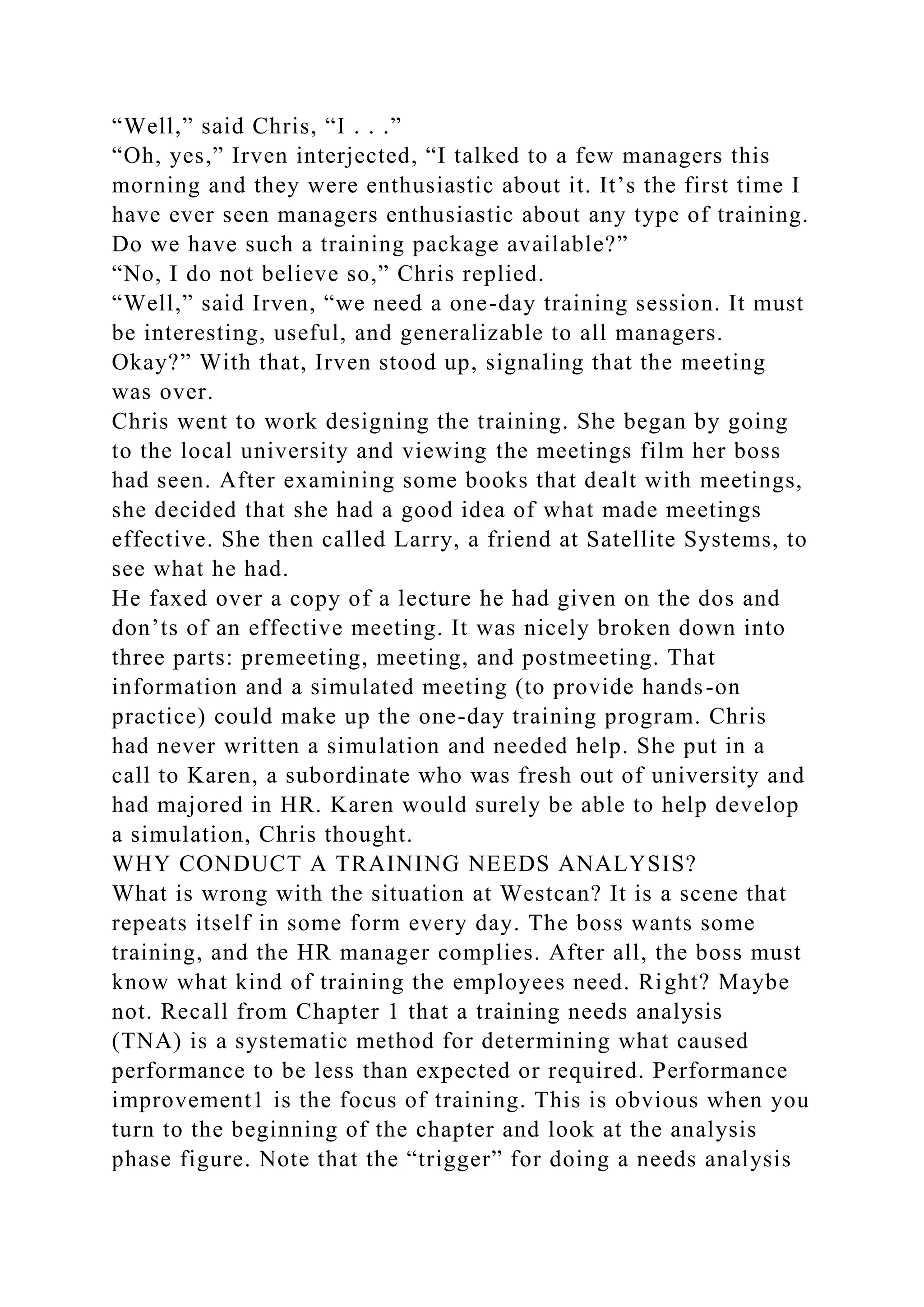
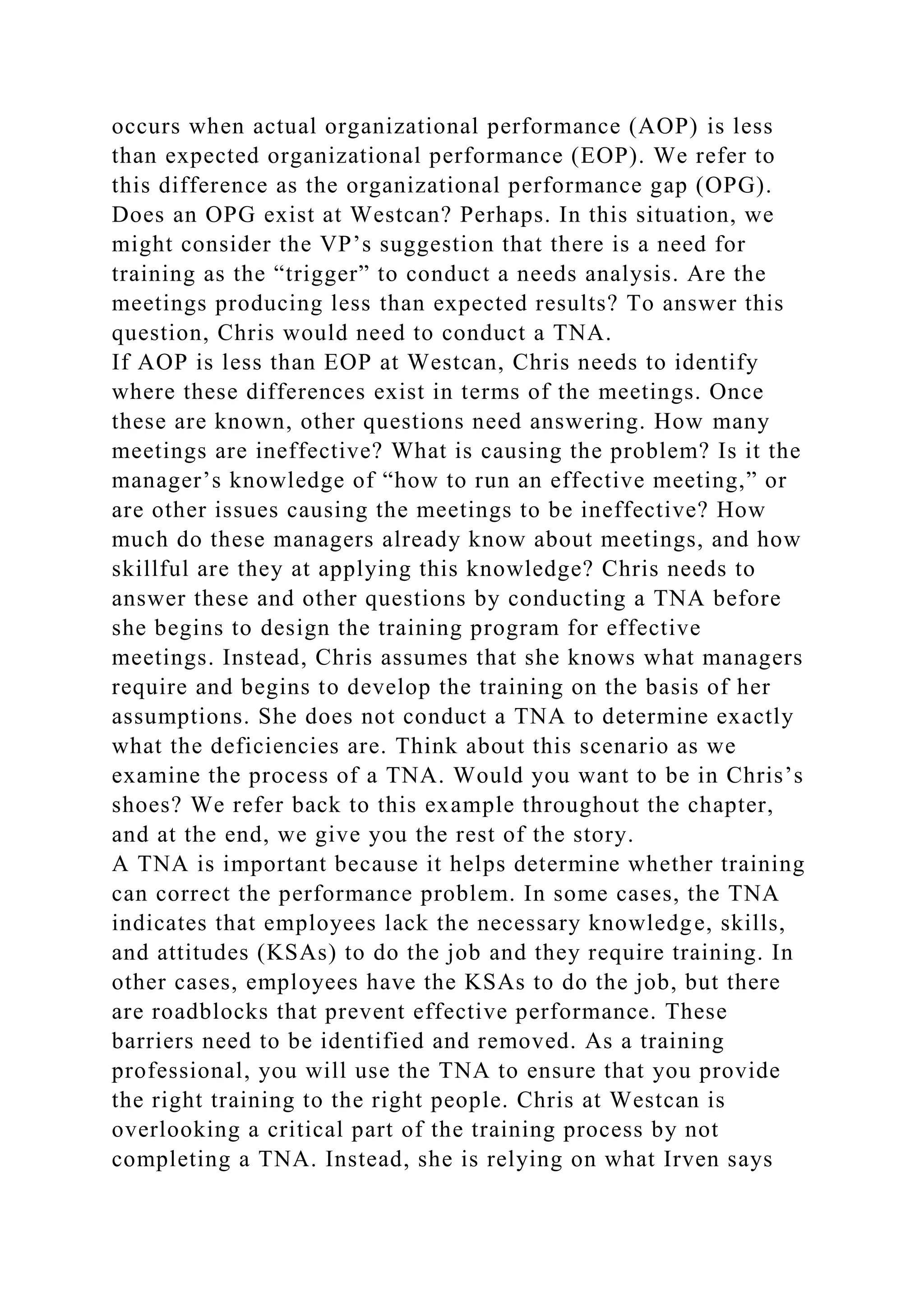
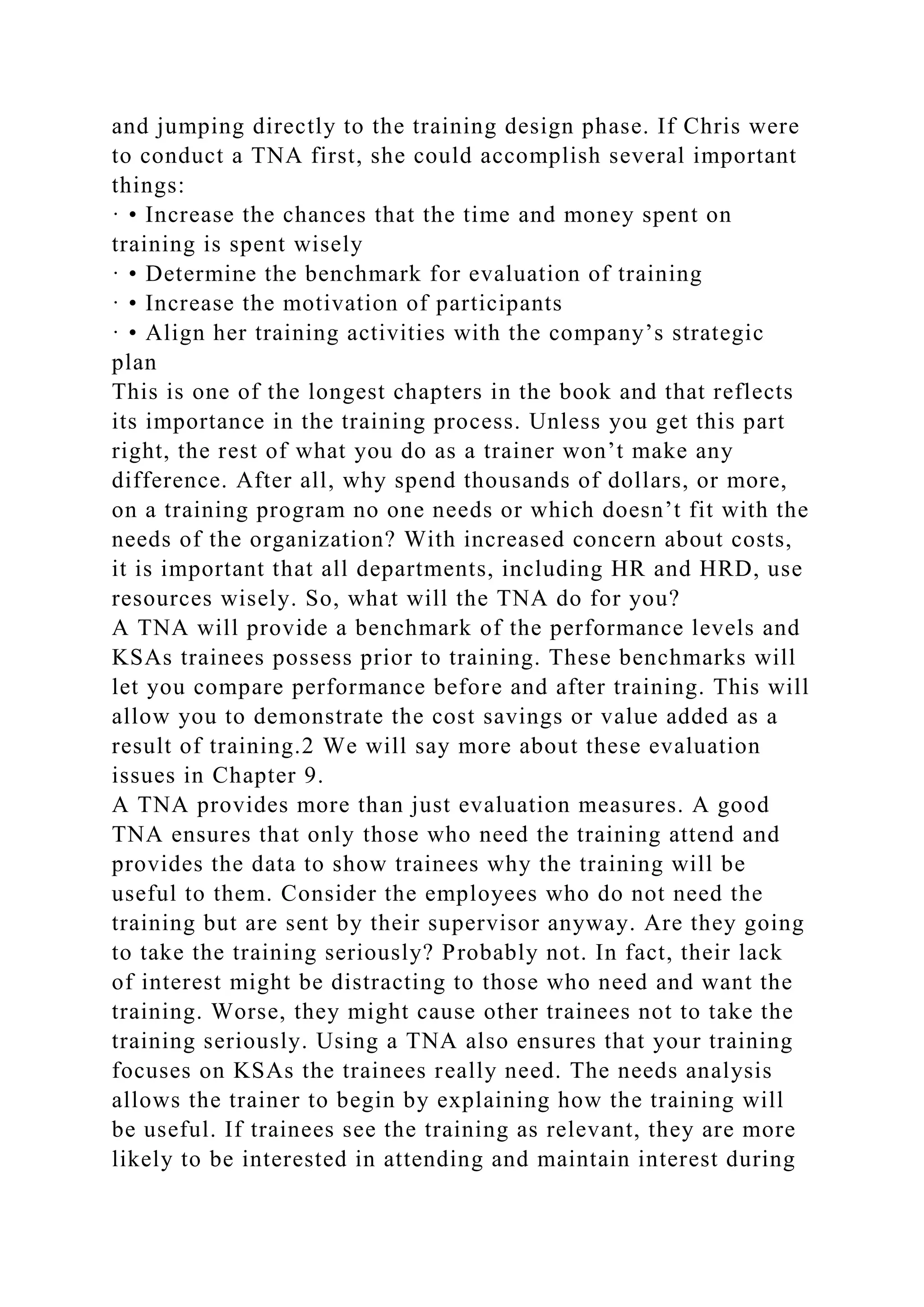

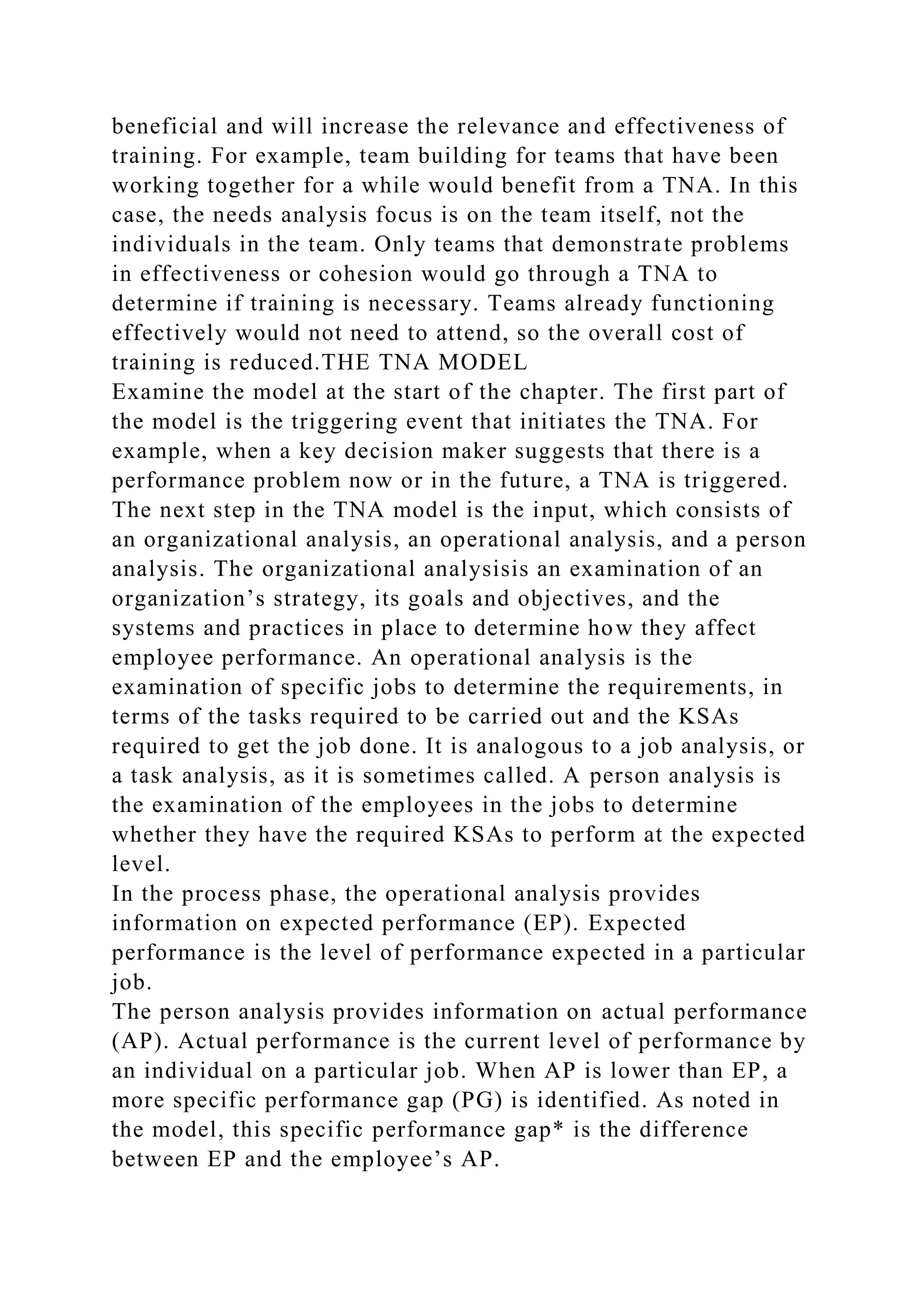
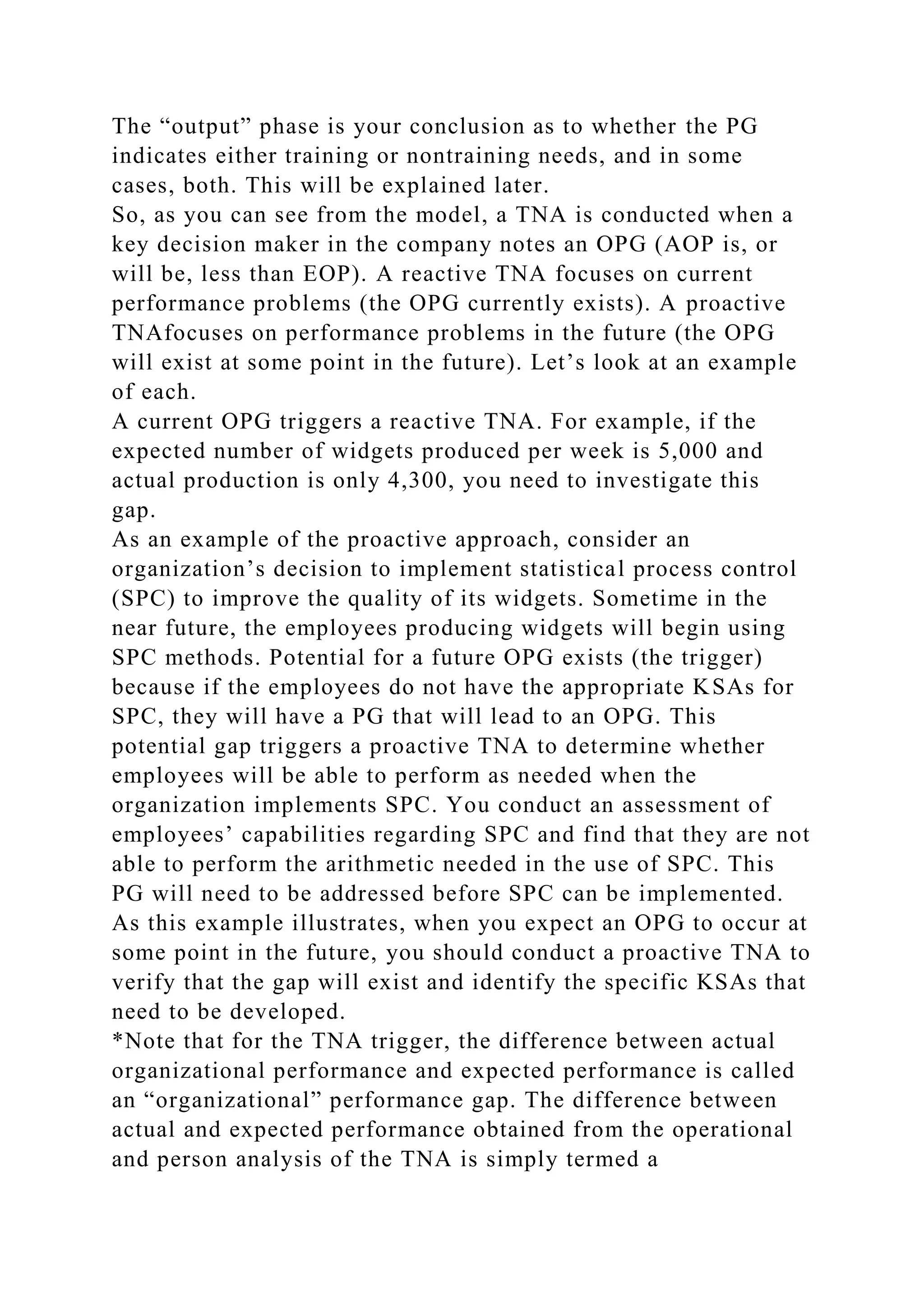
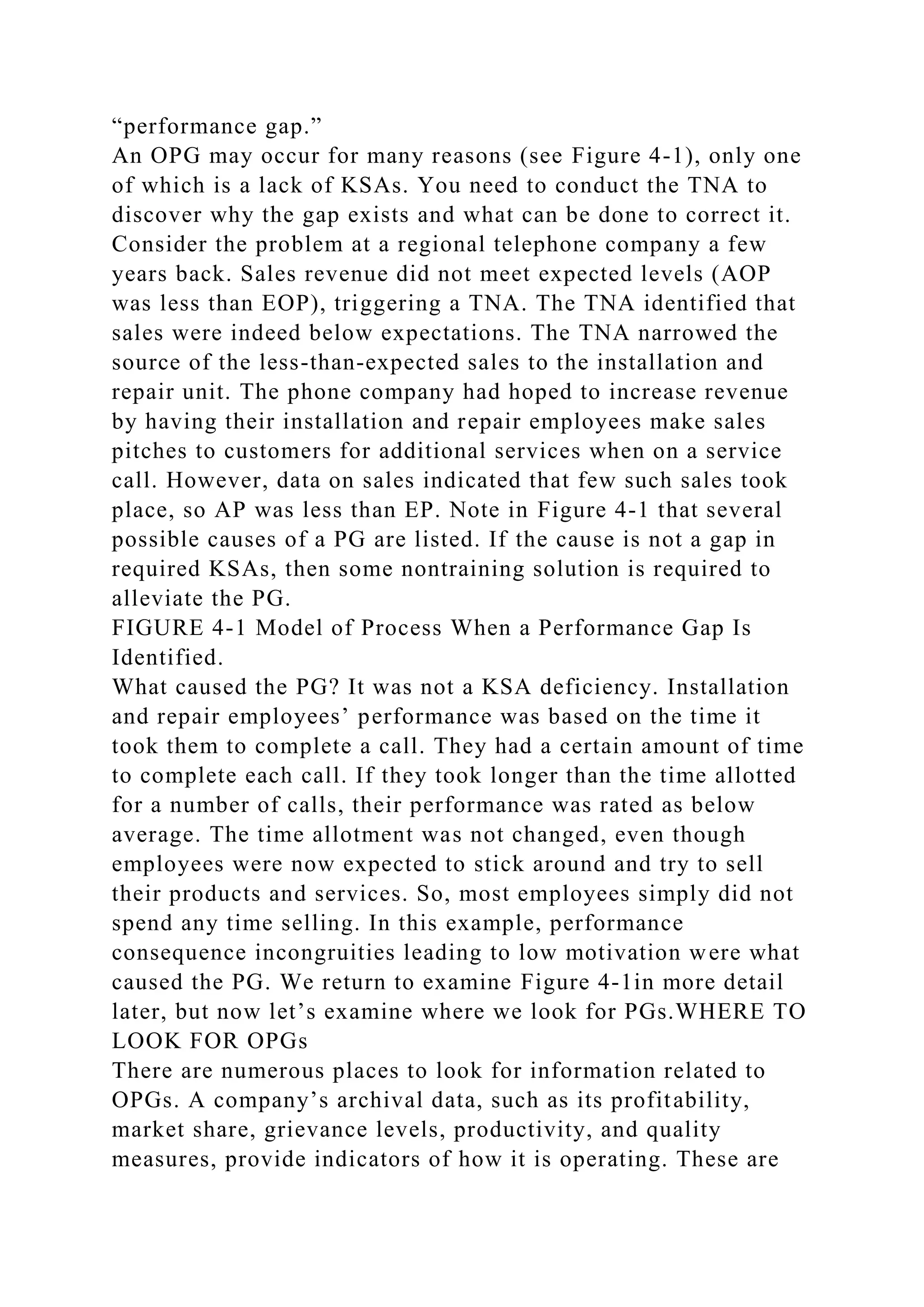

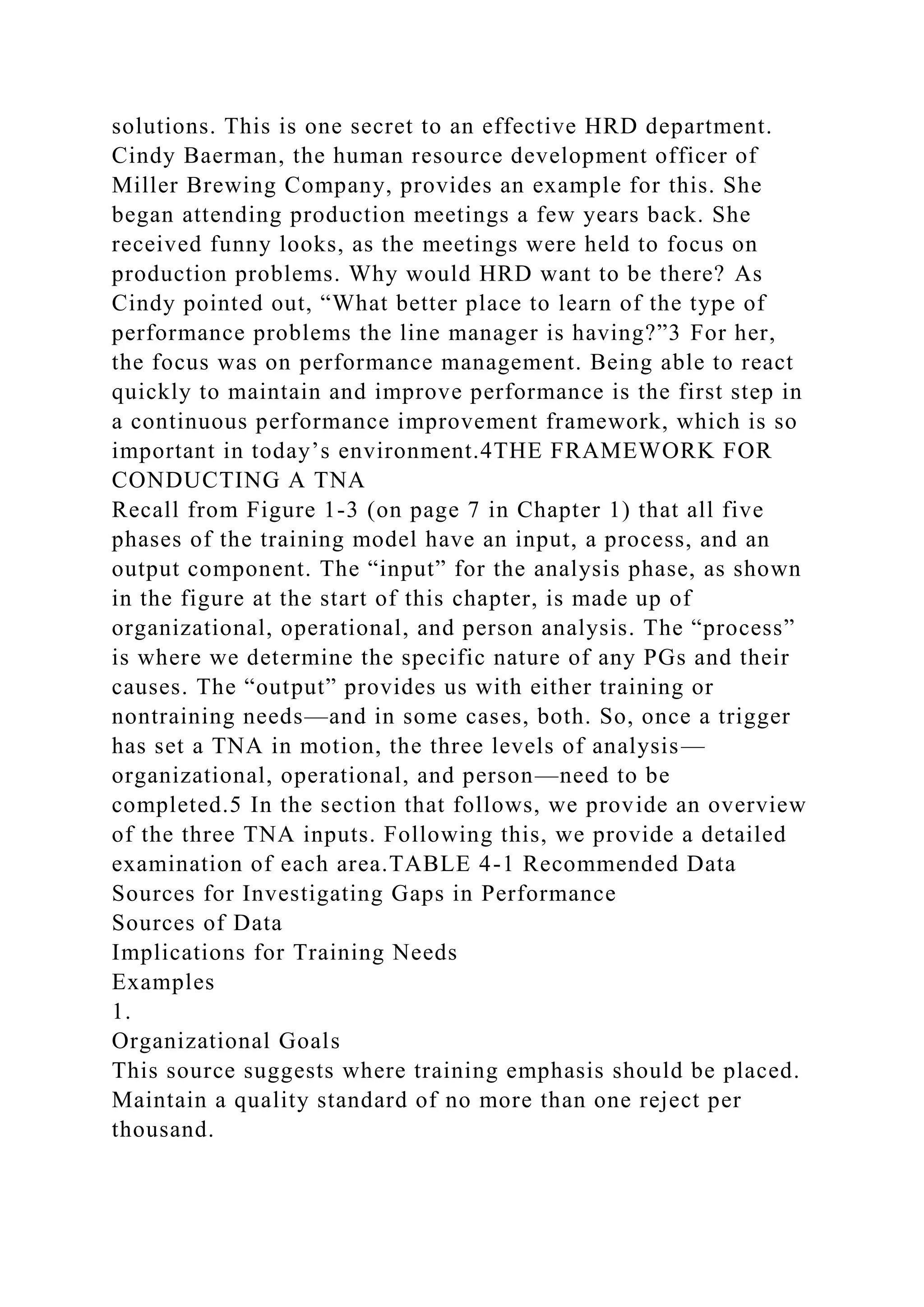
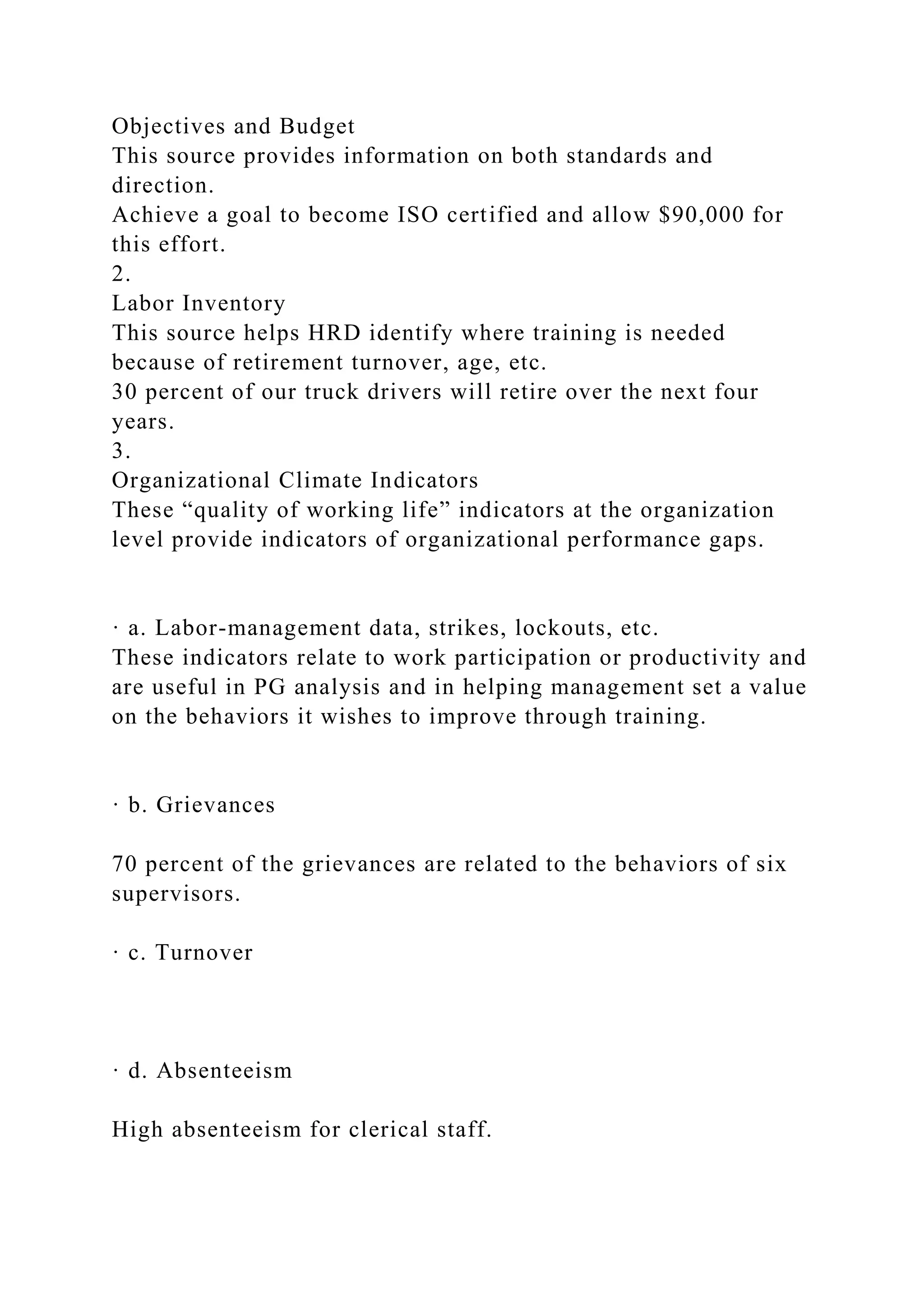

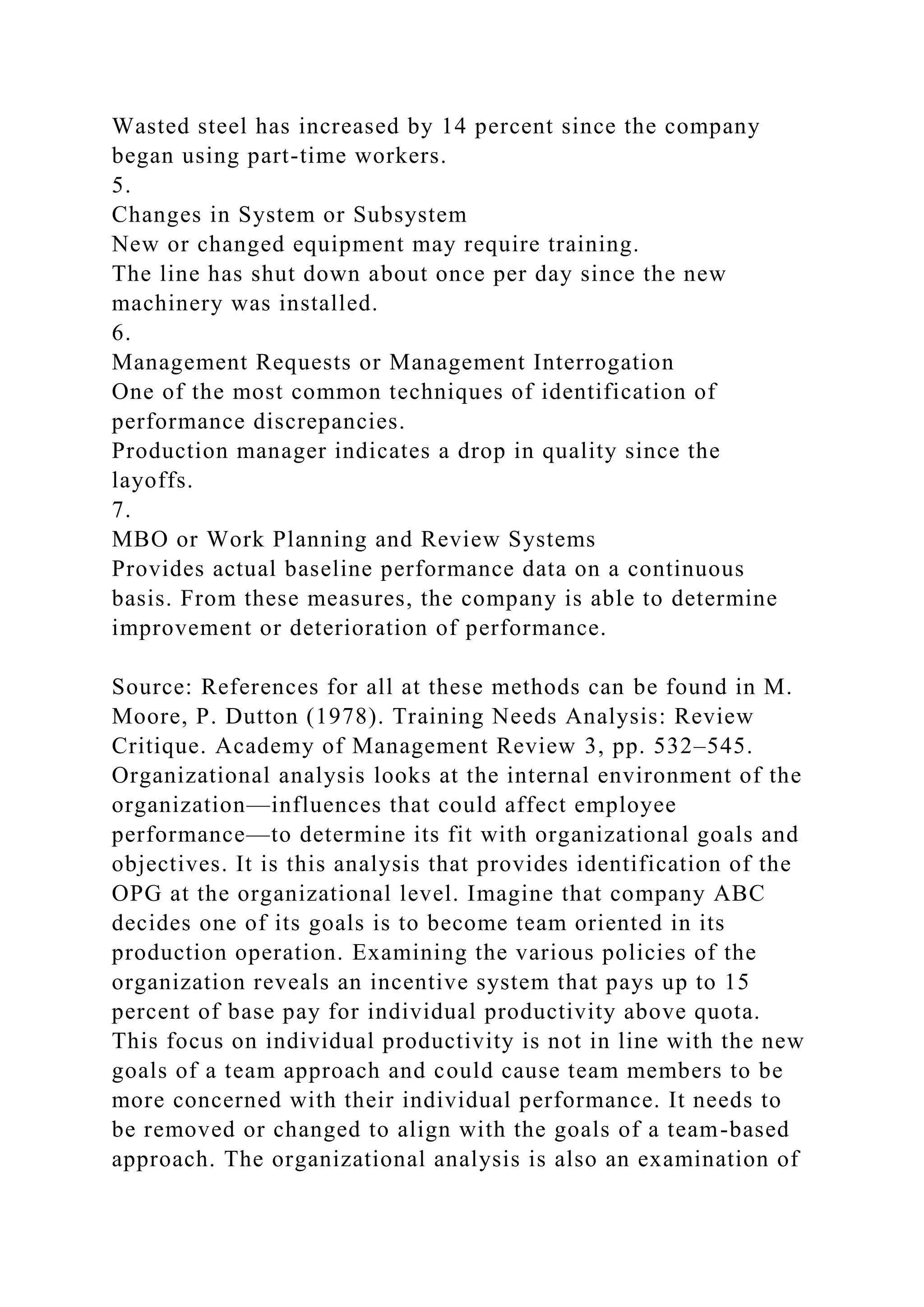

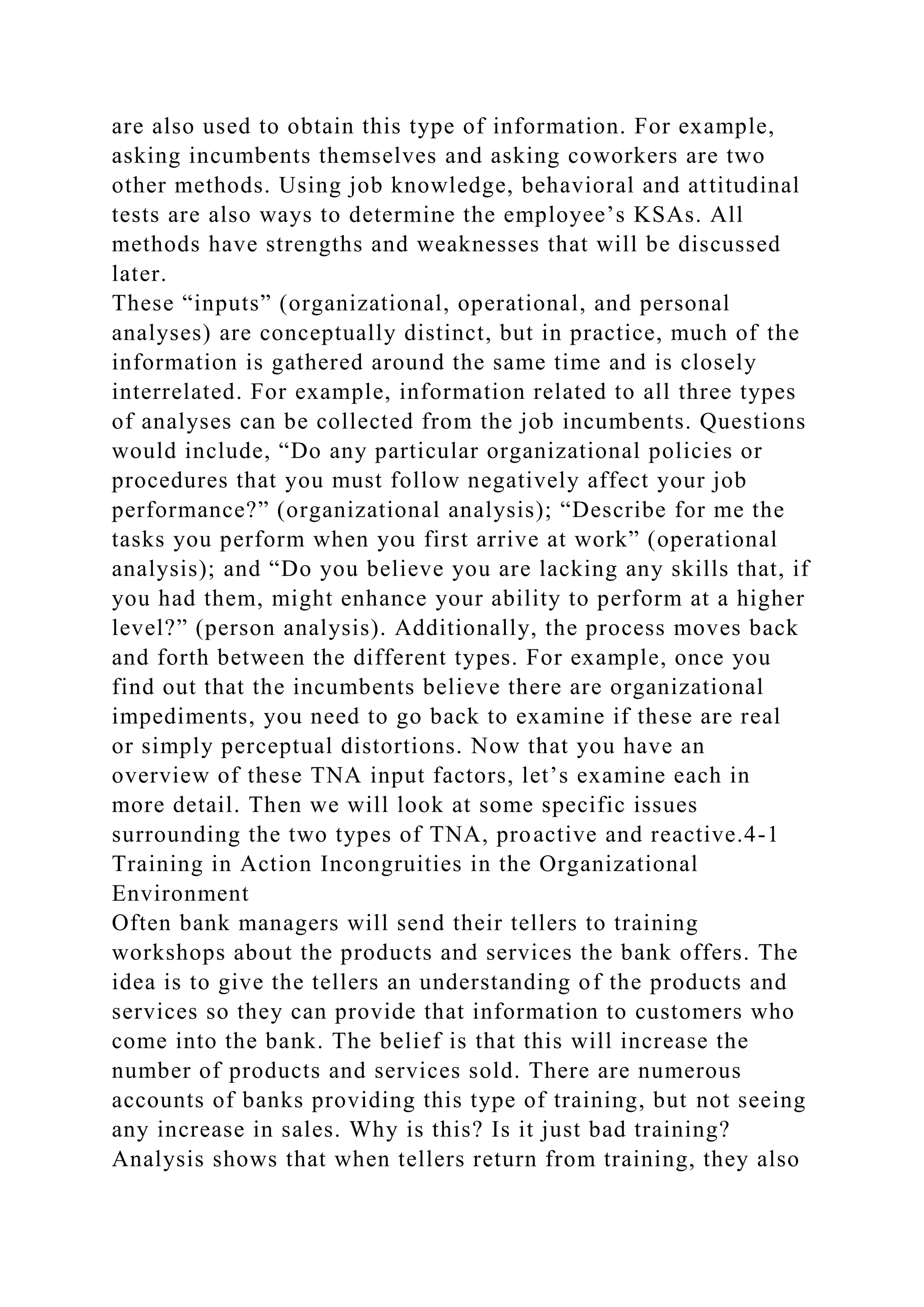
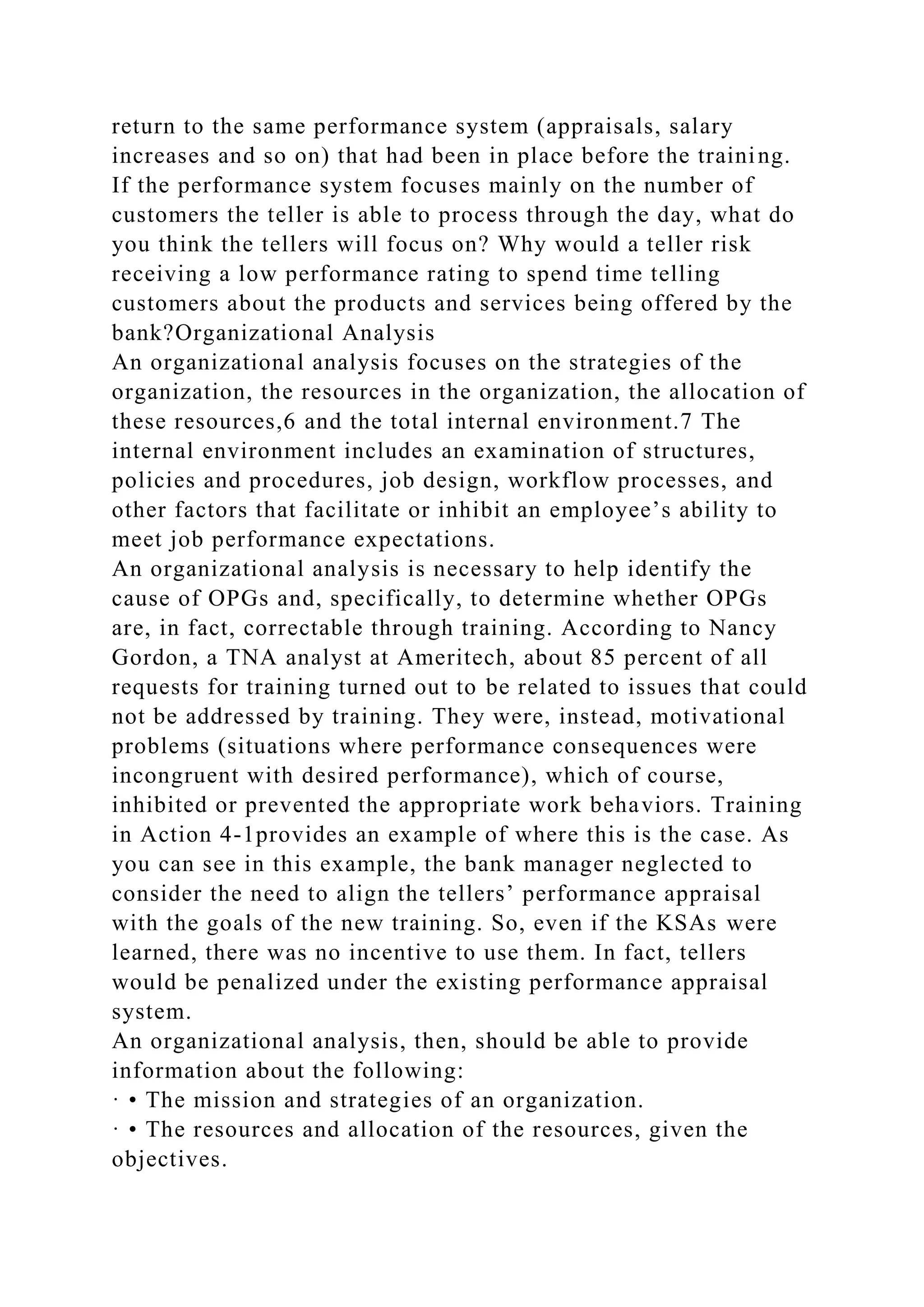
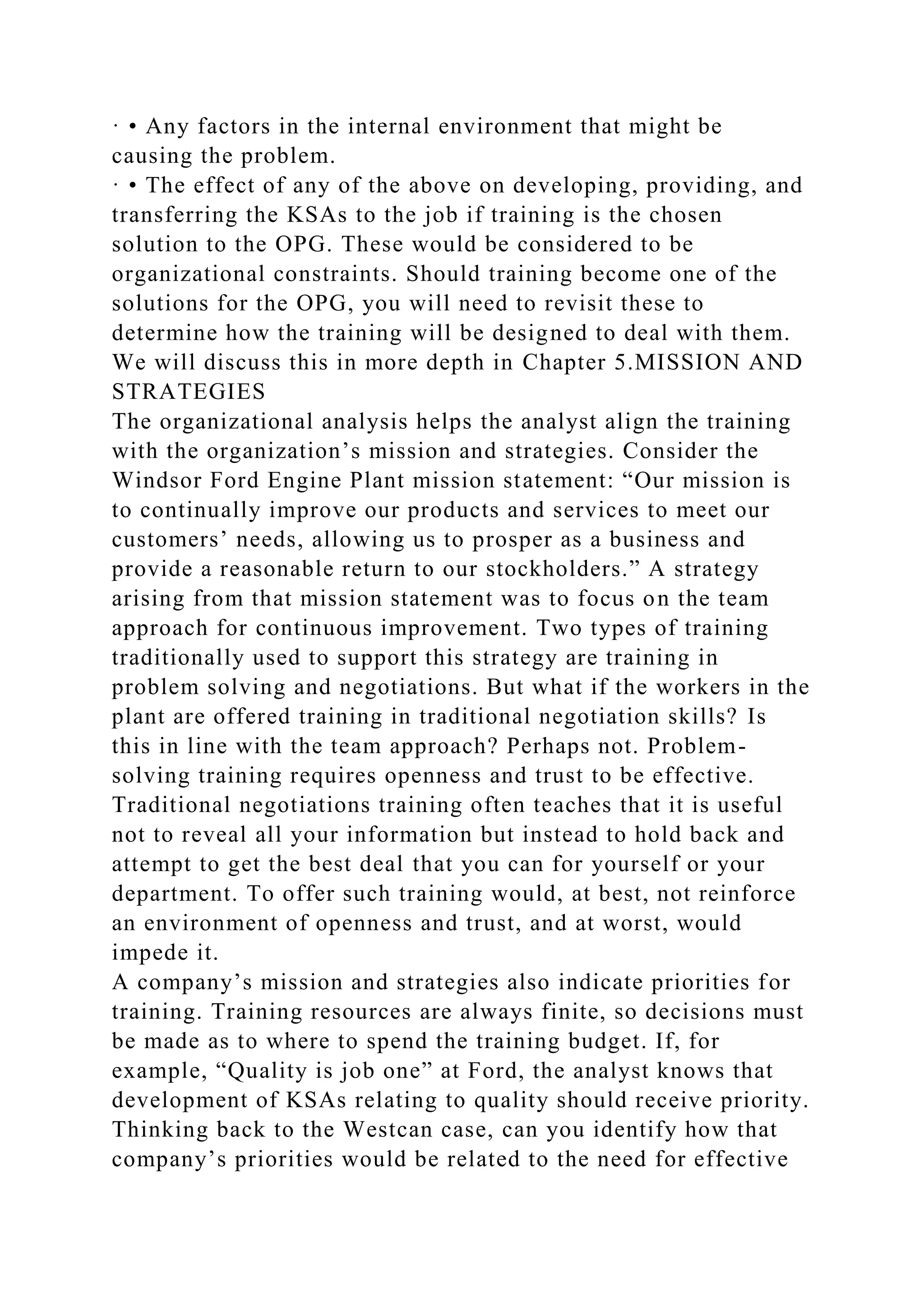

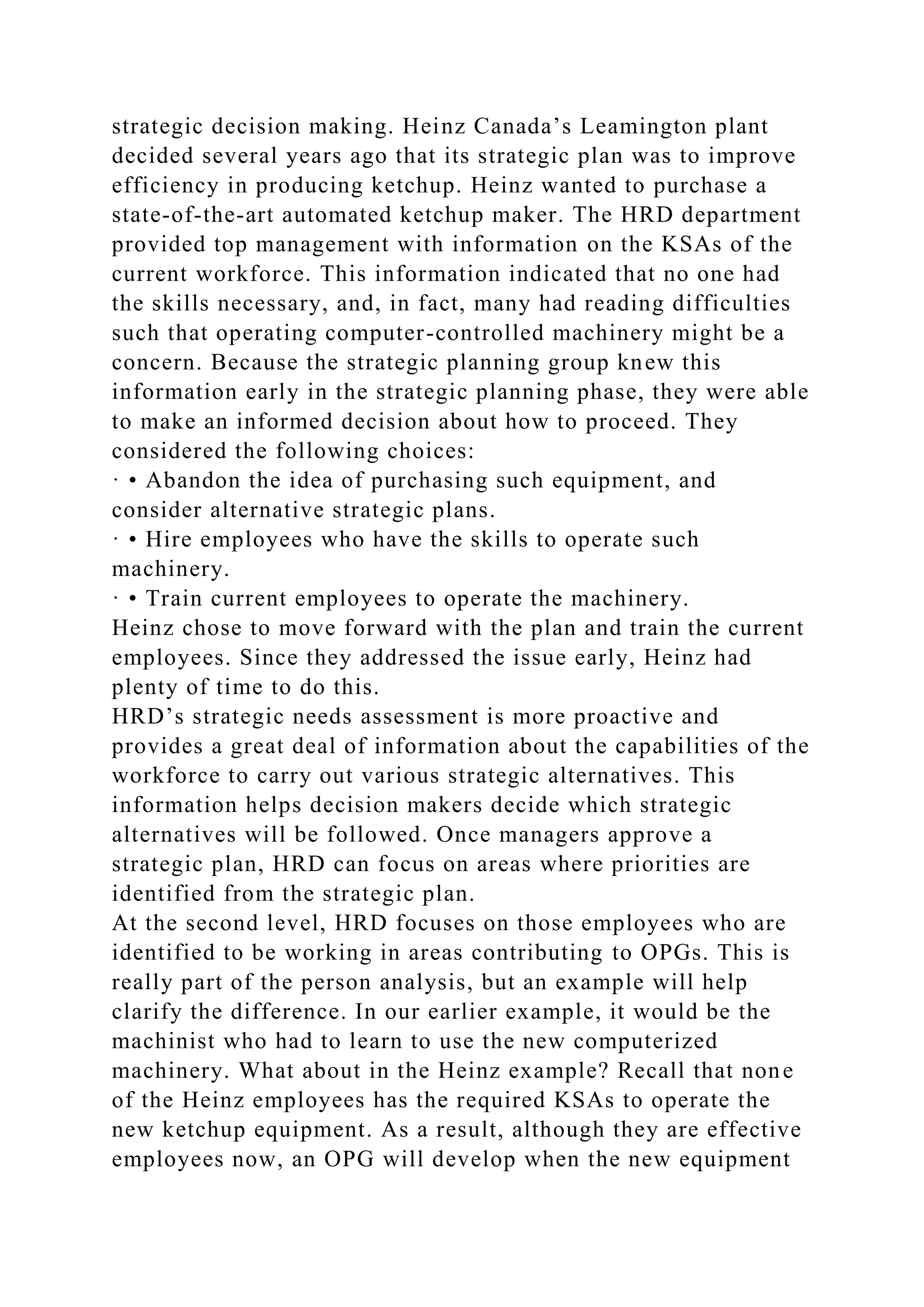
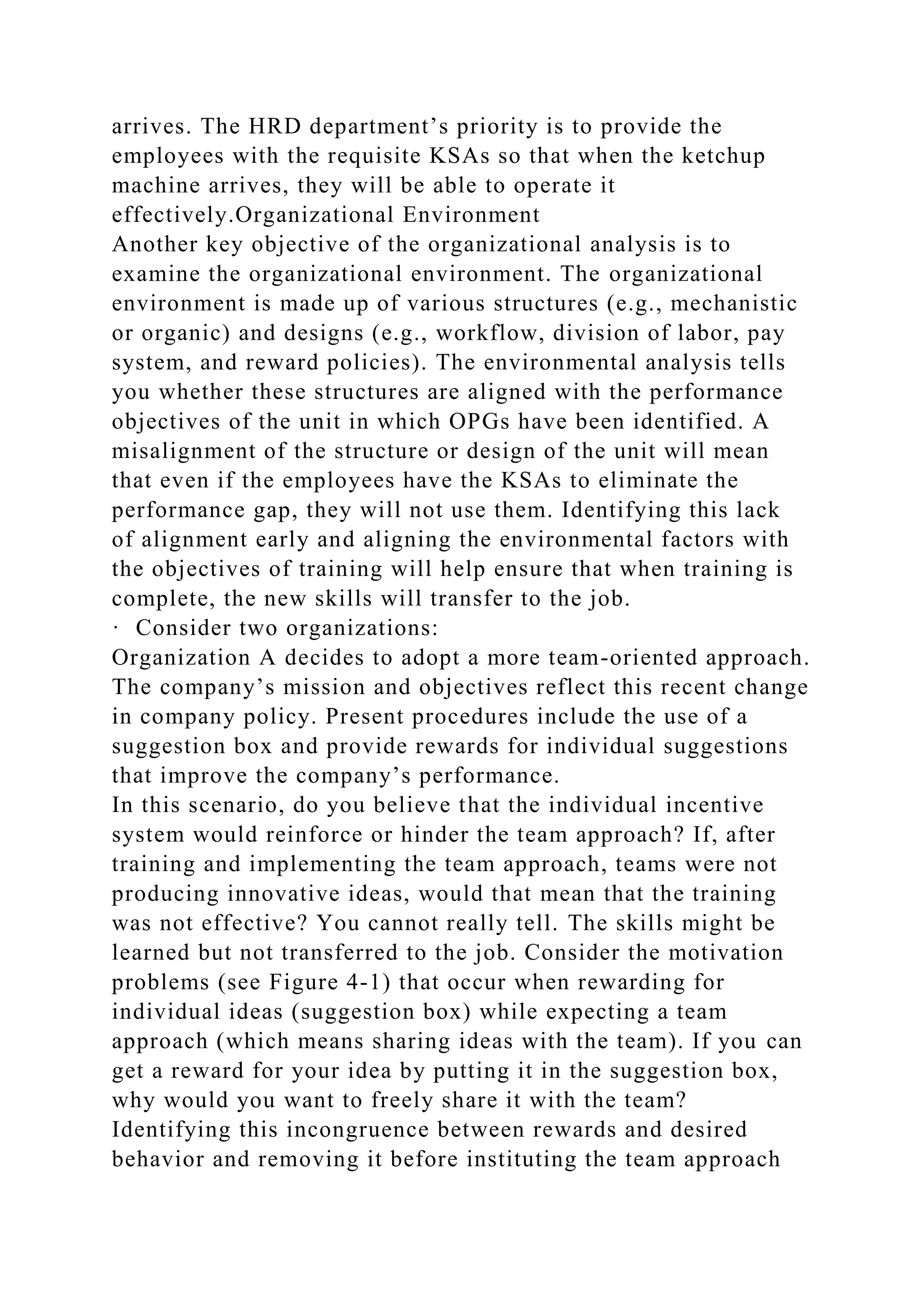

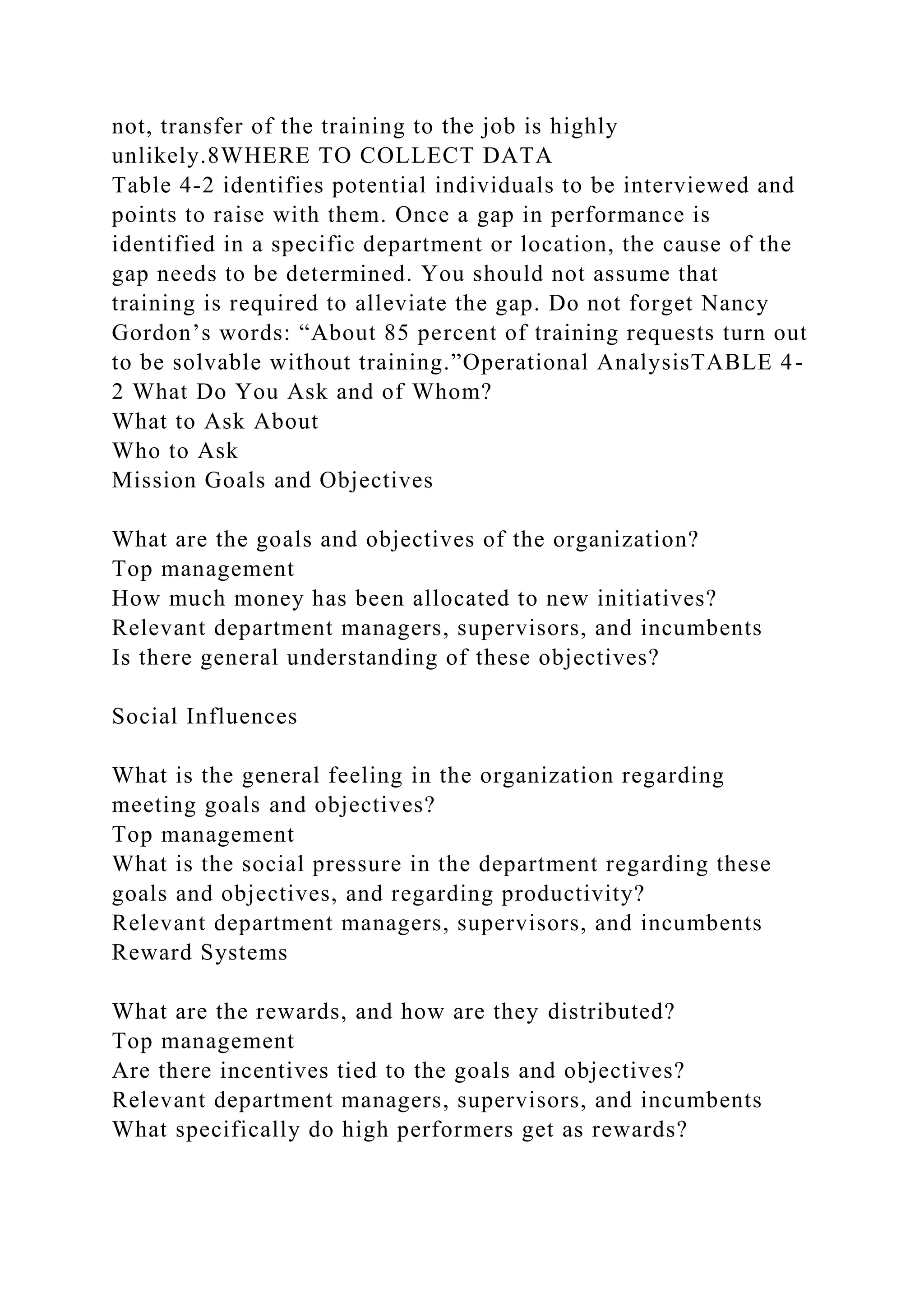
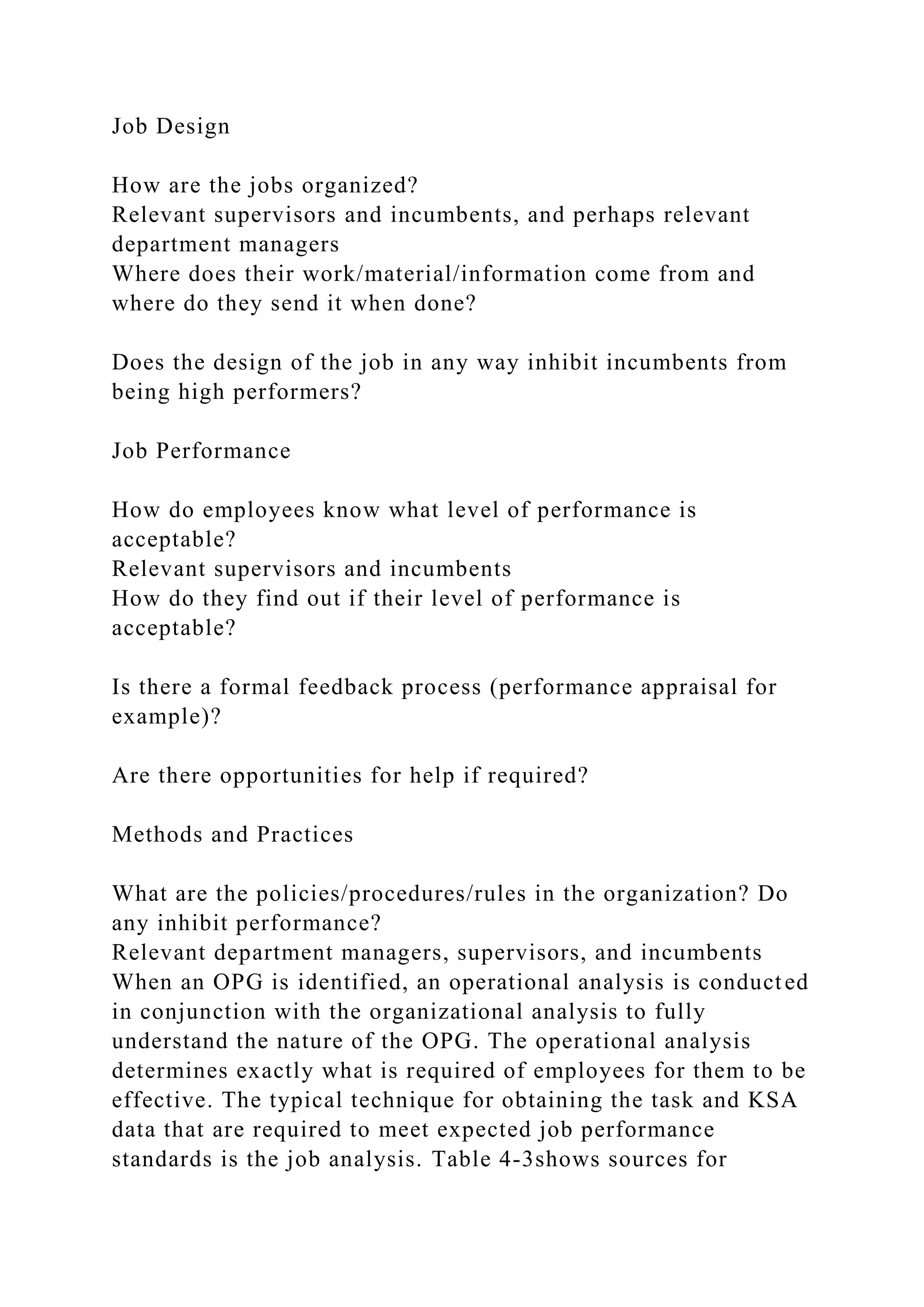
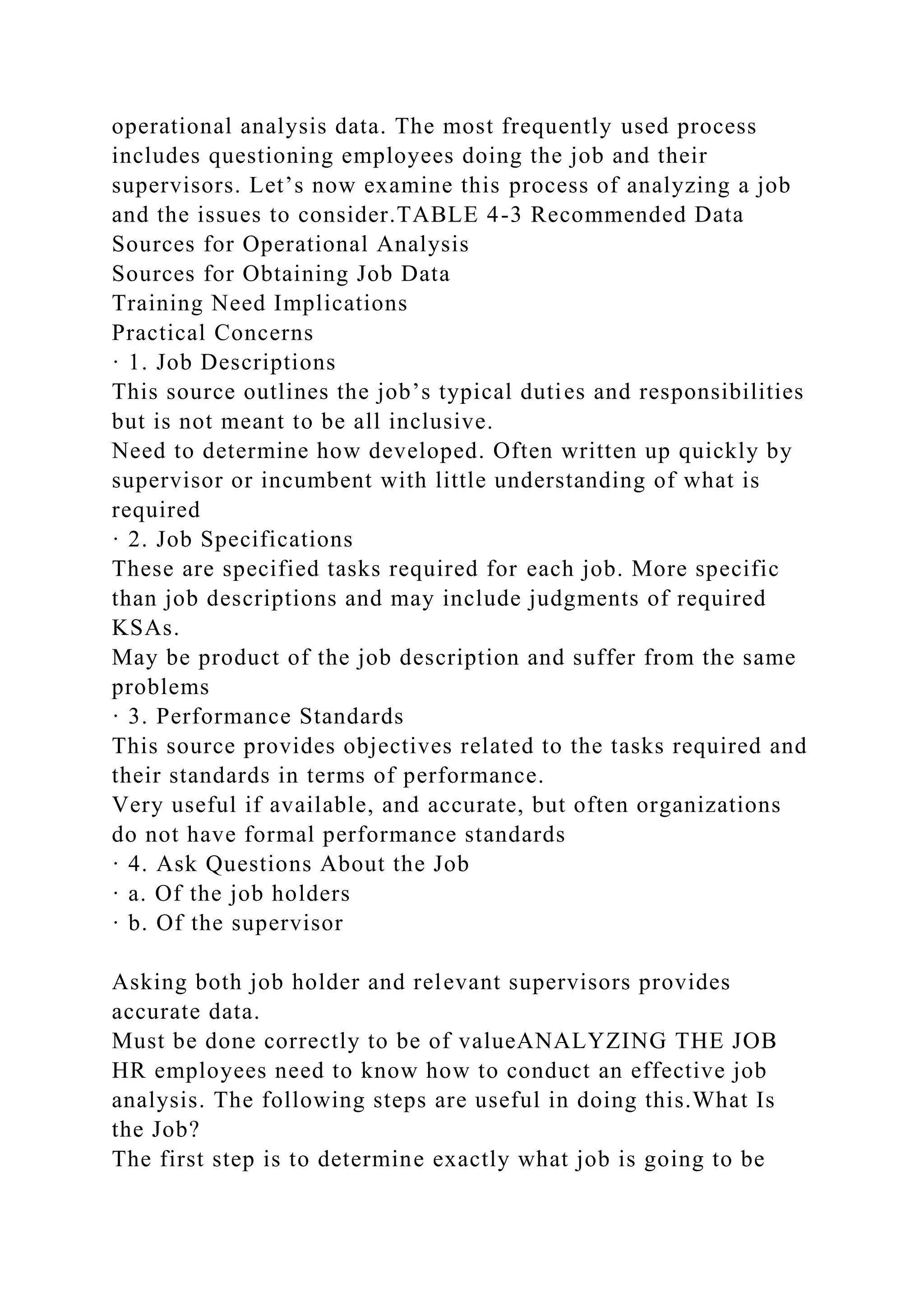
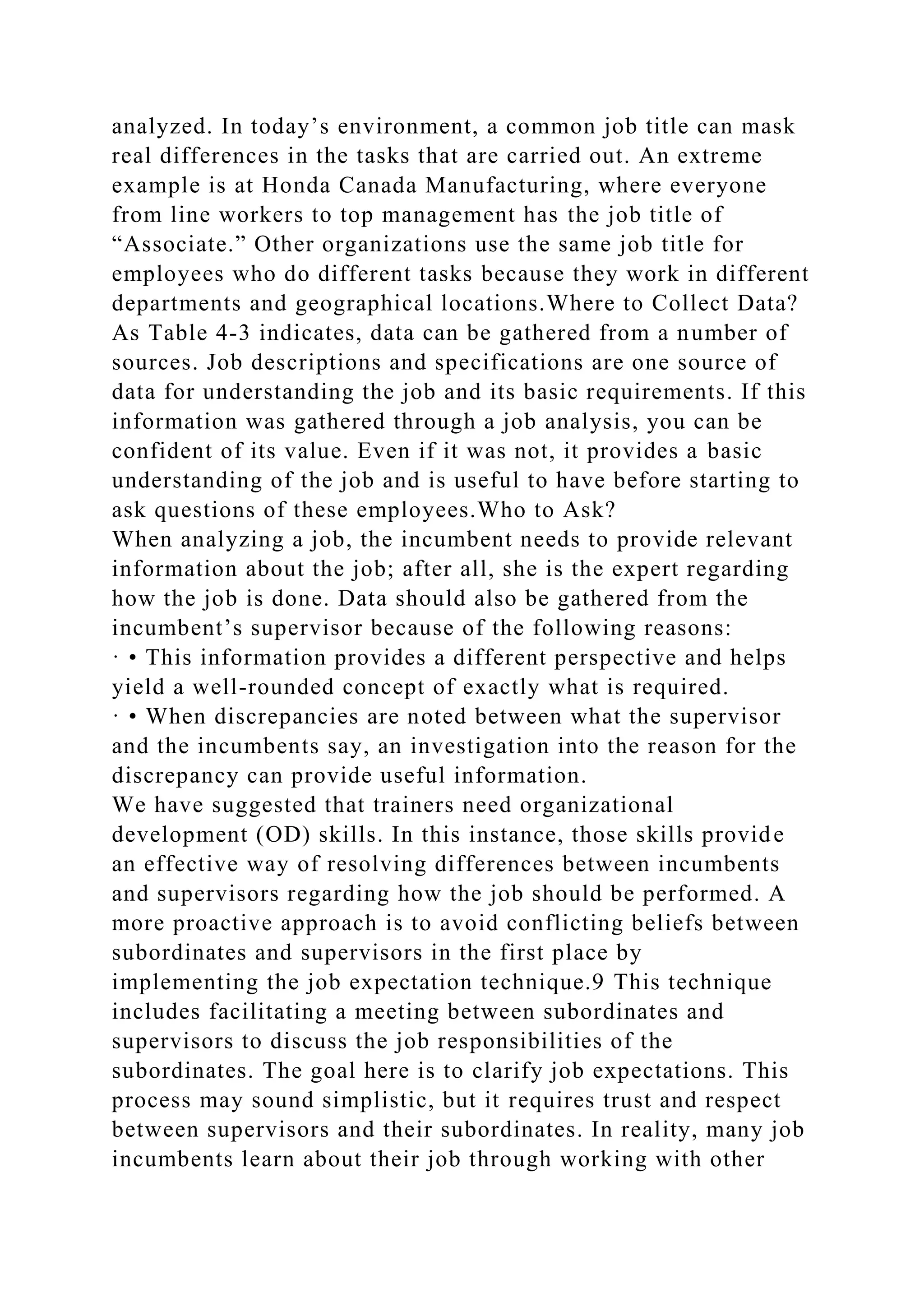
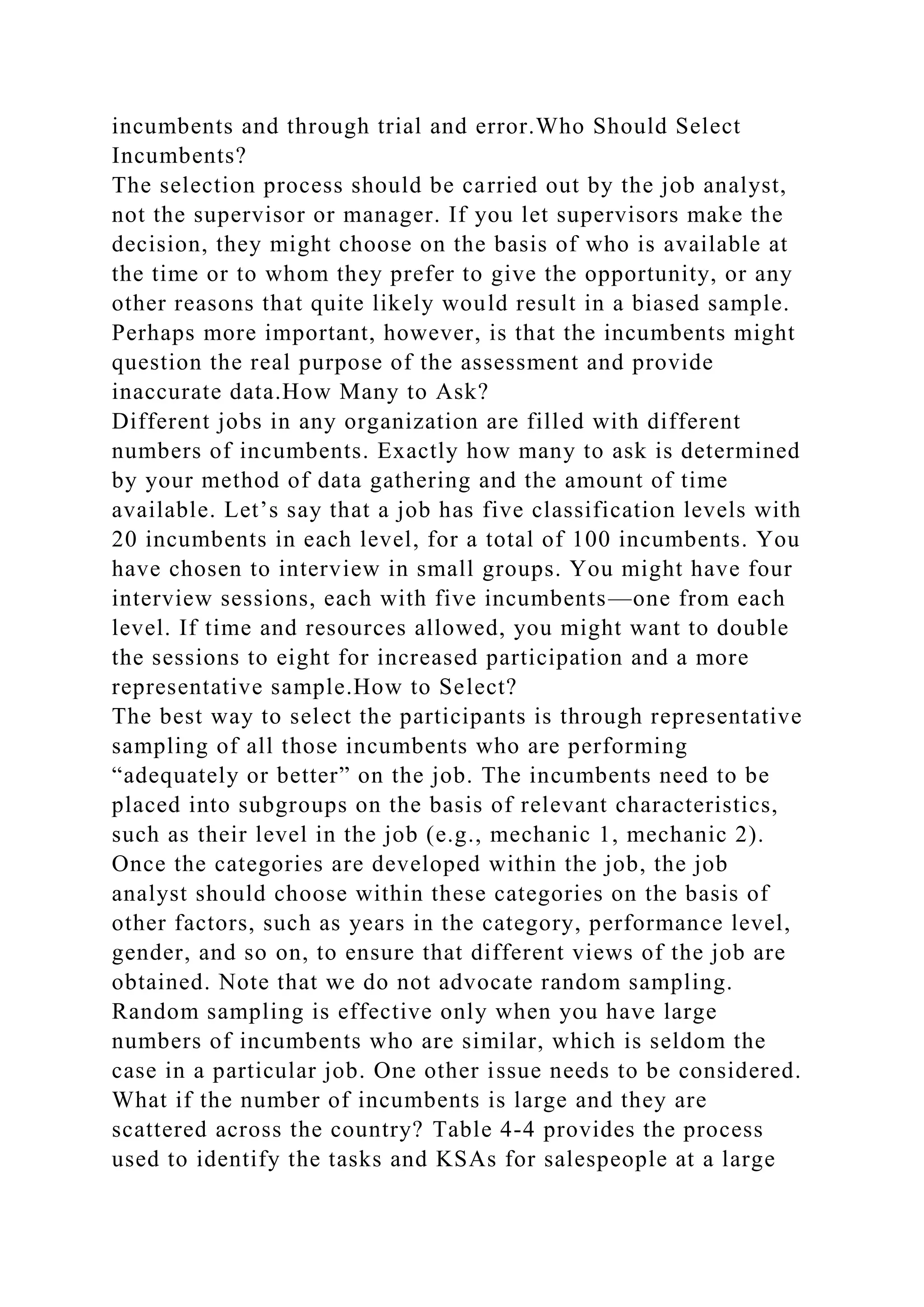
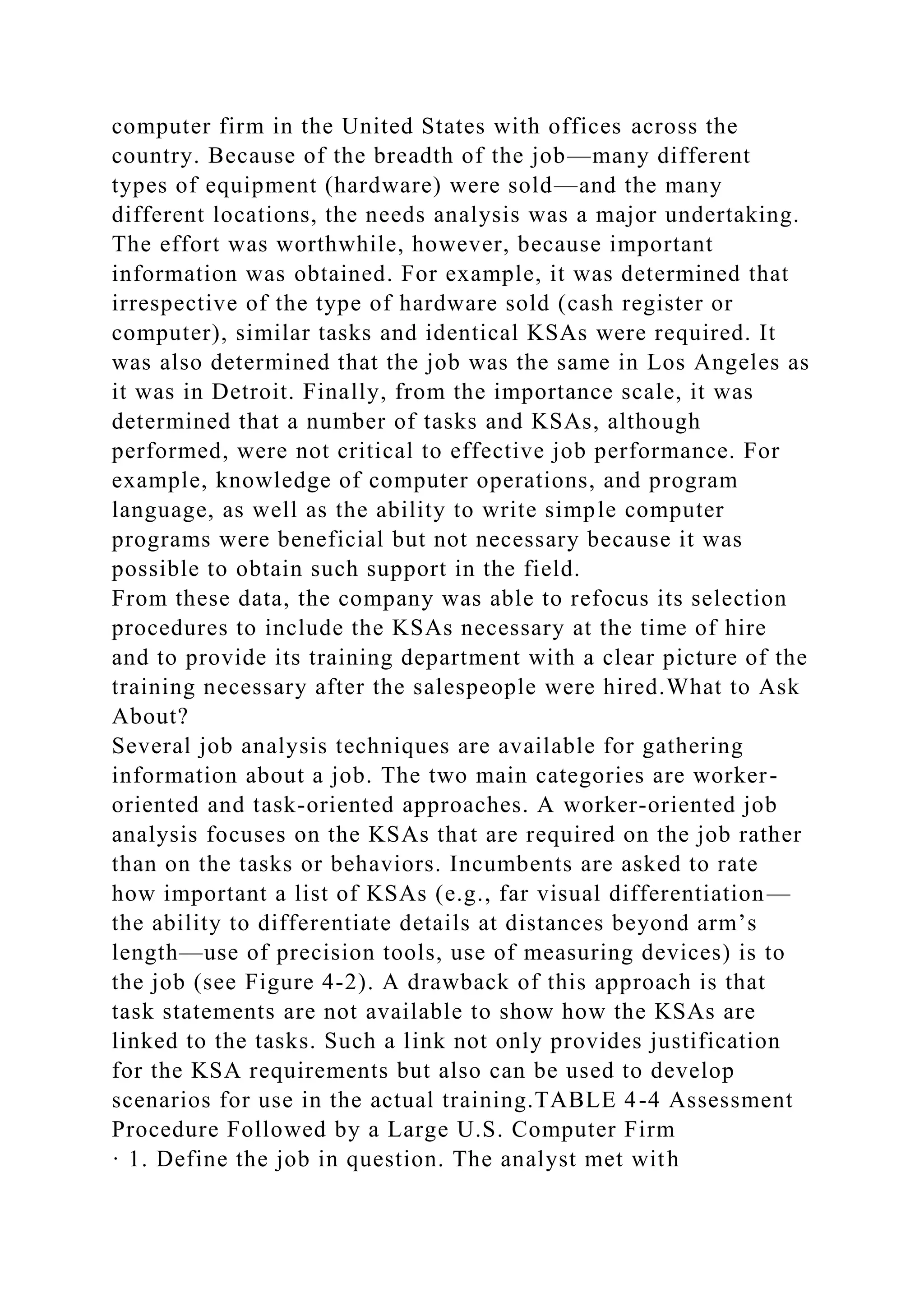
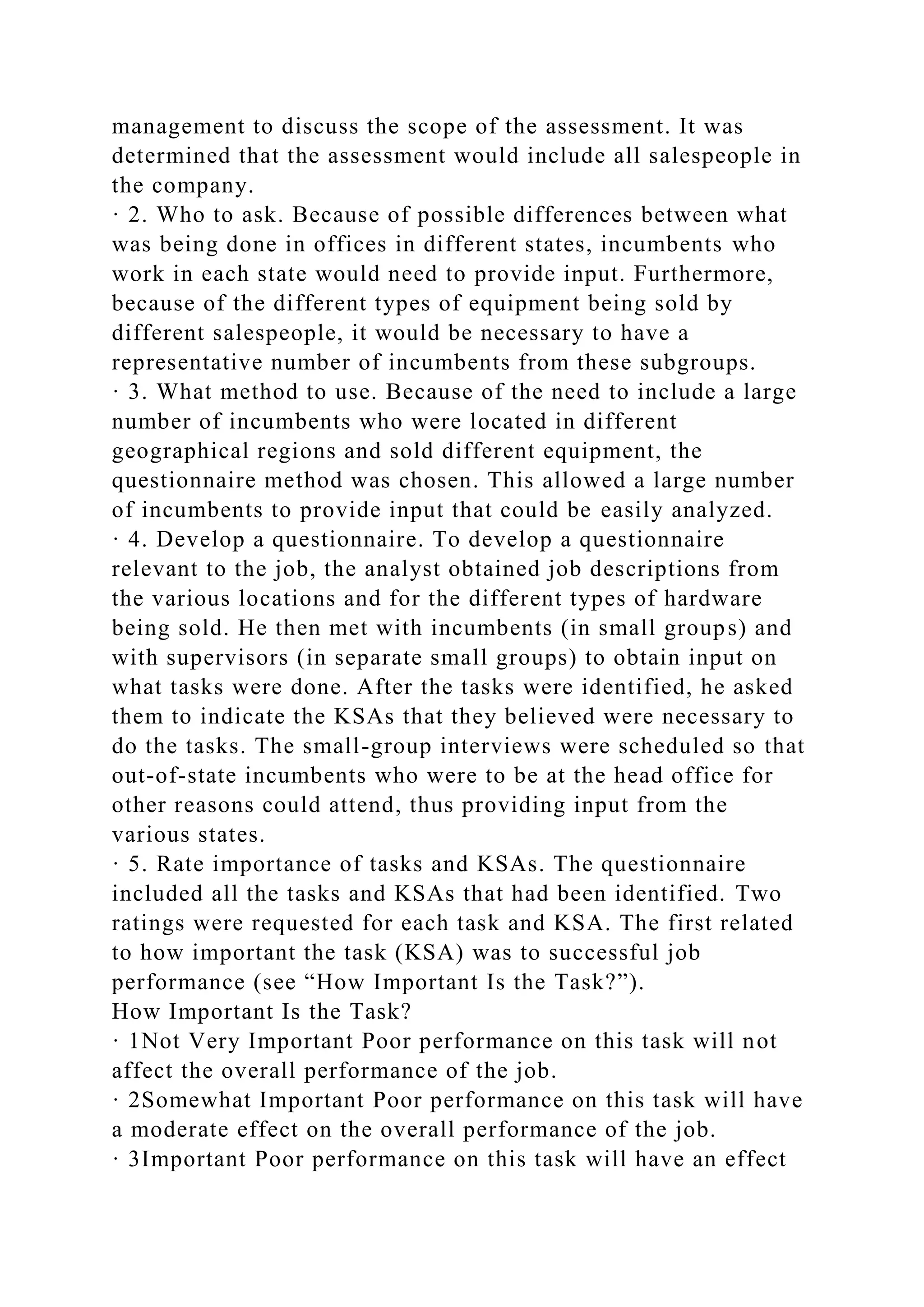
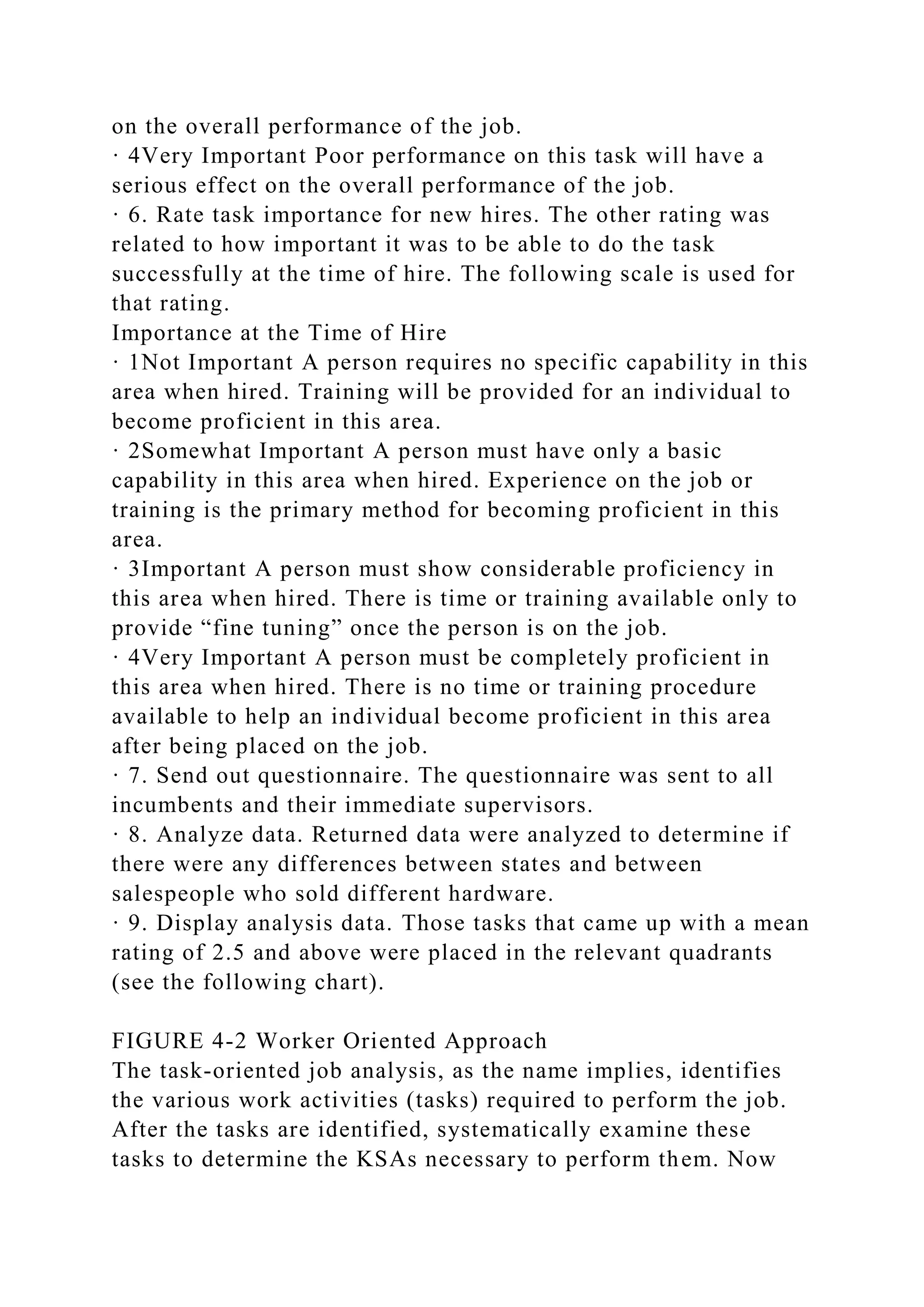
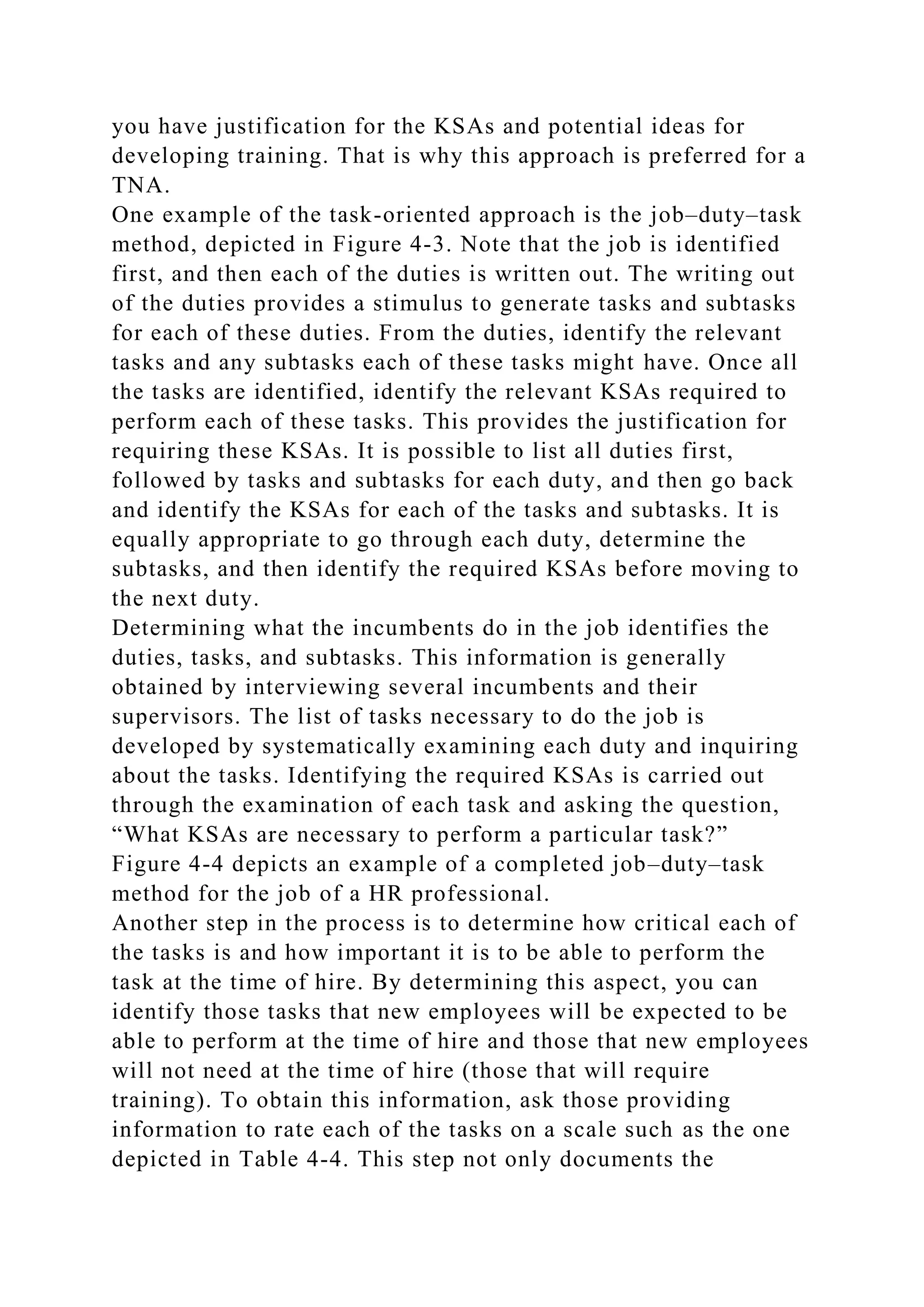

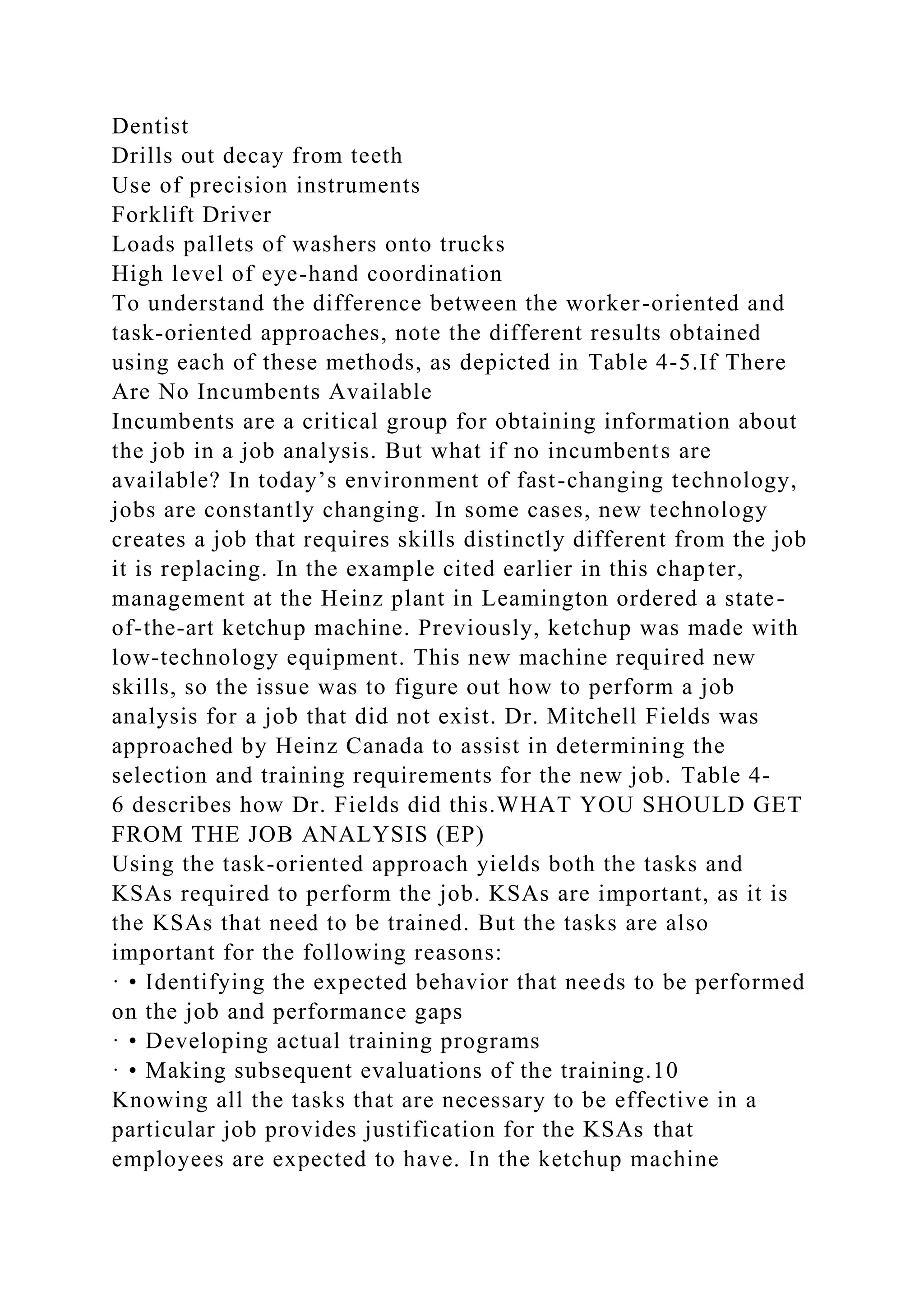
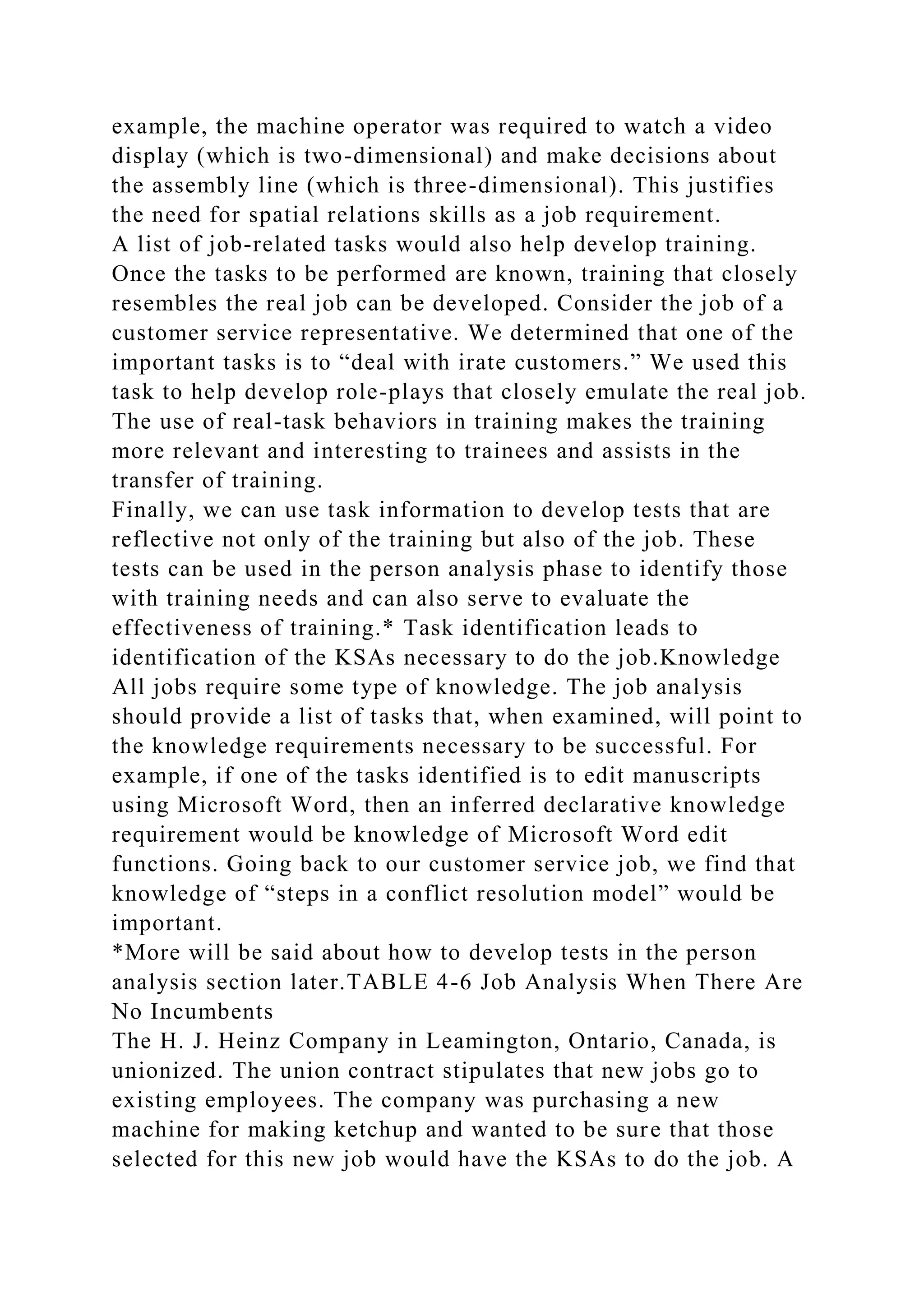
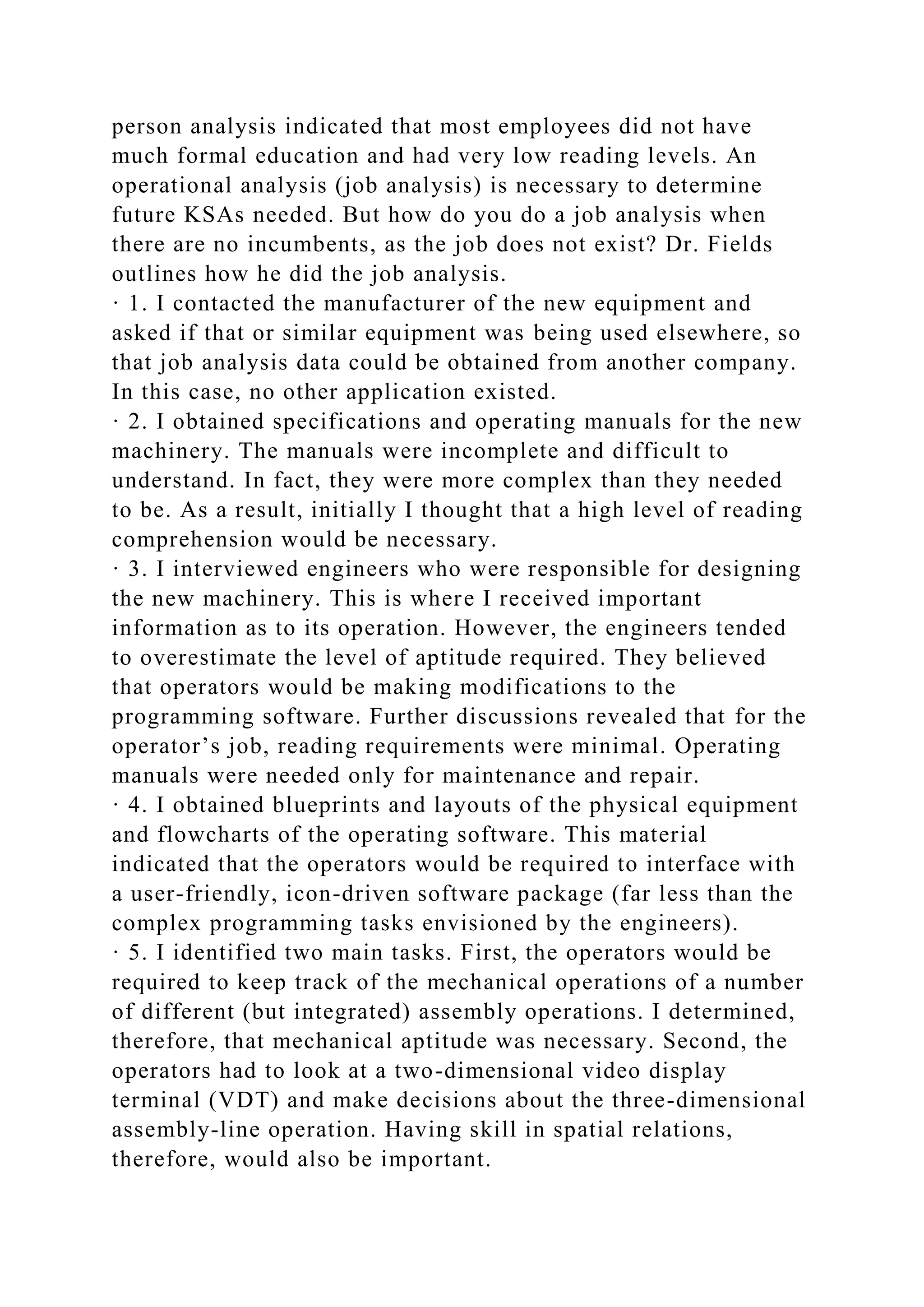
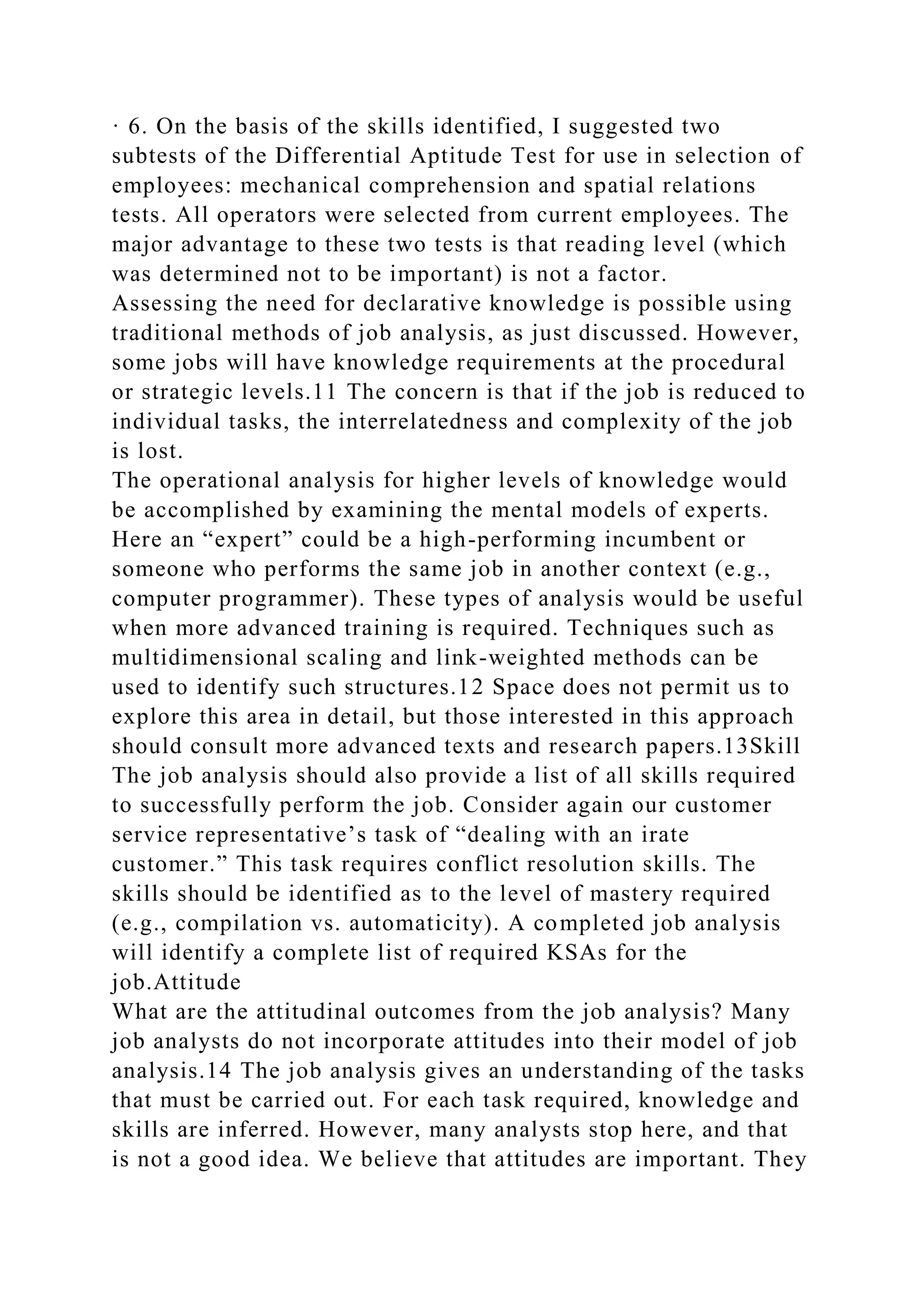
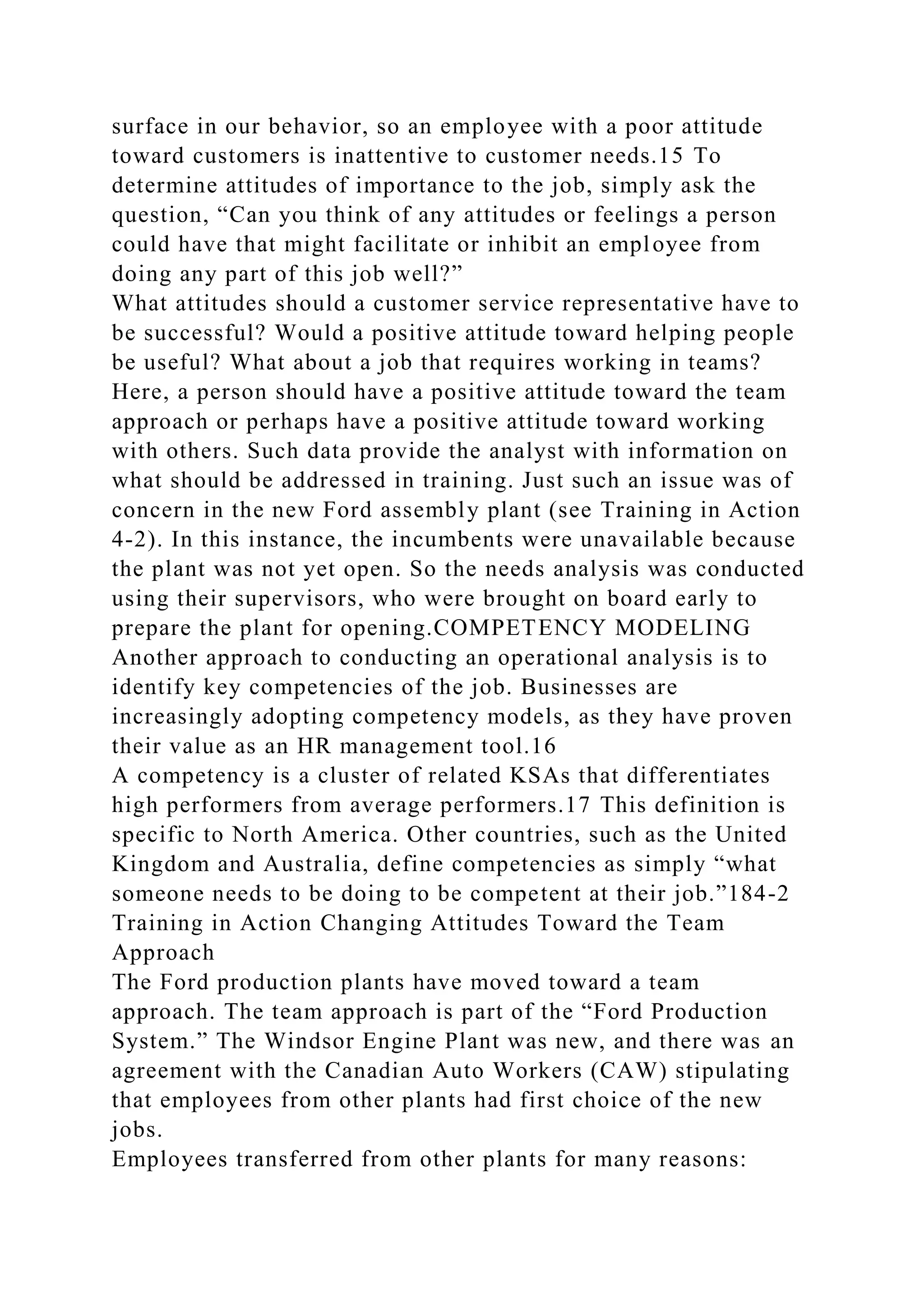

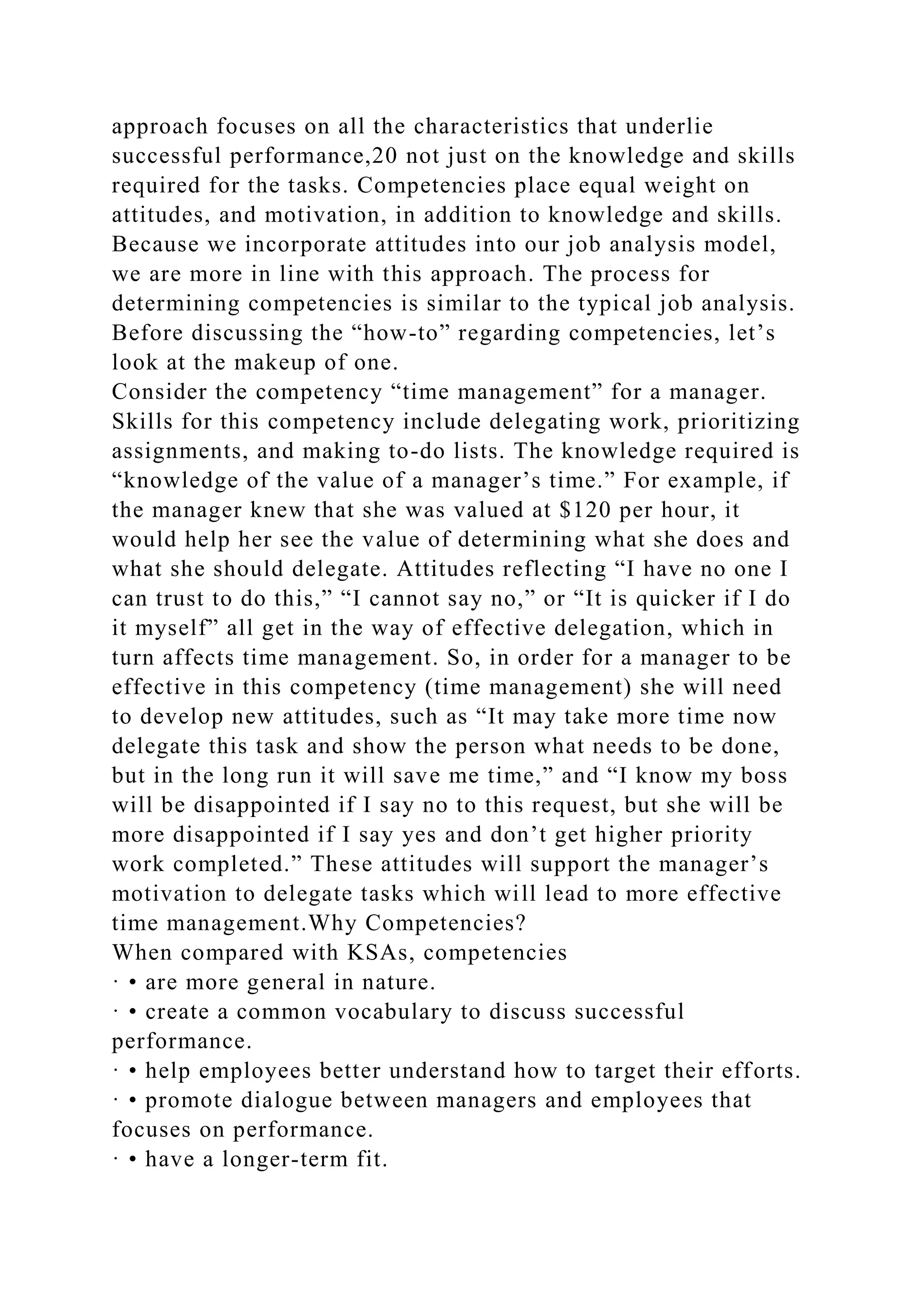
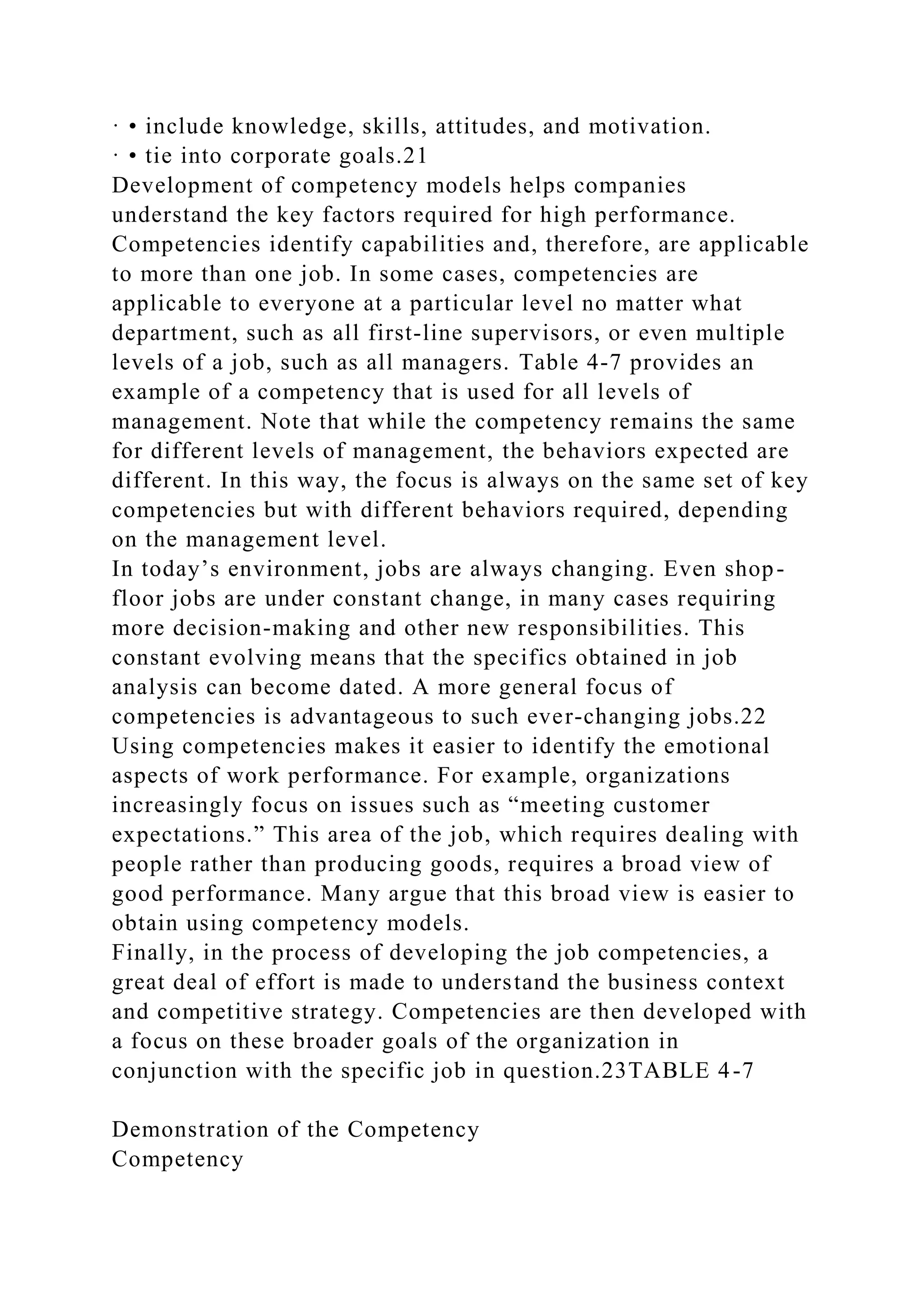
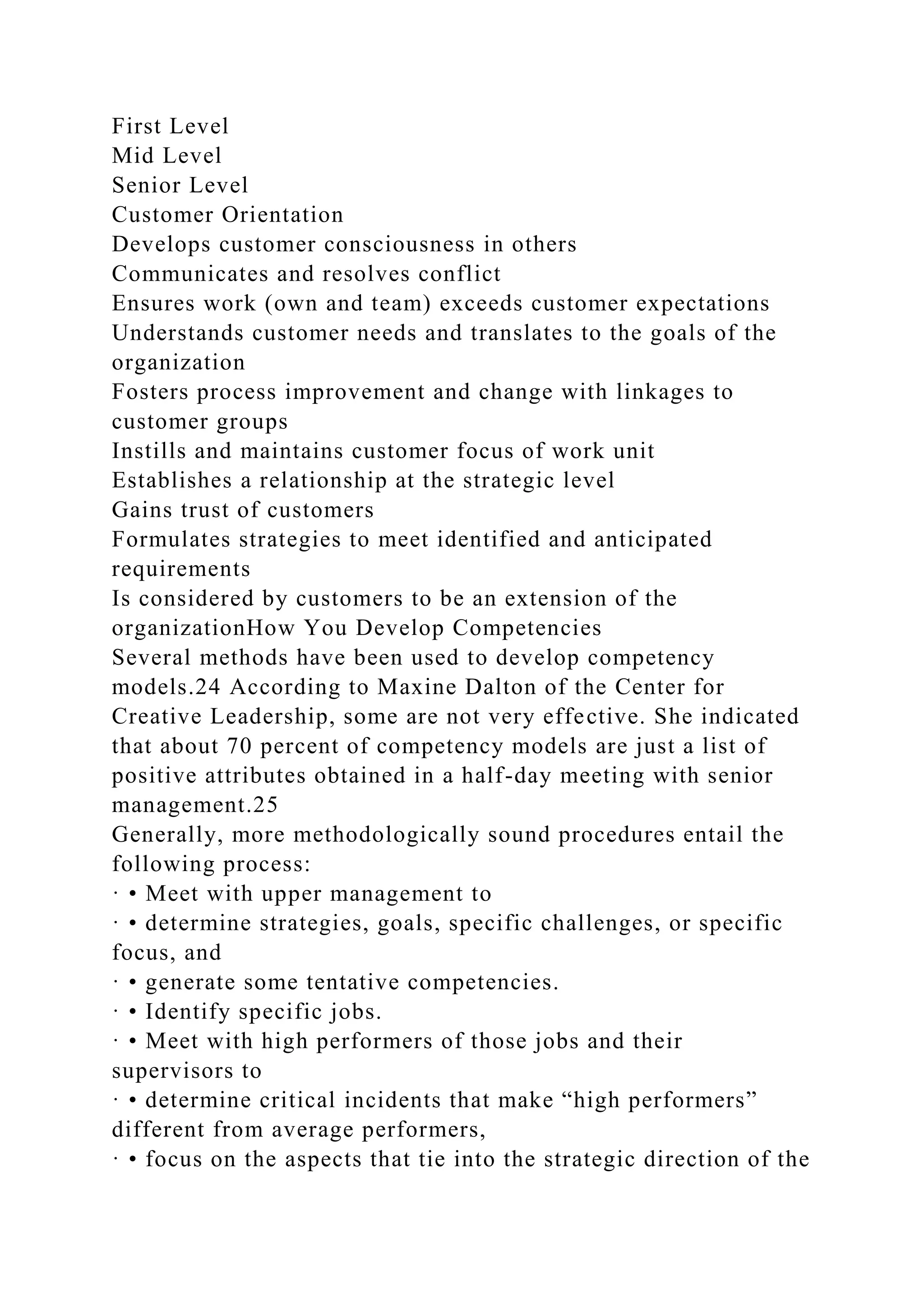
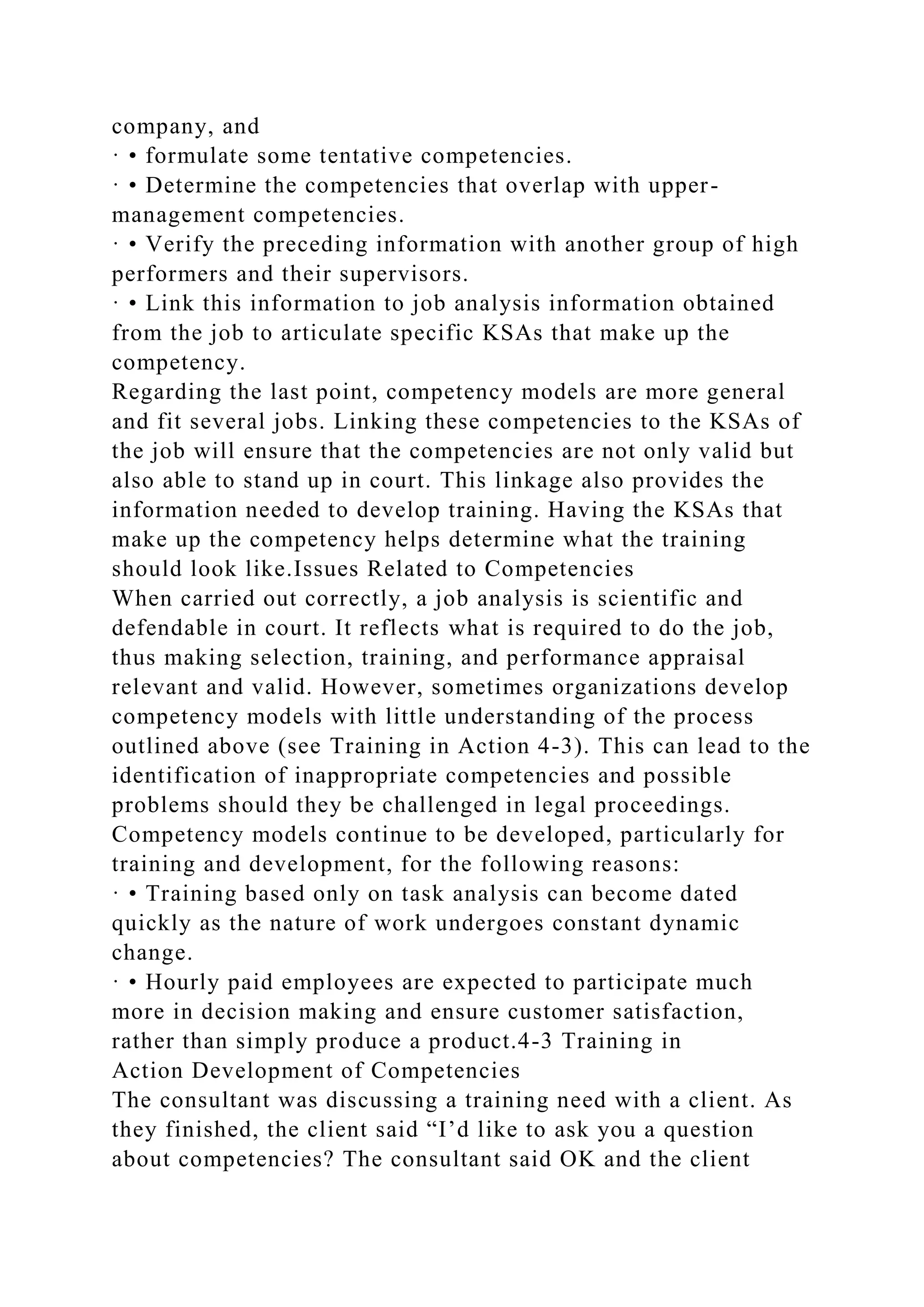
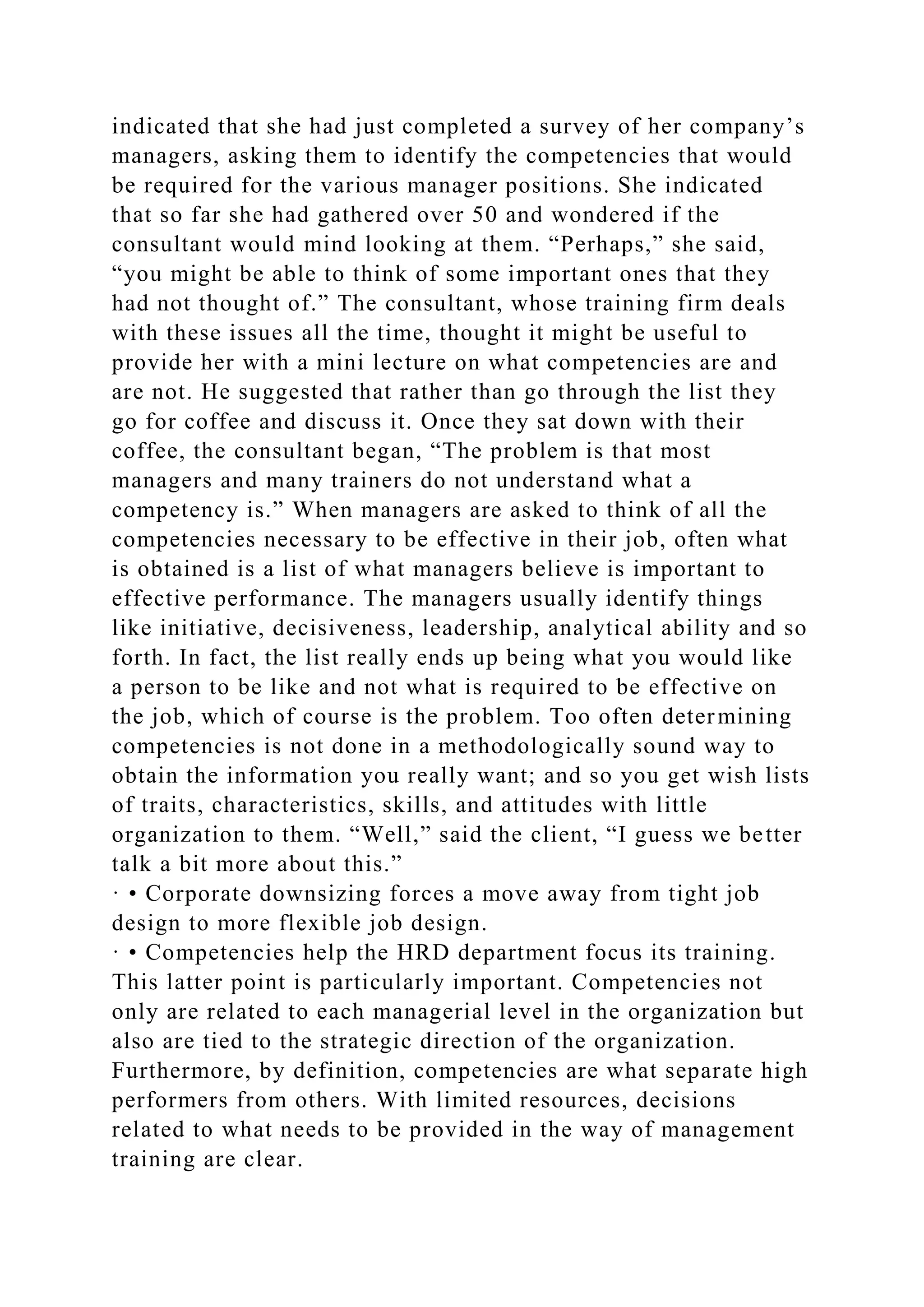

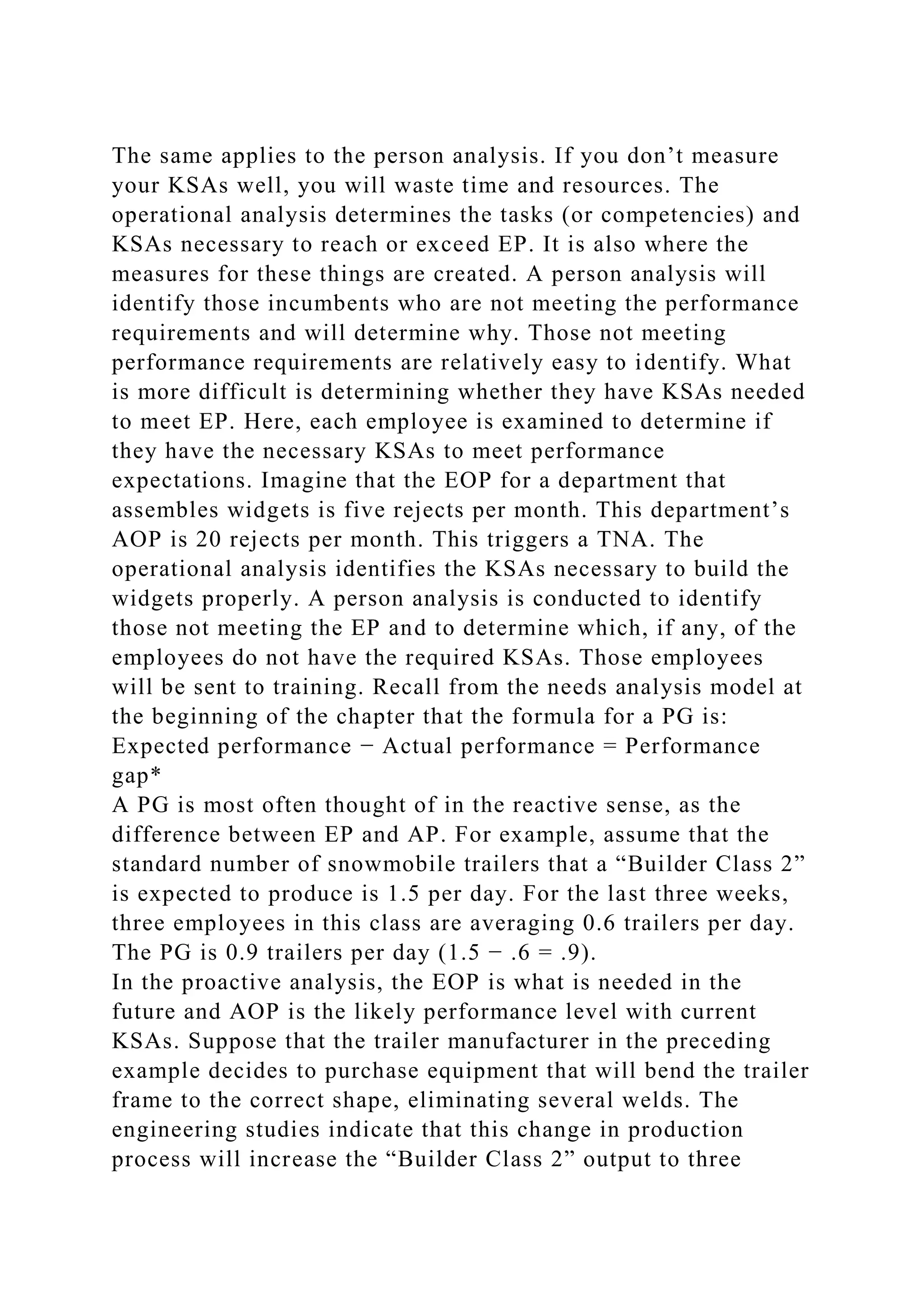
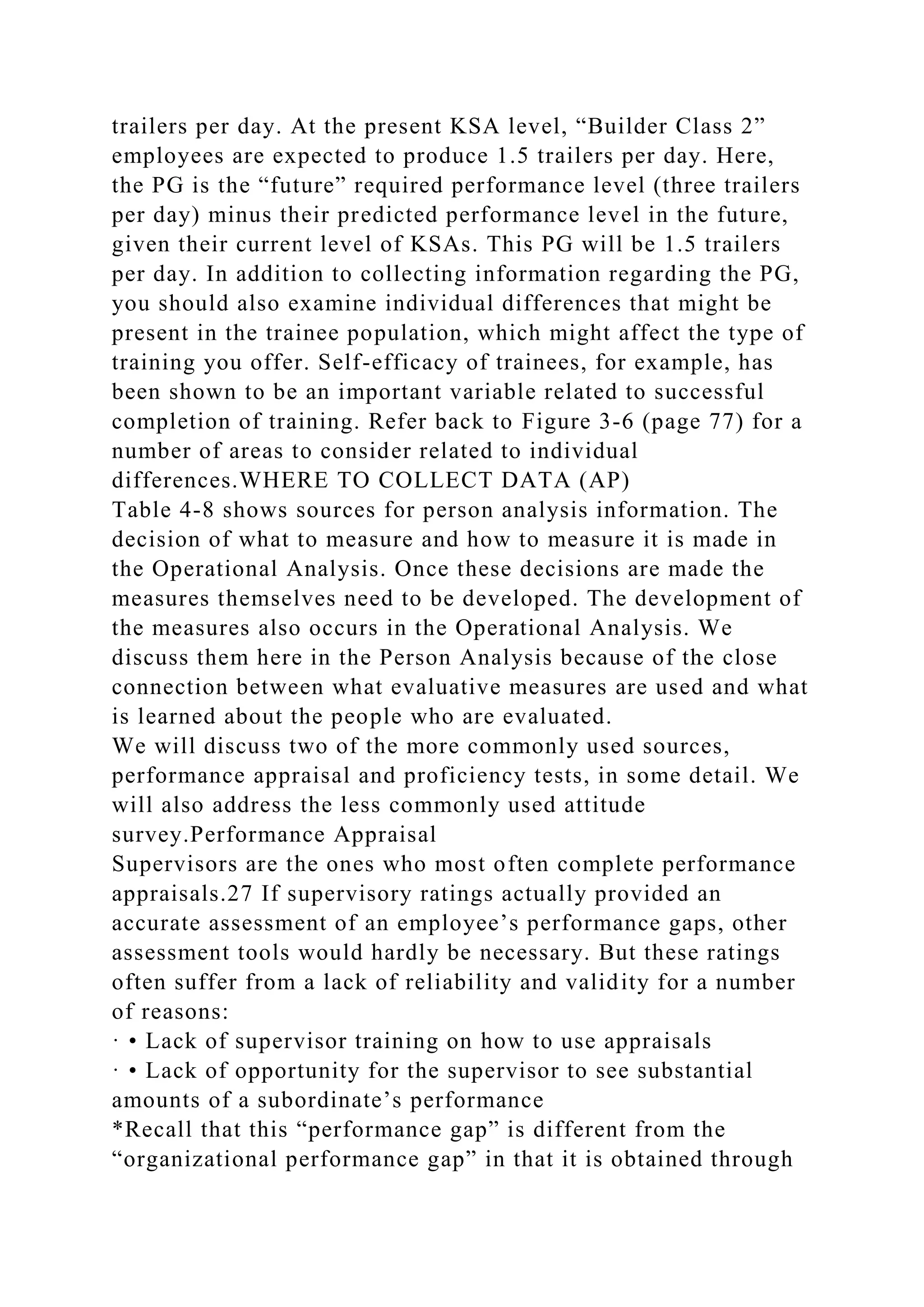
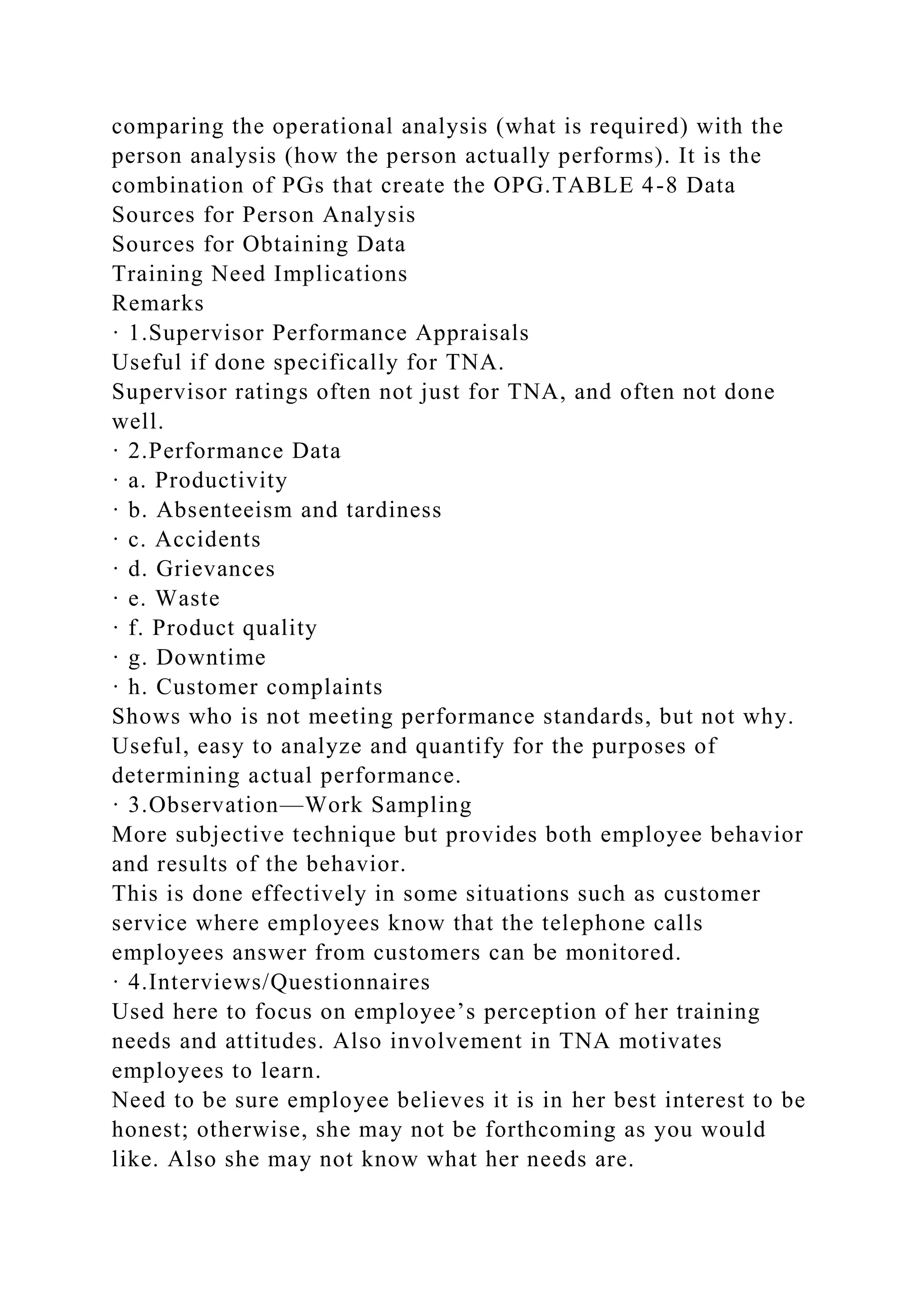
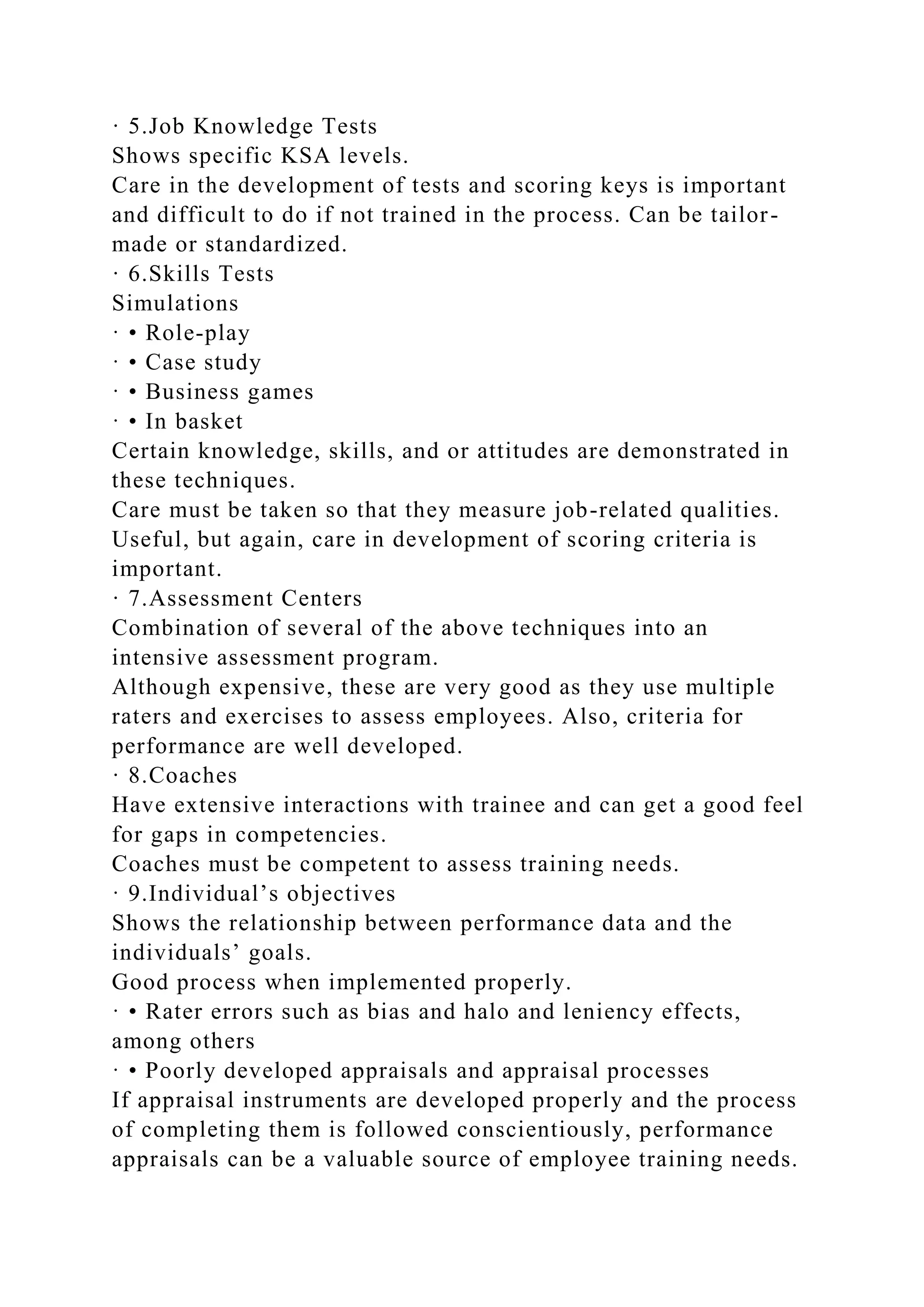

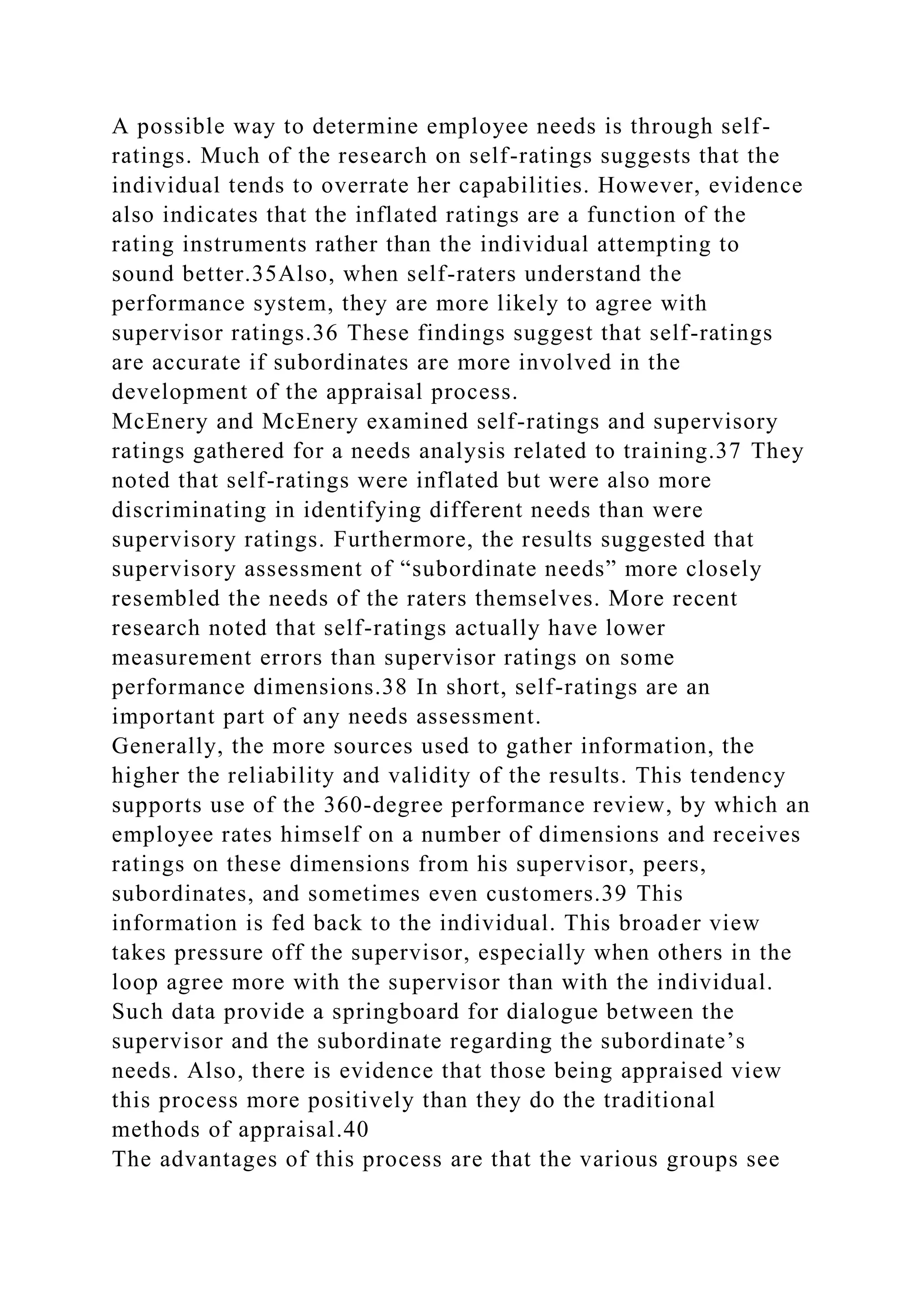
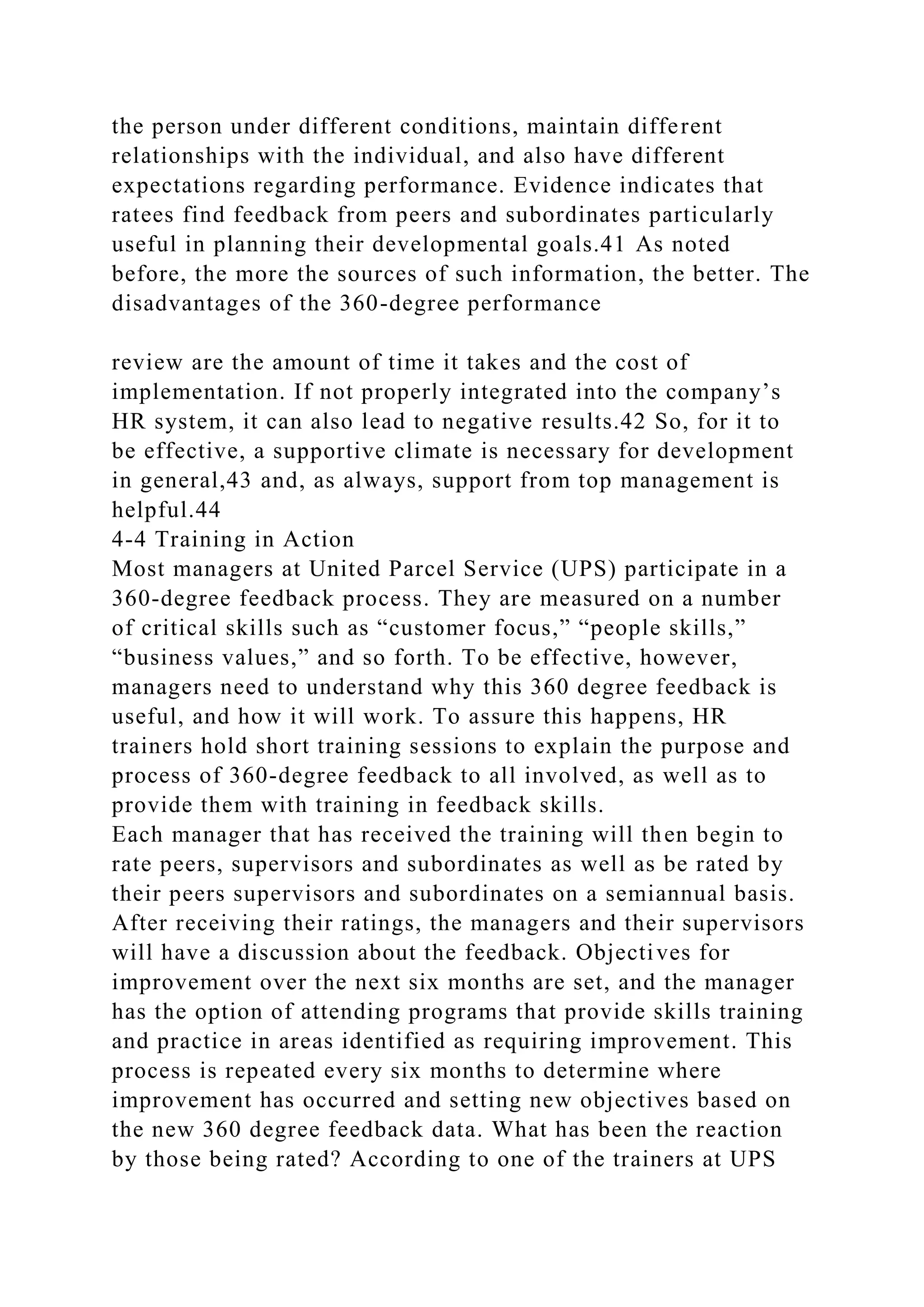
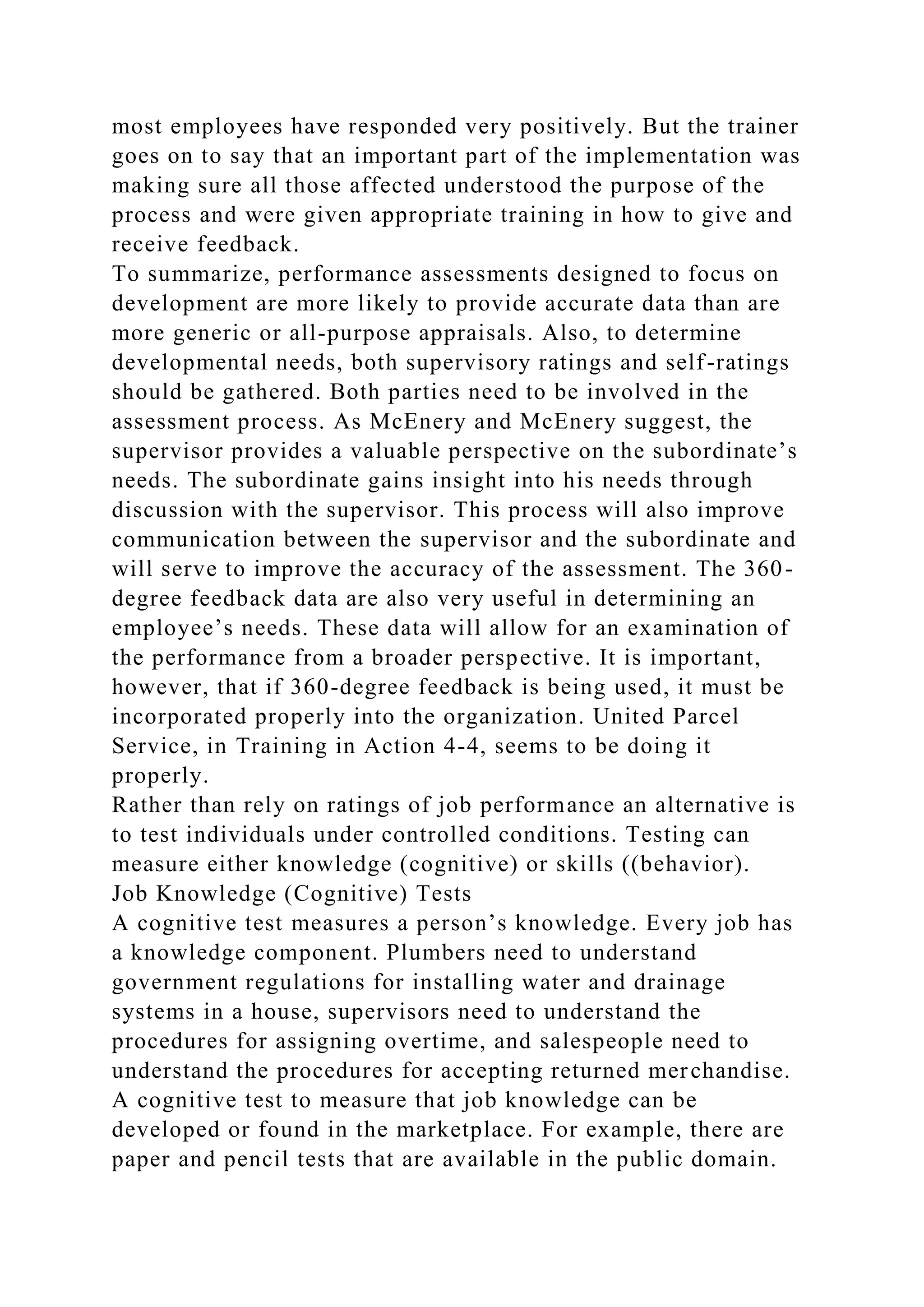
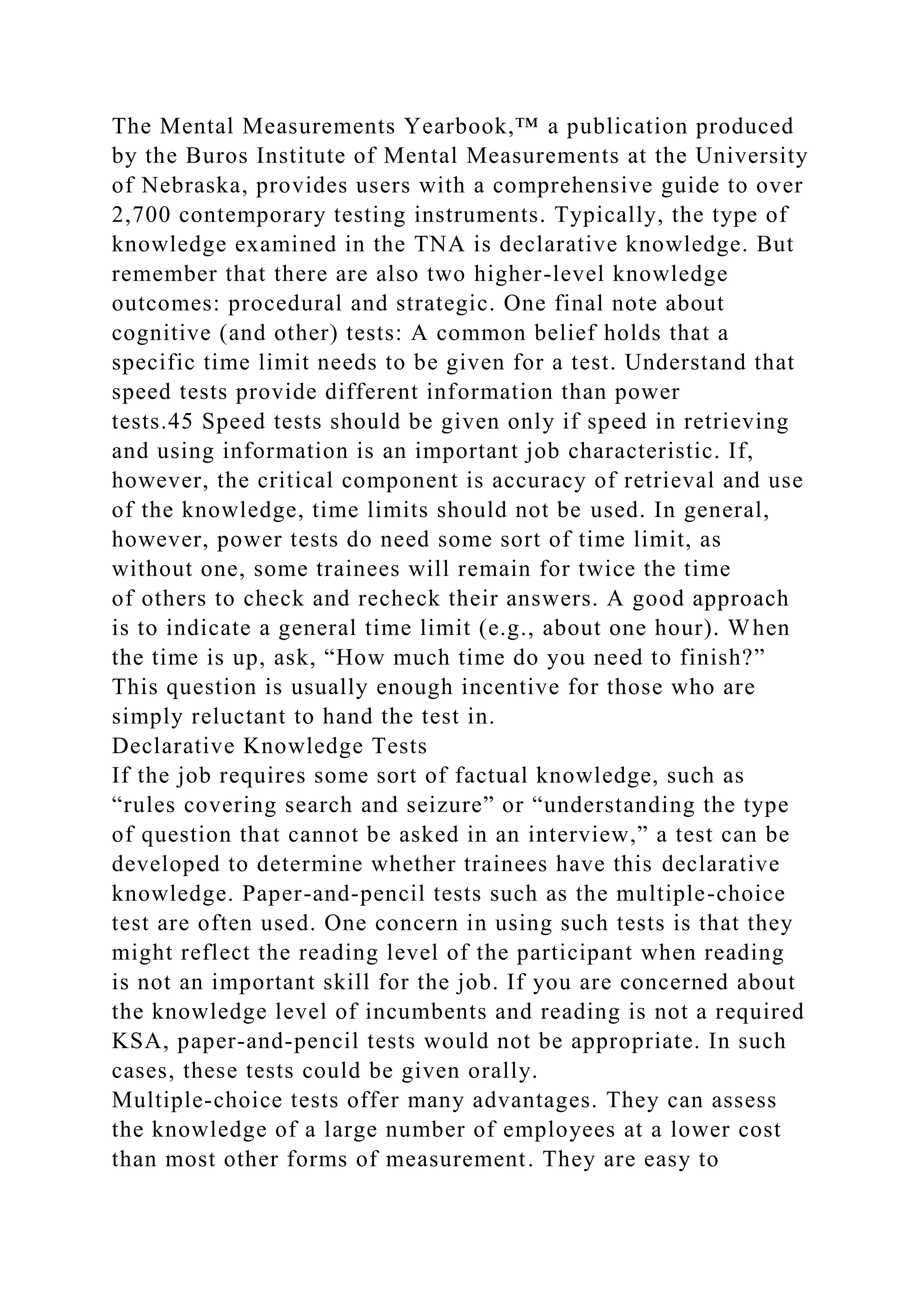
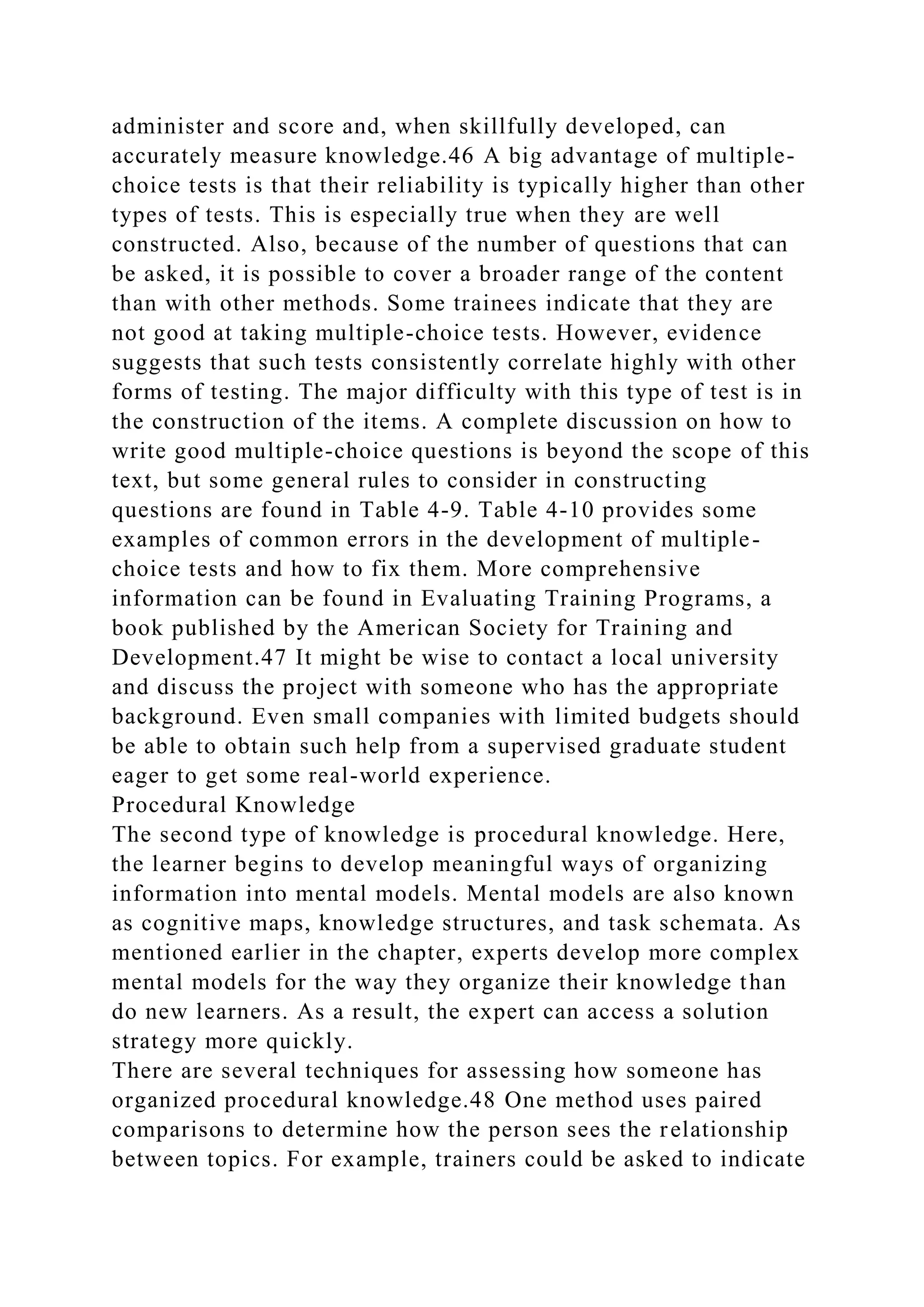
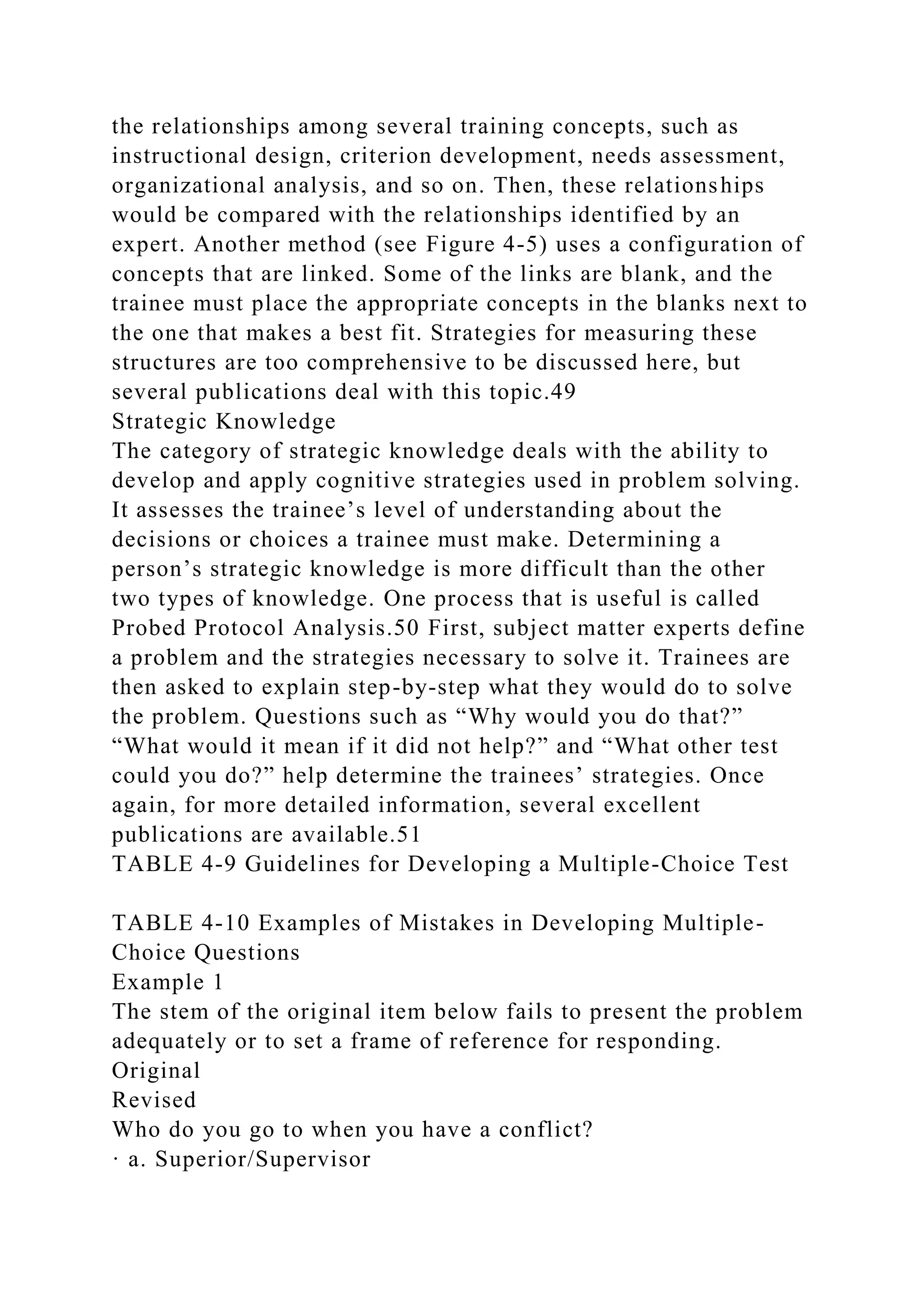
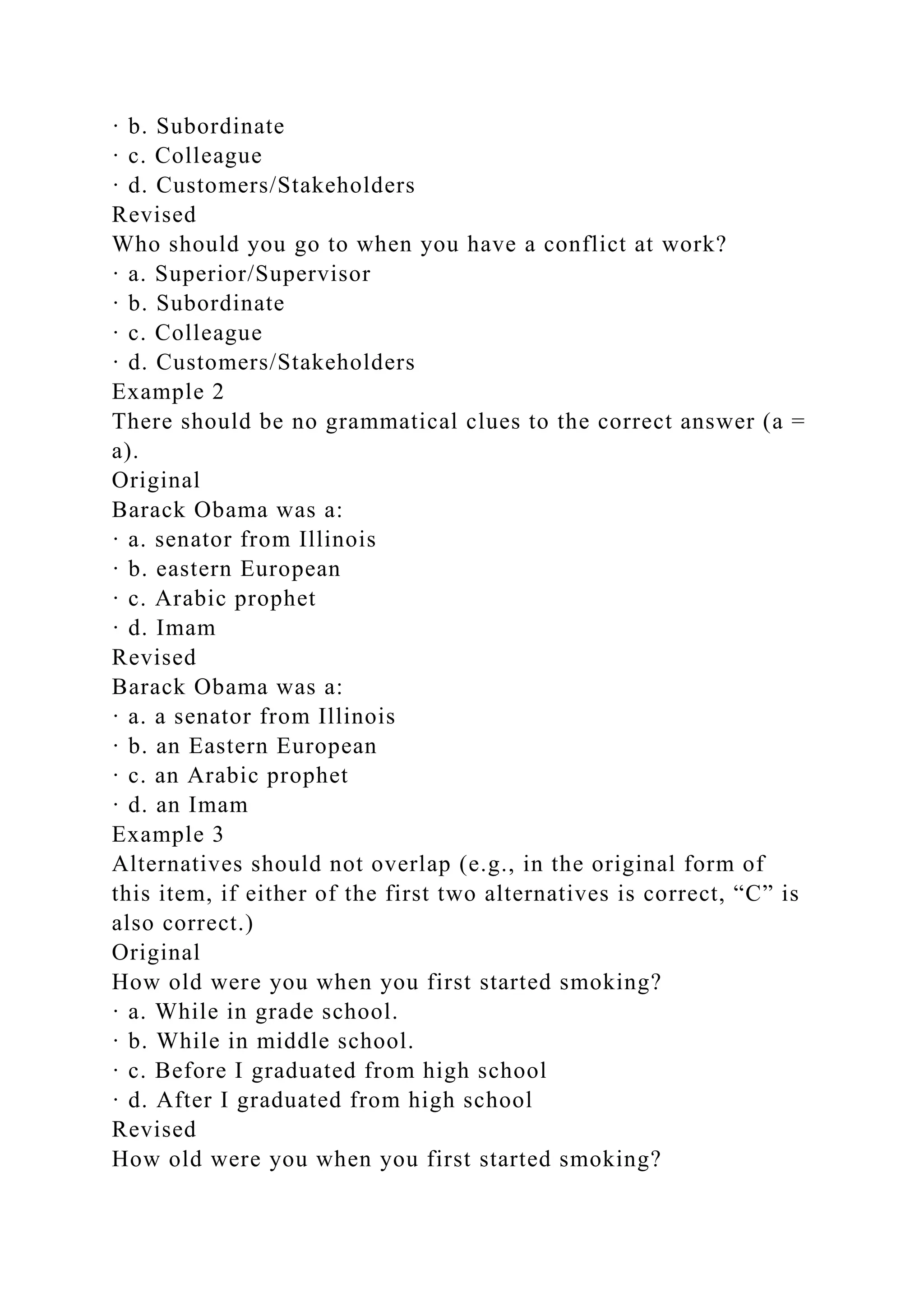

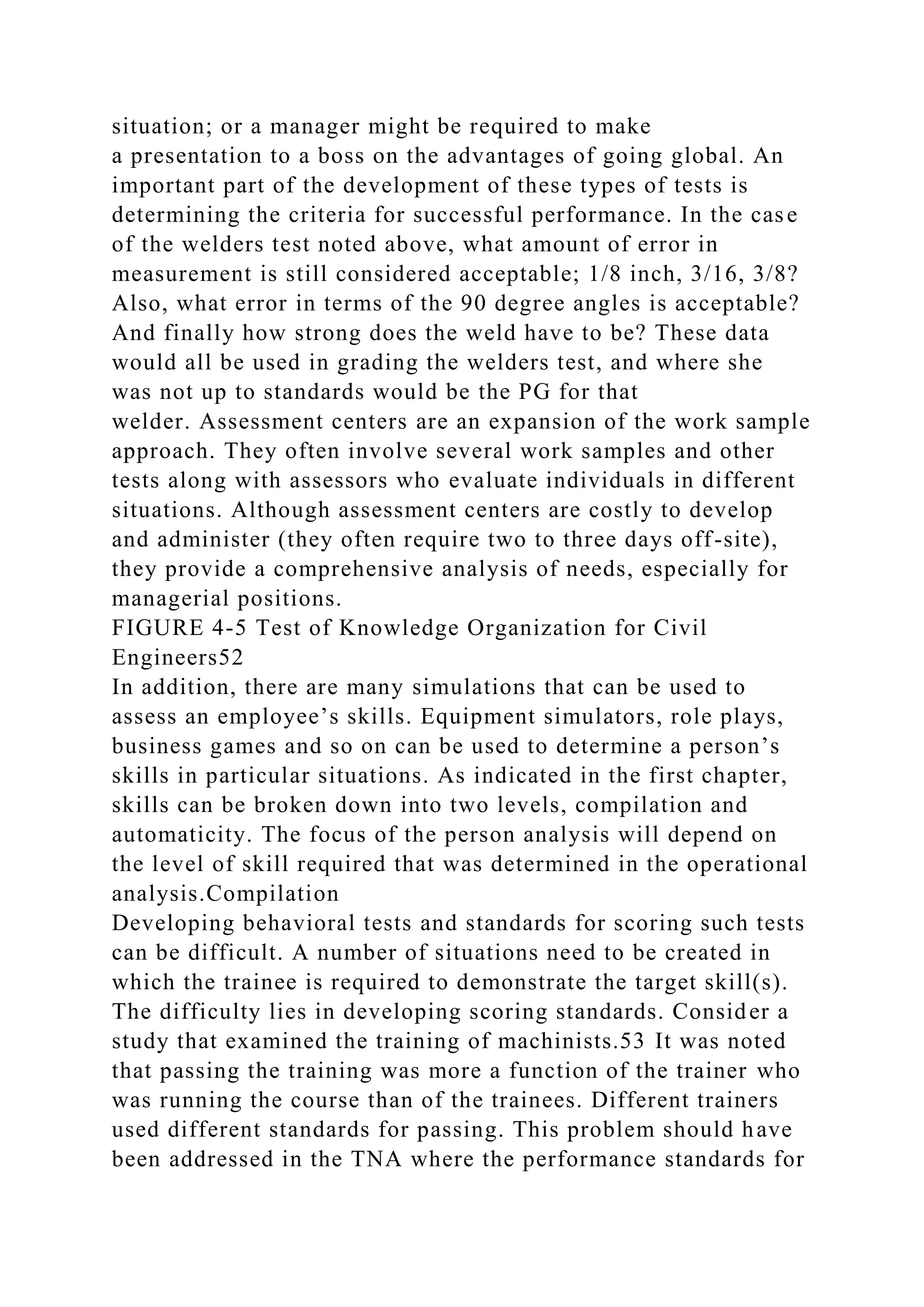
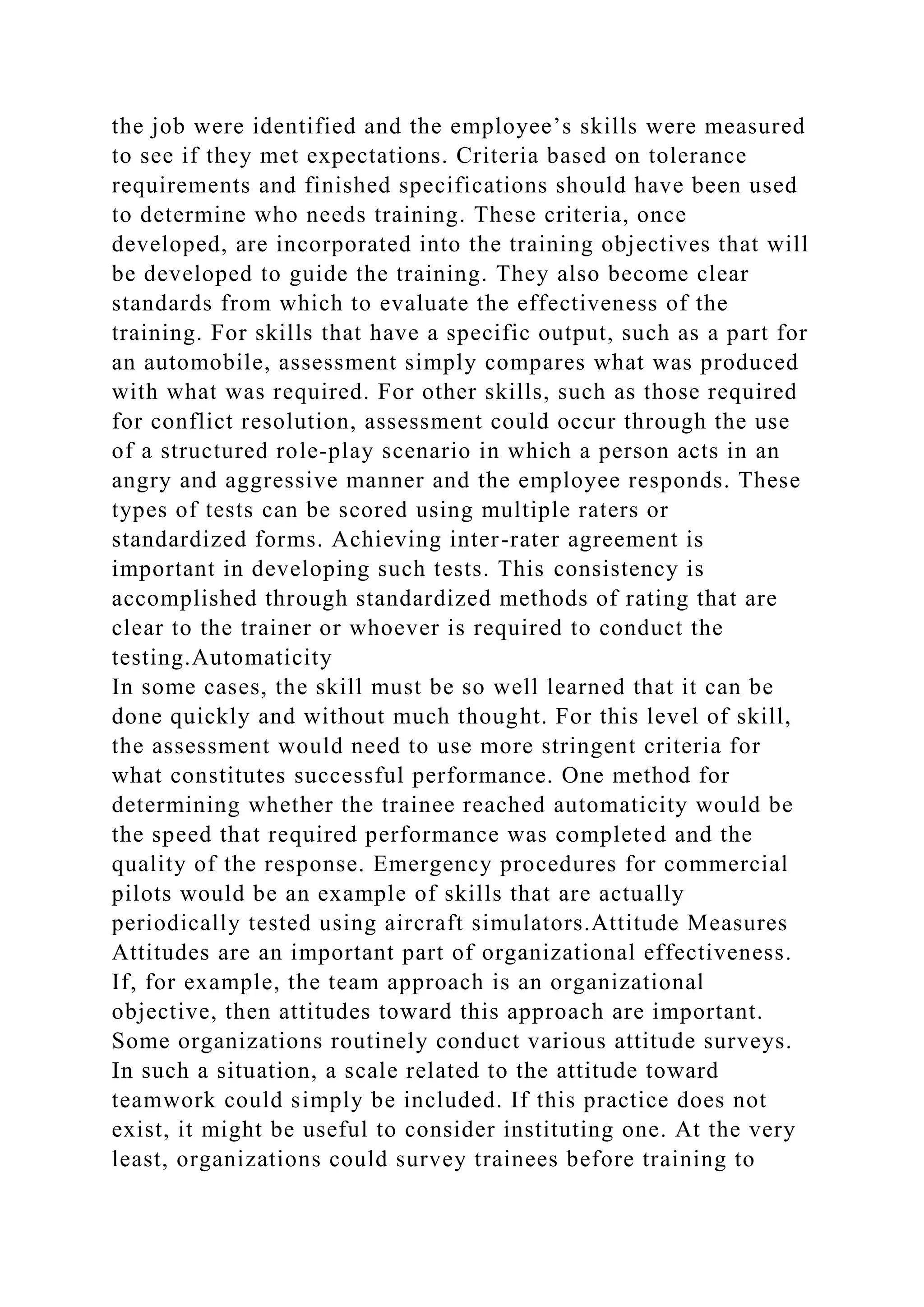
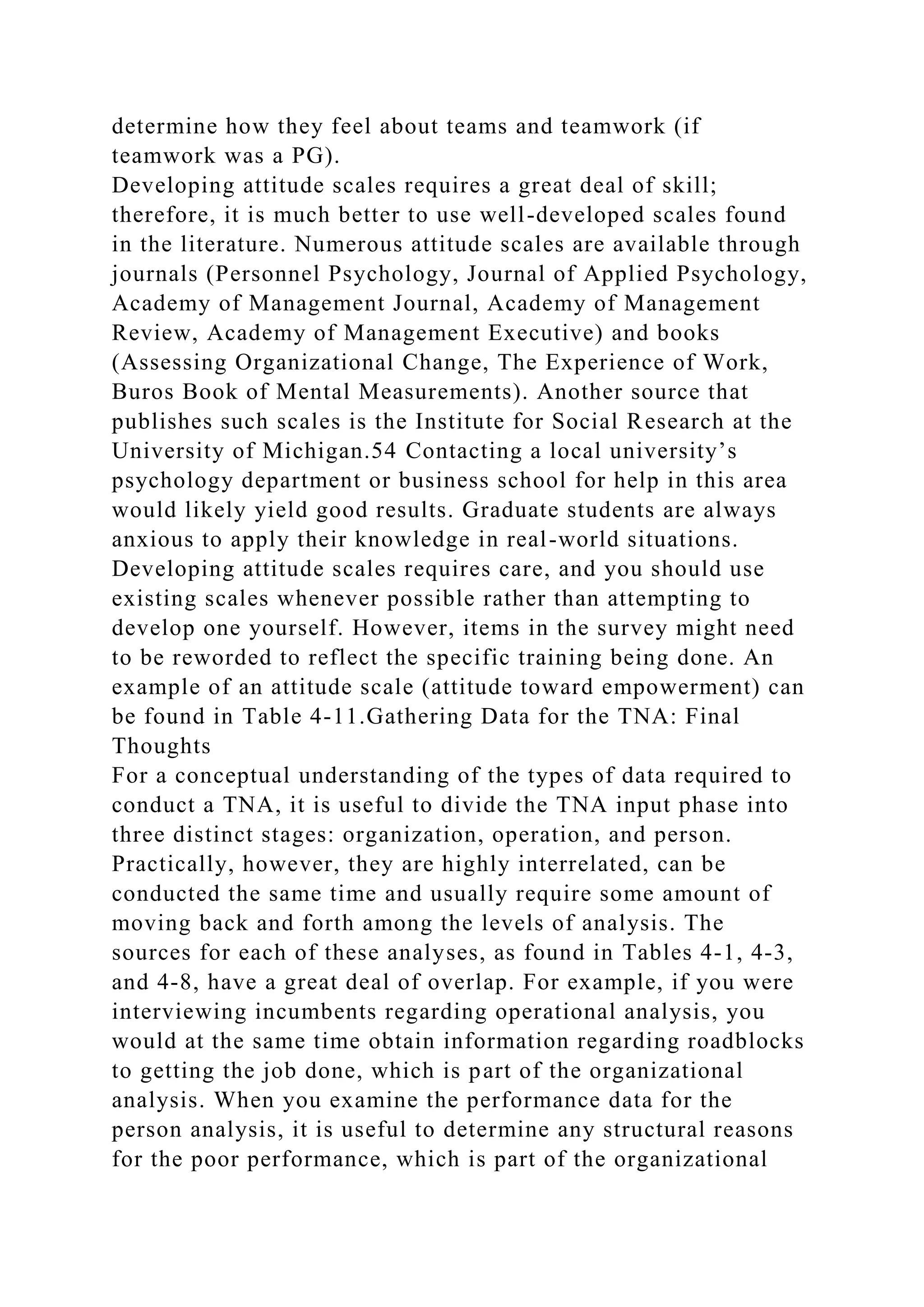
![analysis. This gathering of multiple levels of information at one
time is again illustrated in the Fabrics, Inc. example at the end
of this chapter.
Once the operational analysis data determine the KSAs for the
job, the person analysis will determine whether each of the
relevant employees possesses these KSAs. For those who do
not,
the PG between what is required and what the employee has
serves as the impetus for designing and developing necessary
training.TABLE 4-11 Examples of Attitude Questions
Attitudes toward Empowerment
Please indicate the degree to which you agree or disagree with
the following statements.
1 = Strongly disagree
2 = Disagree
3 = Neither agree nor disagree
4 = Agree
5 = Strongly agree
· 1. Empowering employees is just another way to get more
work done with fewer people. [Reverse scored]
¯1
¯2
¯3
¯4
¯5
· 2. Empowering employees allows everyone to contribute their
ideas for the betterment of the company.
¯1
¯2
¯3
¯4
¯5
· 3. The empowerment program improved my relationship with
my supervisor.
¯1
¯2](https://image.slidesharecdn.com/busi444casestudyinstructionstheanswerstoeachcasestudymu-221031163259-4f26738a/75/BUSI-444Case-Study-InstructionsThe-answers-to-each-Case-Study-mu-docx-61-2048.jpg)

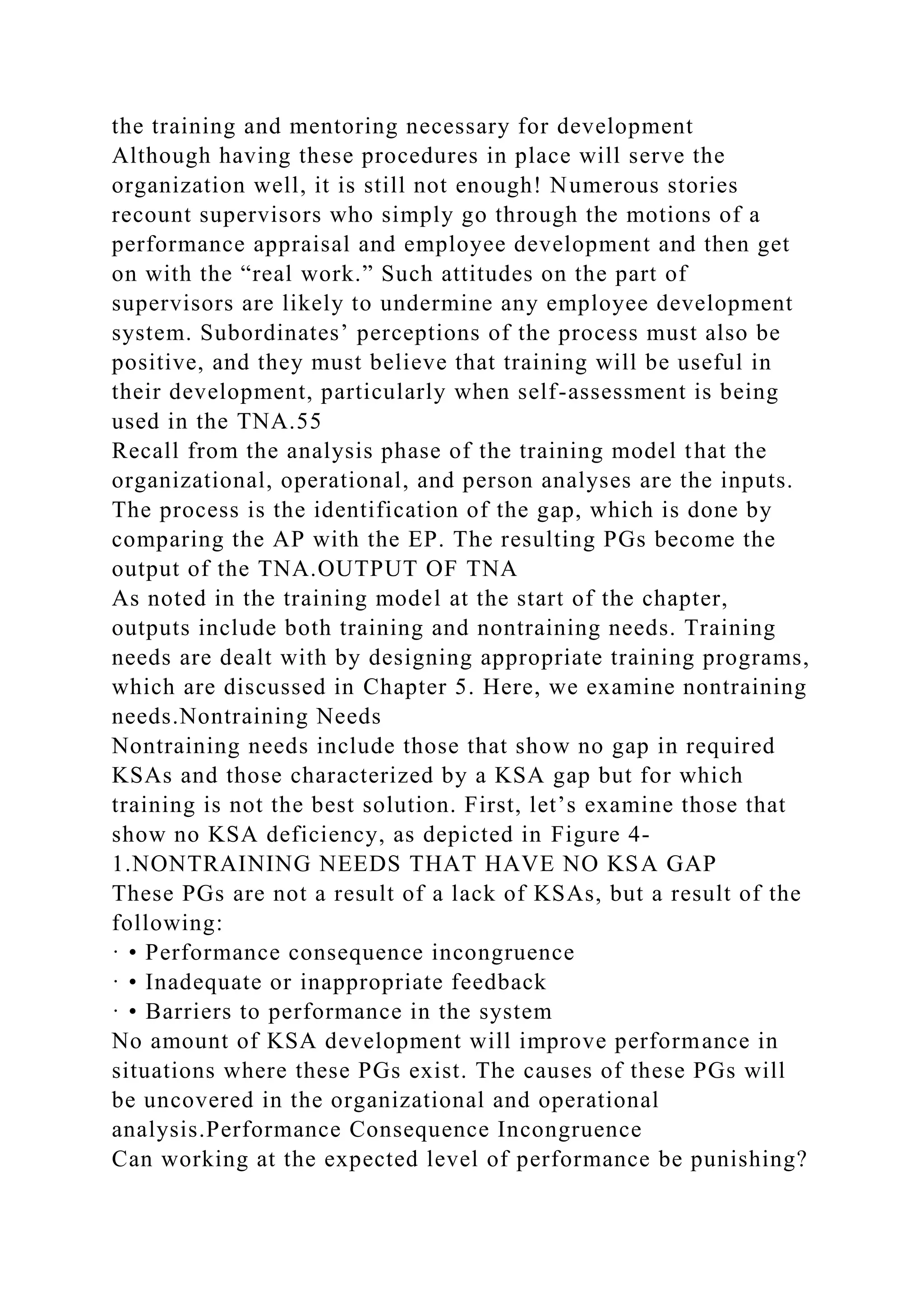
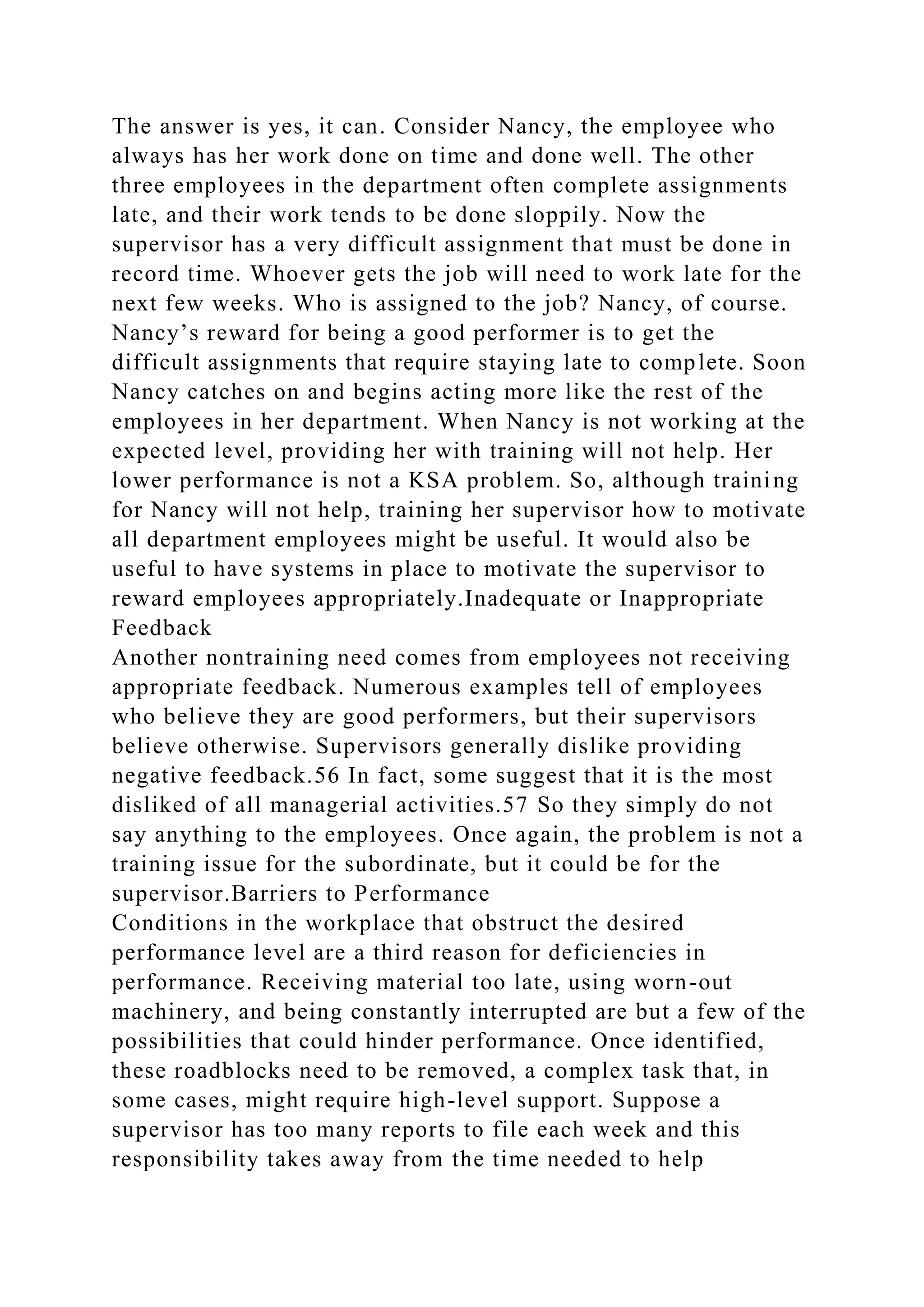
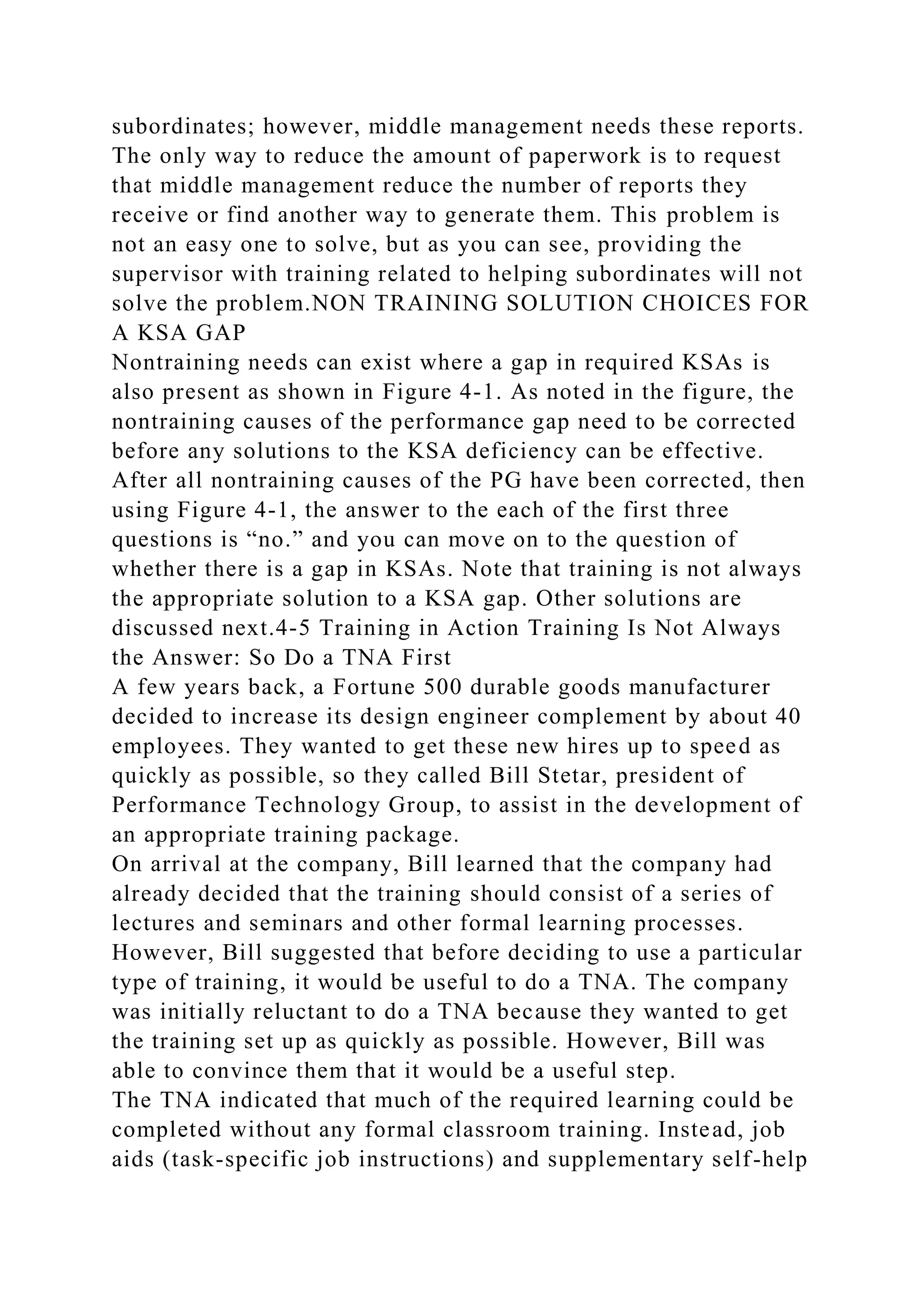
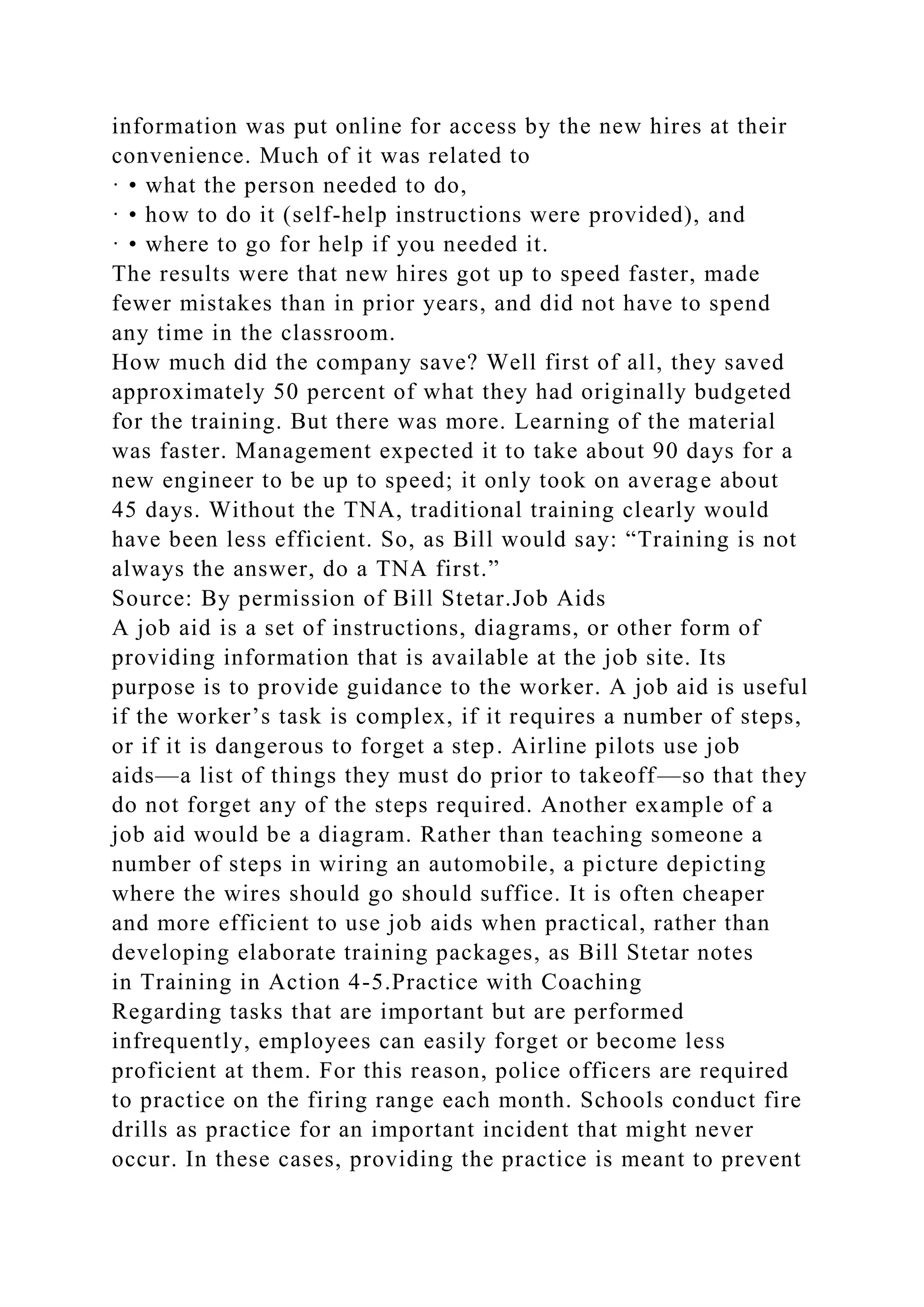
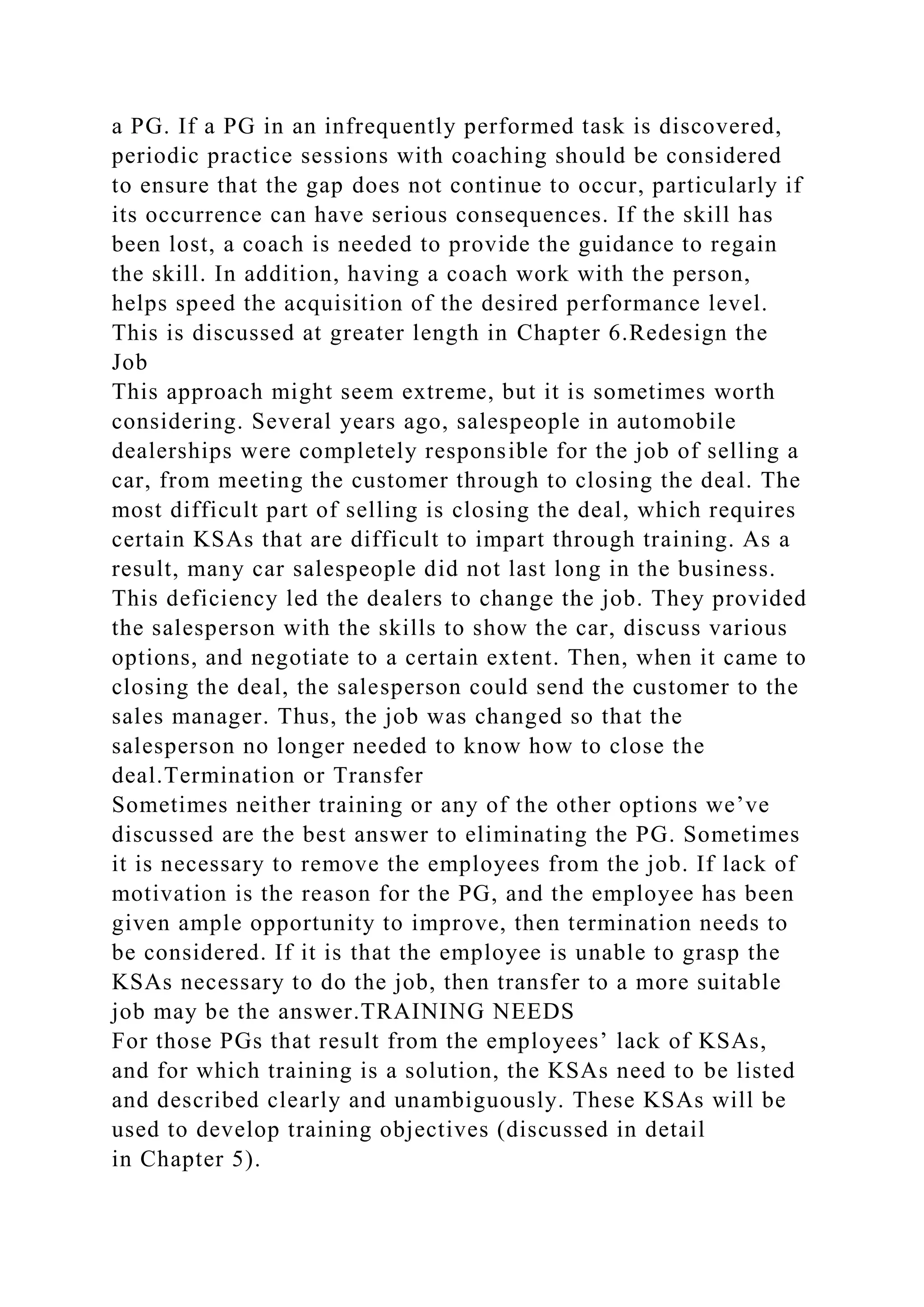
![It is important to understand that in most cases, even if a
training need is identified, nontraining needs are usually also
present. We cannot emphasize enough the importance of these
nontraining factors. Even if training results in the employee
gaining the required competencies, these will not be used on the
job, unless any nontraining causes of the performance gap have
been removed. For training to be successful and transferred to
the job, these “nontraining” factors must be aligned with the
training and the desired employee performance. As Robert
Brinkerhoff, an internationally recognized expert in training
effectiveness said,
· The reality is that these non-training factors are the principle
determinants [for transfer of training], if they are not aligned
and integrated they will easily overwhelm the very best training
[inhibit transfer]. . . . Best estimates are that 80 percent or more
of the eventual impact of training is determined by performance
systems factors [nontraining needs].58 (p. 304)APPROACHES
TO TNA
Now that we have examined the general approach of conducting
a TNA, we examine more closely the distinction between
proactive and reactive approaches.Proactive TNA
The proactive TNA focuses on future HR requirements. From
the unit objectives resulting from the organization’s strategic
planning process, HR must develop unit strategies and tactics
(see Figure 2-1 on page 28) to ensure that the organization has
employees with the required KSAs in all of its critical jobs.
Two approaches can be taken to develop the needed KSAs:
· 1. Prepare employees for promotions or transfers to different
jobs.
· 2. Prepare employees for changes in their current jobs.
An effective, proactive procedure used for planning key
promotions and transfers is succession planning. Succession
planning is the identification and development of employees
perceived to be of high potential so they can fill key positions
in the company as they become vacant. The first step in the
development of a succession plan is to identify key positions in](https://image.slidesharecdn.com/busi444casestudyinstructionstheanswerstoeachcasestudymu-221031163259-4f26738a/75/BUSI-444Case-Study-InstructionsThe-answers-to-each-Case-Study-mu-docx-68-2048.jpg)
